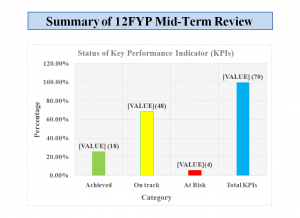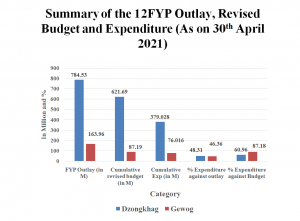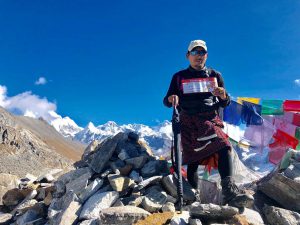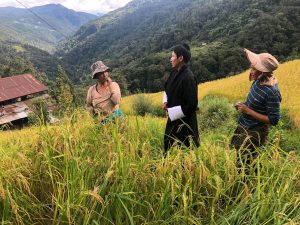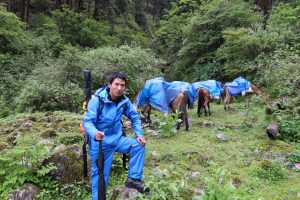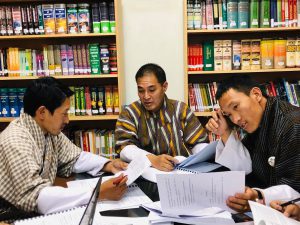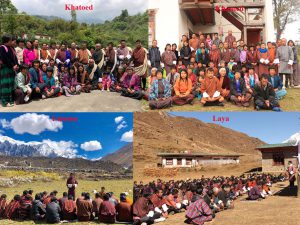The Government cannot continue to be a party to UNCAC until Legal Anomaly is resolved
- July 8th, 2022
- 1,387 views
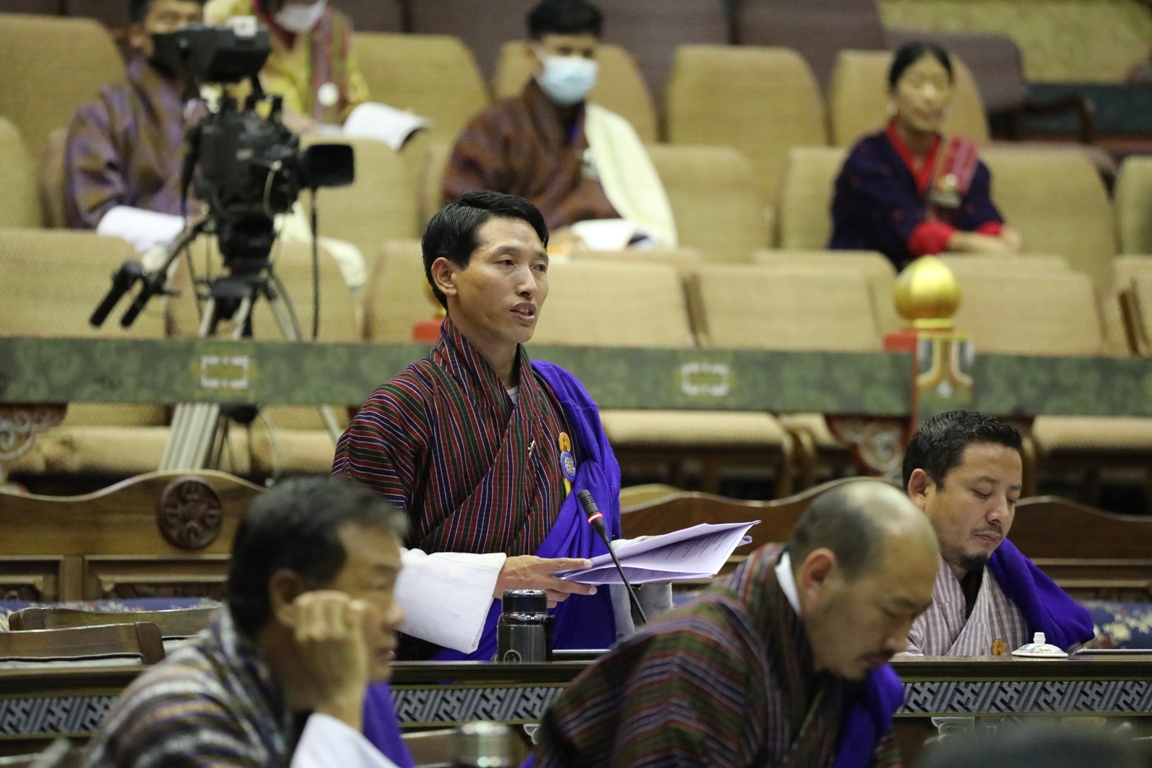
Context
The United Nations adopted the United Nations Convention Against Corruption (UNCAC) on 31st October 2003. UNCAC is the only globally binding legal instrument against Corruption. Bhutan became a signatory to the UNCAC in 2005. The two Houses of Parliament ratified the UNCAC with reservation to Paragraph 2 of Article 66 in 2015. On 26th May 2016, Royal Assent was granted to accede to the UNCAC, with reservation on Article 66 (2).
Article 66 (2) concerning dispute settlement states, “Any dispute between two or more States Parties concerning the interpretation or application of this Convention that cannot be settled through negotiation within a reasonable time shall, at the request of one of those States Parties, be submitted to arbitration. If, six months after the date of the request for arbitration, those States Parties are unable to agree on the organization of the arbitration, any one of those States Parties may refer the dispute to the International Court of Justice by request in accordance with the Statute of the Court.”
Subsequently, on 21st September 2016, the Minister of Foreign Affairs (MoFA), during the tenure of the Second Government, deposited the instrument of ratification with the Office of the Secretary-General of the United Nations. However, while depositing the instrument, the Ministry of Foreign Affairs failed to register the reservation. Following the lapses, MoFA requested the UNSG to accept the late registration of the reservation. In accordance with the depository practice, two member nations, namely Finland and the Netherlands, objected to the late registration of Bhutan’s reservation to Article 66 (2). Several unsuccessful attempts were made through bilateral arrangements to persuade the two nations to withdraw their objections.
Having failed to register the reservation, the Minister of Foreign Affairs tabled the amendment to UNCAC during the 5th Session of the Third Parliament to revoke the reservation to Article 66 (2). The National Assembly deliberated on the UNCAC (Amendment) and adopted the Convention by revoking the Parliament’s earlier reservation. The UNCAC (Amendment) was sent to the National Council for deliberation.
The National Council deliberated on the UNCAC (Amendment) Bill during its 28th Session. The House rejected the decision of the National Assembly to revoke the earlier reservation to Article 66 (2) and proposed to denounce and re-accede to the Convention with the reservation. The House also recommended that the Government fix accountability for the lapses.
During the re-deliberation of the UNCAC (Amendment) Bill, the National Assembly stood by its earlier decision and refused to accept the decision of the National Council.
Following the dispute between the two Houses, the Joint Committee on UNCAC (Amendment) was formed to discuss the Convention’s disputed clause.
The Joint Committee conducted several rounds of meetings, and after the review of all the documents submitted by the Ministry of Foreign Affairs and the Anti-Corruption Commission of Bhutan, the Joint Committee recommended:
- To denounce and re-accede to the Convention with reservation to Article 66 (2) of the UNCAC to safeguard the long-term national interest, uphold the rule of law, and protect the supremacy of Parliament.
- The Government to see where the lapses have occurred, fix accountability, and submit the action taken report to Parliament.
After a thorough deliberation in the House, the first recommendation of the Joint Committee was put to the vote by the Speaker. Out of 67 members present and voting, 33 voted in favor of the recommendation. While 30 members voted against the recommendation, another 4 members abstained.
As the first recommendation failed to obtain the required two-thirds majority of the total number of members present and voting, the amendment 𝒊𝒑𝒔𝒐 𝒇𝒂𝒄𝒕𝒐 stands rejected. Neither the Joint Committee nor the House proposed an alternative recommendation.
Therefore, per the Legislative Rules of Procedure 2017, such a Bill shall be declared a Dead Bill, and no Bill of such substance may be introduced in the Parliament that year.
Since the recommendation of the Joint Committee on the disputed clause of the UNCAC (Amendment) between the two Houses was rejected by the Joint Sitting of Parliament, the UNCAC, with reservation on Article 66 (2) duly ratified in 2015 by the Parliament, shall prevail as the binding legal instrument and deemed to be the law of the Kingdom as per Article 10 (25) of the Constitution of Bhutan.
The UNSG does not recognize Bhutan’s reservation to Article 66 (2) due to the failure to file the reservation on time, and this effectively implies non-recognition of Bhutan’s membership in UNCAC. Therefore, it should be noted that the Government cannot continue to be a party to the UNCAC without resolving the legal anomaly pertaining to Bhutan’s reservation on Article 66 (2) of the UNCAC.
Justification of the National Council’s Objection to the UNCAC (Amendment)
National Council rejects the amendment of the National Assembly to revoke the earlier reservation on Article 66 (2) of the UNCAC. It proposes to denounce and re-accedes to the UNCAC with the Reservations on Article 66 (2) to uphold the national interest for the following reasons:
- The decision will uphold the supremacy of Parliament and set a solid precedent to show that decisions of Parliament cannot and should not be revoked to cover lapses of any kind.
- The decision will enhance the Rule of Law and bring about transparency and accountability, strengthening good governance in the country. This firm decision taken by National Council will ensure that similar lapses never occur.
- Parliament’s firm and well-considered decision will cushion and protect the Executive, the Ministry of Foreign Affairs, and the Government from any political and diplomatic pressure the international community may exert on them. Therefore, this assertion of the supremacy of Parliament will protect Bhutan’s sovereignty.
- Acceding to the UNCAC with reservations is also keeping with the advice from the Technical Expert Team, the Opinion of the Office of the Attorney General, and the submissions of the Anti-Corruption Commission made to the House in the past with the primary intent of protecting the long-term national interest of the country.
- The fact that over forty nations (Including India, Kuwait, China, Singapore, Thailand, USA, etc.) have acceded to UNCAC with similar reservations on Article 66 (2) indicates that the reservation holds an intrinsic value that must be protected.
- While the process of denouncement and re-accession to UNCAC could impose additional costs and may impact the image of the country (as opined by MoFA and ACC), this cost would be worth protecting the integrity of parliamentary decisions and long-term national interest concerning international treaties.
- The process of denouncing and re-acceding to international treaties is neither unforeseen nor unprecedented. Denouncing treaties with the sole intention of re-acceding with the reservations to circumvent the prohibition of the latest formulation of reservations is enshrined in Article 19 of the Vienna Convention on the Law of Treaties. In fact, small countries like Trinidad and Tobago, Guyana, and Switzerland have availed this provision to protect their national interest and denounced and re-acceded with the sole intent to register reservations.
In summary, the instrument of ratification deposited by the Ministry of Foreign Affairs, without reservations to the Office of the Secretary-General of the United Nations on 21st September 2016, should be considered null and void as it is inconsistent with the Rule of Law. Therefore, UNCAC with reservation on Article 66 (2) should be upheld until the legal dilemma is resolved. Moreover, as proposed by the Hon’ble Speaker, the House directed the Government to implement the second recommendation and submit the report to the Parliament at the earliest.
References:
- National Interest Analysis of the UNCAC, 2021
- Report of the Joint Committee on UNCAC (Amendment), 2022
- National Council of Bhutan, 2022
Relevancy of Gaydrung amidst politics and RCSC reform
- May 2nd, 2022
- 1,765 views
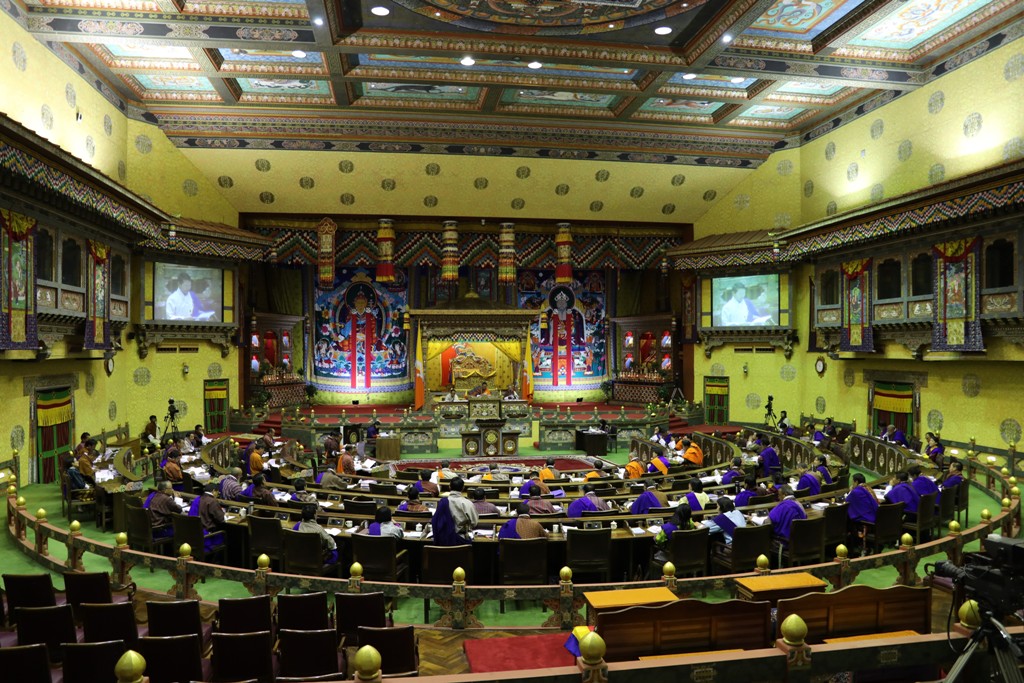
The Gewog Tshogde is in charge of recruiting and appointing Gaydrungs (Gewog clerks) according to the Local Government Rules and Regulations of 2012, and they are responsible for managing the affairs of their respective Gewogs.
Every Gewog should have an Administrative Officer (GAO), Accounts personnel, and Engineer, according to the Local Government (Amendment) Act 2014. The Gaydrungs, on the other hand, are not referenced in the Local Government Act nor recommended in the RCSC’s OD report. In fact, an Organizational Development (OD) exercise conducted by the Royal Civil Service Commission (RCSC) determined that the positions were not required.
There has been significant discussion about Gaydrung’s relevancy, as their roles might be handled by Gewog Administrative Officers and Accounts personnel. On the other hand, LG officials maintain that Gaydrung plays an indispensable role in public service delivery.
As a result of the aforementioned development, there is a discussion about the role of Gaydrung in the Gewog Administration’s functioning. Consequently, in 2019, the Ministry of Home and Cultural Affairs’ Department of Local Governance performed a study to offer evidence on the importance of Gaydrungs in the Gewog Administration’s functioning. The survey included representatives from 6 Dzongkhags, 12 Gewogs, 48 Chiwogs, and 480 households from across the country.
The study recommended that the post of Gaydrung be retained and regularized the Gaydrung post, which is the most viable and feasible solution at the moment. Further, the study recommended that Gaydrung’s post-qualification be fixed at Class 12 with proficiency in Dzongkha and good years of office management training.
However, the Royal Civil Service Commission (RCSC) and the Government decided to discontinue the post of Gaydrung after the recent local Government (LG) elections (April 6, 2022).
On the contrary, the Opposition Party accused the Government of breaching the National Assembly’s resolution, which was passed on January 16, 2019, and its subsequent commitment to Gaydrungs on their retention. Further, the Opposition urged the Government to honour the resolution of the Parliament and re-consideration.
However, the Royal Civil Service Commission shall promote and ensure an independent and apolitical civil service as per Article 26 (1) of the Constitution and shall function in accordance with the Civil Service Act as per Article 26 (10) of the Constitution. Moreover, The BCSR 2018 states that the authority for amendment and interpretation of any provision under the BCSR 2018 shall rest with the RCSC, and its interpretation shall be final and binding.
Therefore, the National Assembly’s resolution passed on January 16, 2019, to ‘Retain the post of Gaydrung under Gewog Administrations’ is inconsistent with the Constitution and shall be considered null and void as per Article 1 (10) of the Constitution. The Constitution is the source of law, and the governmental organs derive their powers from its provisions. They must function within the framework of the Constitution, and their actions must be consistent with the requirements of the Constitution. Moreover, the Parliament’s resolutions, except on legislative bills, international conventions and protocols, are not necessarily binding.
The following points are proposed for the Government’s kind consideration:
- The Government may consider amending the Local Government Act of Bhutan 2014 if the Department of Local Government’s (DLG) recommendation on the significance of Gaydrung in Gewog Administrations in 2019 is legitimate and urgent. However, a comprehensive review needs to be carried out by an independent institution to avoid a conflict of interest. Moreover, the previous study had limited sampling sizes of 6 Dzongkhags, 12 Gewogs and 48 Chiwogs only.
- If the Government is concerned about the capacity of local Government, it is strongly recommended that Section 265 of the Local Government (Amendment) Act 2014 be implemented, which mandates that every Gewog have an Administrative Officer (GAO), Accounts personnel, and an Engineer. This will strengthen the capacity of the LG functionaries and improve the efficiency of the public service delivery.
- Given the increased responsibility and budget at the local level, there is a need for a qualification requirement for local leaders. The present Government must demonstrate a strong political commitment to building the capability of our future LG leaders. The Gyaldrung job may become obsolete if all LG has a minimum qualification. Therefore, the Government may consider amending the Local Government Act of Bhutan 2014 to establish qualification requirements for LG leaders.
Last but not least, I applaud the Government’s recent decision to provide Gaydrungs with the special retirement scheme—a one-year basic salary starting from April this year and leave travel concession (LTC) and leave encashment in recognition of their dedicated service to the country as per the Pay Revision Act of 2019.
Disclaimer: The views and opinions expressed in this article are those of the author and do not necessarily reflect the official position of the affiliated organization.
Concerns on the fuel price hike
- March 17th, 2022
- 2,229 views

The fuel price has hiked more than doubled since May of last year, and the price of fuel is expected to continue until the global demand and supply stabilize. Prices are currently at a record high of Nu 95.19 a litre of petrol and Nu 100.55 a litre for diesel in Thimphu (As of 17-Mar-2022). Prices for a litre of petrol and diesel had spiked by more than 100% compared to May of last year when a litre of petrol was Nu 45.43 and a litre of diesel then cost Nu 37.88.
The considerable increase in fuel prices last year, according to economists, is attributable to the oil-producing countries’ reduced oil production. However, the current spike is partly due to the sanctions that the United States and other Western countries have imposed on Russia for its invasion of Ukraine. Severe sanctions on Russia aim to isolate the country and create a deep recession, but people worldwide will also feel the economic fallout.
Therefore, more attention needs to be paid to this issue because the fuel price increases have a cascading effect on overall commodity prices due to increasing transportation costs. Rising fuel prices affect those who own vehicles and those who do not. Consumers suffer more than suppliers of goods since rising fuel costs raises the cost of items supplied, and suppliers pass on most of the cost increases to consumers through higher prices. Suppliers are also impacted because they will not be able to sell as much at the higher price. Poor people in society, such as low-paid workers, daily wage field workers, and farmers who need to buy commodities, are the worst affected.
This is a topic of pivotal national importance; since we import oil and its global prices are impacted by a highly volatile market, our country is highly vulnerable to the balance of payment concerns since the pandemic has already impacted our economy. Further, when the cost of living increases, real income declines, and unemployment and poverty rates may rise if the Government does not act promptly.
Our GDP growth recorded an all-time low of -10.08 per cent in 2020, and the GDP for 2021 is expected to be around 3.5 per cent. Both Royal Monetary Authority (RMA) and the World Bank projects Bhutan’s GDP growth of more than 5 per cent in the financial year 2021-22 as the industrial and services sectors are expected to recover gradually.
With this backdrop, I would like to lay down a few recommendations for the Government’s urgent interventions:
- The Government needs to develop a plan of action, strategies, and policies to overcome the impact of rising fuel and overall prices at the micro and macro levels through price control mechanisms and providing subsidies to the oil distributors.
- The Government needs to reduce the vulnerabilities of the balance of payment due to global prices by revisiting the current economic contingency plans, improving market outcome, and preventing market failure caused by externalities.
- If the fuel price rises distort market dynamics and lead to hyperinflation (more than 50%), the Government needs to support poor people in society, such as low-paid workers, daily wage field workers, and farmers.
- It is high time that the Government needs to construct an Oil Reservoir where we can stock up when the Oil price falls below the average price and distribute when there are sudden hikes in prices like today.
Effective Civil Service Reform in Bhutan
- November 25th, 2021
- 6,731 views
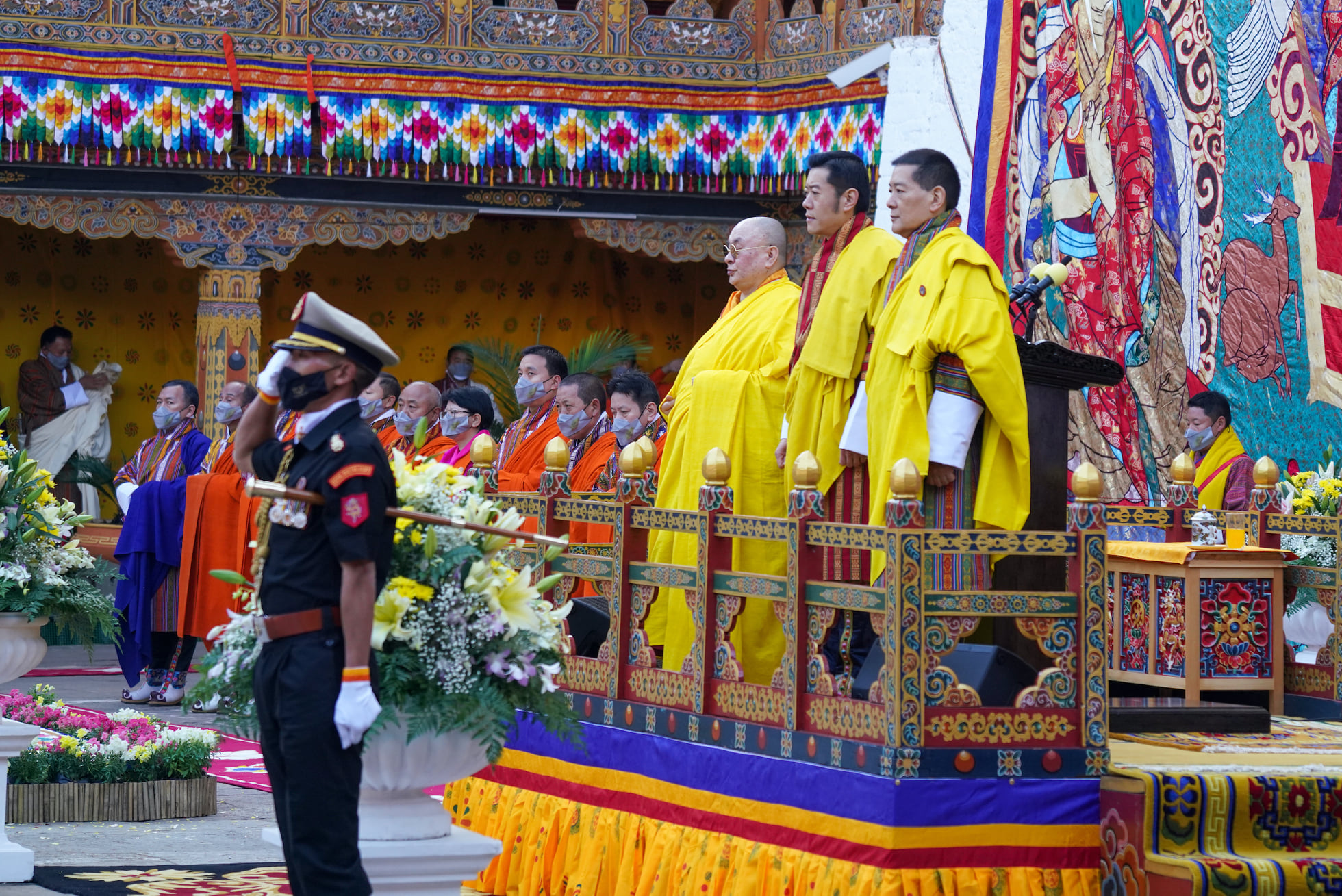
His Majesty The King issued Royal Decree for Civil Service Reform during the 113th National Day celebrations in Punakha (Picture Courtesy: HM’s Facebook Page).
Since the establishment of the RCSC in 1981, several reform efforts have been made to improve civil servants’ competencies and performances. Nevertheless, the core impediments against developing a more professional and efficient bureaucracy remain entrenched in the system. Although the civil servant to population ratio is 1:25 as of 2019, inefficient service delivery has become an impediment to our national development and progress. This is evident from the Royal Kasho on Civil Service Reform issued to the RCSC during the 113th National Day Celebration. As His Majesty, the King desired, we must prepare for our future and adapt to the globalized world by capitalizing on being a small nation’s strength and opportunities.
Therefore, this study explores how our government could initiate civil service reform to achieve greater efficiency, effectiveness, and responsiveness towards public service delivery.
Why Civil Service Reform?
Recent studies have indicated that governments worldwide continuously aim to improve public service delivery, accountability and transparency to respond to citizens’ needs. Even governments with a high standard of public service delivery are under constant pressure to improve continuously (World Bank, 2020). Similarly, Kazakhstan’s government has developed a professional public workforce to improve its administrative efficiency and public service quality (OECD, 2018). Likewise, Xiaoqi (2012) highlighted that civil service reforms in China aim to promote administrative efficiency and help policymakers strengthen their control over the civil service to enable China to regulate and manage its increasingly complex economy and society. Moreover, civil service reform in ASEAN member countries concluded that reforming the public sector can narrow the government’s gap by creating an efficient and responsive public sector (Kim & Araya, 2012).
Some authors have also suggested that an efficient, transparent, responsive, and accountable public administration is paramount for a nation’s proper functioning and the primary means of achieving government strategies (UNDP, 2015). The literature review shows that governments have to reshape public sector leadership to deal with new challenges (OECD, 2001). Furthermore, the research concludes an analysis of 14 countries’ experiences to reduce public expenditures, improve policy responsiveness and implementation, improve government as an employer, improve service delivery, and build public and private sector confidence (Manning & Parison, 2003).
Obongo & Wilkins (2014) argued that governments worldwide have reacted to unprecedented economic challenges and rapid political and public expectations changes over the past two decades. This is evident from the OECD’s publication that Citizens’ rising demands and expectations concerning public services’ quality, increase pressure on the public administration to improve its efficiency and responsiveness and be innovative flexible in responding to longer-term issues (OECD, 2010).
Best Practices & Lessons Learnt
Singapore is leading all the ASEAN member countries regarding government effectiveness, control of corruption, and the rule of law. This is because its reform programs mainly target solving specific problems, a high standard of accountability to the government, and political leadership (Kim & Araya, 2012). Moreover, Singapore’s civil servants are one of the highest-paid to attract the most highly qualified candidates, encourage their retention, and deter any tendency towards personal corruption (IPPR, 2013). China’s experience also follows this in managing and reforming its civil service model for other Asian countries because of the institutionalization of civil service recruitment and competition and merit-based promotions, the instalment of transparency and predictability into the public personnel management system, and government promotion officials’ accountability as well as public participation (Xiaoqi, 2012). The experiences of Japan and Kazakhstan offer similar insights (Aoki, 2015; OECD, 2018).
There exists a very extensive literature on this issue and the majority of prior research indicated that the civil service’s effective performance depends on merit as the basis of recruitment, selection, pay-scale, performance appraisal and promotion and retention practices. Civil servants need practical training and career development, which would result in better organizational and individual performance. Consequently, successful reforms in these areas can substantially increase public service effectiveness and efficiency (OECD, 2001; Iqbal & Ahmad, 2006; World Bank, 2008; UNDP, 2015b). Therefore, reform initiatives could be prioritized within three main areas: delivery excellence, service-oriented civil servants, and effective and efficient, organizations critical to improving overall public services (World Bank, 2020). In contrast, Repucci (2014) argued that the civil service reform generally includes reforms in remuneration, human resources, downsizing and operational efficiencies.
The research indicated that an essential part of effective and accountable public-sector management is transforming available resources into maximum impact following political priorities (MoFA, Denmark, 2007; Manning & Parison, 2003). There is a need to change the government’s role from the regulator to the facilitator to progress the delivery of services to the people (Iqbal & Ahmad, 2006).
Reform Challenges & Way-forward
Although most countries introduced civil service reform programs to improve public service delivery, they have faced challenges such as the need for resources and adequate human capital, lack of willingness to change and weak monitoring processes, and strengthening the communication and understanding of the reform objective and more participation of citizens and civil society (Kim & Araya, 2012).
Thus, the future civil service reform needs to consider developing competency management, investments in its senior civil service system and developing a performance culture to ensure these systems have a real impact in professionalizing the civil service and developing greater efficiency and performance (OECD, 2018).
When designing CSR programs, the main issues commonly faced are training, career Vs. position system, civil service management arrangements, pay and compensation, gender equity and performance management, politicization and patronage (UNDP, 2015). In a series of analyses and reports, the World Bank recognized the enormous challenge of civil-service reform operations, and it has recognized that success has been limited (Shepherd, 2003).
In this regard, Repucci (2014) suggested a broad framework when designing and implementing reforms. The challenges related to the context in which civil service reforms occur and how practitioners can overcome them are the importance of local context, political will and local ownership, weak institutions, systems of patronage, the long‐term nature of reform and sustainable reform. The challenges related to practitioners’ processes and procedures when implementing reforms are prioritizing reform, participatory processes, donor coordination, and the debate between comprehensive and incremental reform (Repucci, 2014; Obongo & Wilkins, 2014).
Therefore, Polidano (2001) emphasized that the strategic and tactical choices can determine the success of the design and implementation of civil service reform. Keeping the scope of change narrow, limiting aid donors’ role, and reform leadership are crucial factors for successful civil service reform. In summary, successful reform requires focus, the mobilization of resources, incentives, persistence and a strategy that puts reform on the political agenda (OECD, 2005).
Analysis: Local Context
The analysis was carried out based on worldwide governance (service delivery) indicators using the Percentile rank method (Daniel et al., 2010).
Effectiveness of Government captures perceptions of the quality of the civil service or public services. The study finds that the government’s effectiveness has a significant positive impact on a country’s growth performance and is associated with higher GDP growth rates over time (Han et al., 2014).
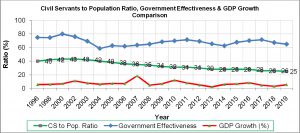
Figure 1: Government Effectiveness (Source: NSB and RCSC).
The strength of the civil service in Bhutan as of 2019 end was 29,442 (Annual Report, 2019). The civil servant to population ratio is 1:25 as of 2019 compared to 1:40 in 1996. Although the civil service size has almost doubled over the last two decades, the government effectiveness has declined to 64.90% (2019) from 74.86% (1996), with an average of 68.36%. Furthermore, the average GDP growth rate is 7.06%, with the highest growth rate observed in 2007 at 18.36%, mainly due to the commissioning of the Tala Hydropower Project (Figure 1).
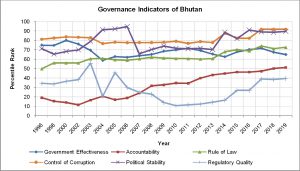
Figure 2: Governance Indicators (Source: Worldwide Governance Database).
The effectiveness of the government has improved in recent years with an average of 68.36% (Figure 2) compared to most countries in the South Asia region. The government’s effectiveness is determined by the organizational environment (economic development & education status), organizational characteristics (size and diversity) and political characteristics. Therefore, the government effectiveness measures the perceptions of the quality of the civil service, the quality of public services, the quality of policy formulation and implementation, and the credibility of the government’s commitment to such policies and the degree of its independence from political pressures (Sánchez et al., 2013). Moreover, low productivity of the civil service due to low competency, lack of a proper performance management system, and low motivation affect the government’s effectiveness.
The World Bank’s report on the ease of doing business, 2019, which compares business regulation for domestic firms in 190 economies, placed Bhutan in the 81st position, down from 75th in 2018. Due to too much reliance on the bureaucratic procedures involved in both the civil service and public organizations. For instance, it takes 61 days to get an electricity connection in Bhutan, whereas it takes only 26 days in Singapore. Similarly, it takes 12 days and 8 procedures to start a business in Bhutan, whereas it takes less than 2 days to start a business in Singapore. Such lengthy processes may discourage FDI due to unnecessary procedures required in business setup and operations.
The Constitution guarantees citizens to select the government and provides avenues to air their opinions (including through free media) on how services are being delivered to them and hold to account those that provide such services. This is only possible when there is transparency in how the government operates. In recent years, accountability in Bhutan has been improving drastically, with a rank of more than 51% (Figure 2) compared to most countries in South Asia region except India.
The system of displaced complacency where the system is protecting bureaucrats more than bureaucrats protecting the system has resulted in the civil servants’ failure to adapt to the dynamic nature of development and service requirements over time (Kuensel, 2021). Although Article 26 (1) of the Constitution guarantees the RCSC discharge its public duties in an efficient, transparent and accountable manner, both the CSA 2010 and BCSR 2018 emphasize only the ethics and integrity of civil servants without providing ample legal procedures to fix the accountability (Tshering, 2020). The lack of clear direction on improving accountability has resulted in civil servants violating their ethics and integrity and officials abusing power in service delivery.
Both regionally and globally, the corruption level is perceived to be low in Bhutan, with an average of 81.84% (Figure 2). Recently published National Integrity Assessment 2019 indicates that the experience of corruption in service delivery is minimal, but the perception of corruption in favouritism is prevalent in public service delivery (ACC, 2020). The lack of transparency and e-services; people availing services from the agency are making payments in cash, kind, services or other forms of gratification to public officials.
Since 1907, Bhutan has enjoyed a stable political environment engendered by our successive Kings’ dedicated and selfless leadership. With the constant nurturing of democracy, political reforms have been introduced during the last 100 years of Monarchy, the latest being the adoption of the Constitution in 2008. Bhutan’s political stability is best among Asia’s countries, with an average of 78.79% (Figure 2).
However, the change of government every five years since 2008 also hindered development activities and impacted bureaucratic efficiency due to lack of continued political will and significant changes in policy as per the political ideology.
The RGoB’s ability to formulate and implement sound policies and regulations for promoting private sector development is fragile amongst Asia, with an average of 28.16% (Figure 2). The major challenge of private sector development is the lack of access to markets for our goods and services. Our economic dependence on a few sectors and the composition of firms and investments in developing new and existing markets have been less than optimal.
Recommendations:
Based on the study findings, to achieve greater efficiency and effectiveness, and responsiveness towards public service delivery, the following recommendations are proposed.
- Enhance the effectiveness of government through rightsizing the civil service, meritocratic approach to civil service employment, applicable performance management system, contemporary and effective HR policies, fair remuneration for civil servants, practical training and career development and strengthening ethical leadership.
- Improve public service delivery through transparency, professionalism and accountability.
- Strengthen mechanism to address accountability issues and provide clear direction for fixing accountability through stringent legislation and rules.
- Reduce corruption by fostering integrity in the system. Strengthening e-services for service delivery can help optimize HR and budget and assure transparency in public service delivery.
- Promote private sector development with an accessible market both within and abroad to reduce the burden on the civil service and the demand for civil service jobs through the formulation and implementation of sound policies and regulations. Moreover, change the role of the government of the regulator to the facilitator for effective public service delivery.
- Ensure strong political will and local ownership of successful civil service reform to put reform on the political agenda, engage the local government in the process, and help develop the approach for effective implementation of the civil service reform.
NB: The author declares that the material being presented in this paper is the author’s original work unless cited. The author reserves the rights of the content, and in the case of republication of the whole, part, or parts thereof needs to be acknowledged.
Why didn’t I support the Tobacco Control (Amendment) Bill of Bhutan 2021?
- July 5th, 2021
- 3,647 views
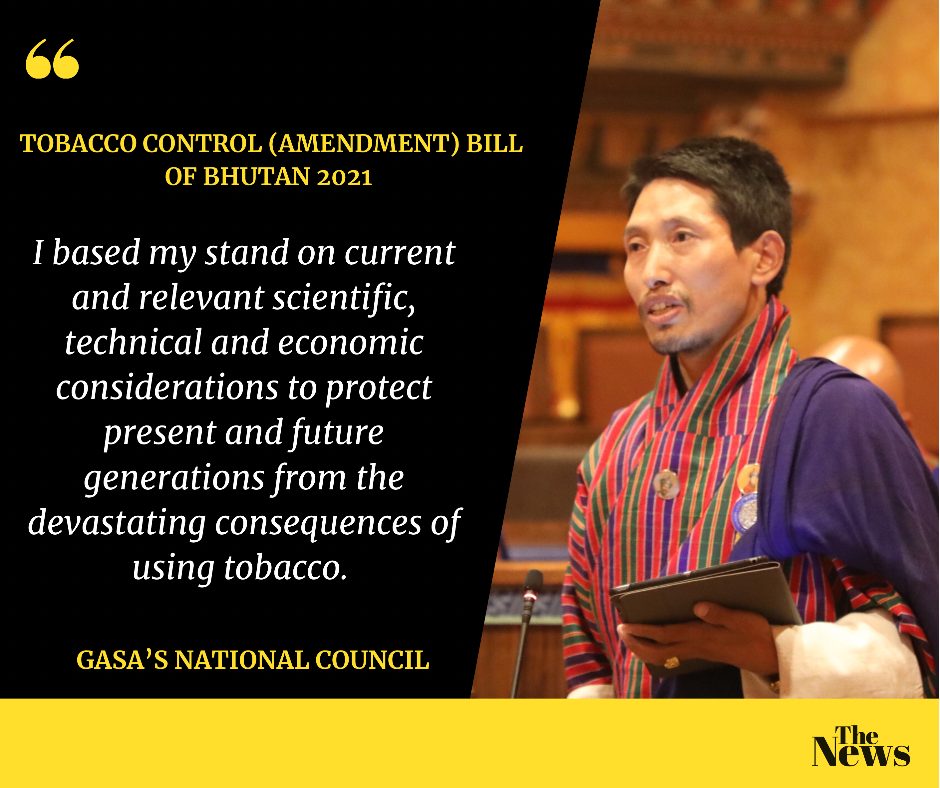
The parliamentarians in the past invested so much time and resources in deliberating the Tobacco Control Acts, but the recent amendment easily sailed through both the Houses of the Parliament without much debate, on the pre-condition that it is an “Urgent Bill.”
However, I could not support the amendment bill.
It was not because I am a superstitious or hypocrite. I based my stand on current and relevant scientific, technical and economic considerations to protect present and future generations from the devastating consequences of using tobacco. I always stand by my principle – the interest of the nation and the people. Furthermore, the Kantianism Theory rightly stated that an action is morally right if it is motivated by the goodwill that stems from a sense of duty.
Legal Framework
Since Bhutan ratified the World Health Organization’s Framework Convention on Tobacco Control (WHO FCTC) on 23rd August 2004, the country prohibited cultivation, harvesting, manufacture, supply, distribution and sale of tobacco products through the enactment of the Tobacco Control Act of Bhutan 2010 (amendment 2012 and 2014) and enactment of the Rules and Regulations 2011 (amendment 2013 and 2015).
The Parliament enacted the Tobacco Control Act in 2010 and deliberated on amendments in six parliament sessions, considering the following points.
- Concerning the physical health and well being of the people of Bhutan, which are important elements of the development principle of Gross National Happiness.
- Recognizing the harmful effects of tobacco consumption and exposure to tobacco smoke from a spiritual and social health perspective.
- Recalling that the National Assembly of Bhutan, during the 82nd session held on 12th August 2004, ratified the WHO Framework Convention on Tobacco Control (FCTC).
- Acknowledging that as a party to the WHO Framework Convention on Tobacco Control, Bhutan is implied by its provisions to implement it through national legislation and policies to fulfil the obligations, and
- To Ensure the effective control of tobacco and tobacco-related products
The banning isn’t a solution nor making tobacco readily available and affordable is a wise decision. The existing legislation ensures non-smoking areas, offences and fines for buying tobacco products, restrictions on advertisement and promotion, and procedures of import for personal consumption.
Health Implications
Tobacco continues to be the leading cause of preventable non-communicable disease, deaths and disability – affecting people in the most productive years. According to a World Health Organization report, the tobacco epidemic is one of the biggest public health threats: more than 8 million people die in a year worldwide. More than 7 million deaths were from direct tobacco use, while around 1.2 million deaths related to second-hand smoke.
WHO Office for Southeast Asia reported that tobacco kills an estimated 221 people each year in Bhutan. Among others, heart disease and stroke are the most common ways people die of tobacco use. Most people start early, increasing the risk of heart disease in younger people – the mean age of initiation stands at 18.9 years.
Therefore, Tobacco control is essential for preventing and controlling deaths and disabilities. More than 120,000 active tobacco users and those exposed to secondhand smoke are at increased risk of cardiovascular diseases.
Tobacco-related mortalities would rise while the average life expectancy of 71.46 would be reduced.
Evidence suggests that the severity of COVID-19 is higher among smokers. The COVID-19 fatalities are higher among people with pre-existing conditions, including non-communicable diseases such as cardiovascular and chronic respiratory conditions, cancer, and diabetes.
Therefore, the recent amendment of the TCA (2021) could also defeat the Ministry of Health’s strategy to gain herd immunity to combat the pandemic.
Economical Implications
Over 80% of tobacco users are in low and middle-income countries, where the burden of tobacco-related illness and death are the heaviest. Tobacco use leads to poverty by diverting household spending from basic needs to tobacco.
Findings from the 5th Global Youth Tobacco Survey revealed that more than one out of five students (22.2%) currently use tobacco products (2019). The prevalence of current cigarette smoking was 14.7%. 12.5% of students currently consume smokeless tobacco products.
Despite the stringent laws, tobacco consumption remained high in Bhutan, and youth start using it at a very young age. The recent amendment of the Tobacco Control Act has exposed an economically productive population (30–69 years) of 3,32 000 (41%) and a youth population (13–17 years) of 73 000 (9%) to the risk associated with tobacco use.
Therefore, the economic costs of tobacco use are substantial and include high health care costs.
Social and culture Implications
The recent amendment of the TCA (2021) will have an impact on individuals, families, and the nation. Research indicates that the poor are the ones who smoke the most. Tobacco worsens poverty among its users. Smoking accounts for much of the mortality gap between rich and poor.
Tobacco use imposes a heavy burden on society and families by – increasing illnesses and deaths – affect the economic situation of tobacco users and their dependents. There is also a threat to the environment.
Tobacco-related diseases kill one-fourth of smokers in the middle of their active life, which will seriously impact family members dependent on their income.
Treatment of tobacco-related illnesses is costly: heavy burden on governments’ finance; high-income countries account for 6-15% of annual healthcare cost.
Loss of productivity due to ill health: smokers have about 50% more sick days than non-smokers, more early retirement, lost working years from premature death.
Smoking has many adverse reproductive and early childhood effects, including an increased risk for infertility, preterm delivery, stillbirth, low birth weight and sudden infant death syndrome (SIDS). Women smokers often have symptoms of menopause about three years earlier than non-smokers.
The government’s recent decision on tobacco, making it freely available in the market is also against the Buddhist doctrine and religiously sensitive to discuss. Let the law of Karma take care of itself.
Will the TCA (Amendment) stop smuggling in the border areas?
The government presented the Tobacco Control (Amendment) Bill saying that tobacco smuggling cases had increased with the imposition of restrictions at the points of entry at the southern borders, and the smuggling caused security risks in the country.
The Southern Covid-19 Task Force had pointed out that tobacco smuggling was the main reason for the spread of Covid-19 in the southern dzongkhags, as presented by the Economic affairs minister. The government believes that tobacco will be readily available at lower prices if the Act is amended, and the smuggling cases will fall. On contrary, the minister also confessed that the Duty-Free Limited had not adequately served all consumers, although Bhutan Duty-Free Limited is one of the State-Owned Enterprises under the Ministry of Finance.
If what the government claim is valid, how about the drugs-related smugglings in the border areas?
A short comparative analysis between the tobacco and drugs smugglings shows equal security risks:
- In 2018 the Royal Bhutan Police (RBP) under Chhukha Dzongkhag registered 158 drug-related cases (TheBhutanese, 01/26/2019).
- Royal Bhutan Police (RBP) registered 192 drugs and tobacco-related cases and arrested 985 people in connection to 192 cases. Moreover, Thimphu police have registered 140 cases and arrested 336 people in connection to drug cases (TheBhutanese, 07/26/2020).
- Regarding tobacco, as per the Office of Attorney General, the number of tobacco-related cases had increased from 16 in 2019 to 42 in 2020 and 14 in the first six months of 2021. Moreover, about 307 cases of tobacco smuggling were recorded between 2020 and 2021.
Considering these facts, unless the government addresses the security risk posed due to drugs smuggling in the border area, the mere amendment of the tobacco control does not serve the intended purpose. However, I am neither recommending the government to legalize the drugs nor support the tobacco control (amendment) bill 2021.
Nevertheless, the amendment’s implications for the future of the nation and people are beyond impairment.
The government had also waived 100 percent tax with the amendment of the Tax Bill of Bhutan 2021, which makes the situation even worse. Tobacco will be readily available and affordable, turning it into everyone’s choice.
WE ARE SETTING HOME ON FIRE JUST TO KILL RATS!
Question to Minister of MoAF on Cordyceps Collection Issues
- May 29th, 2021
- 2,061 views
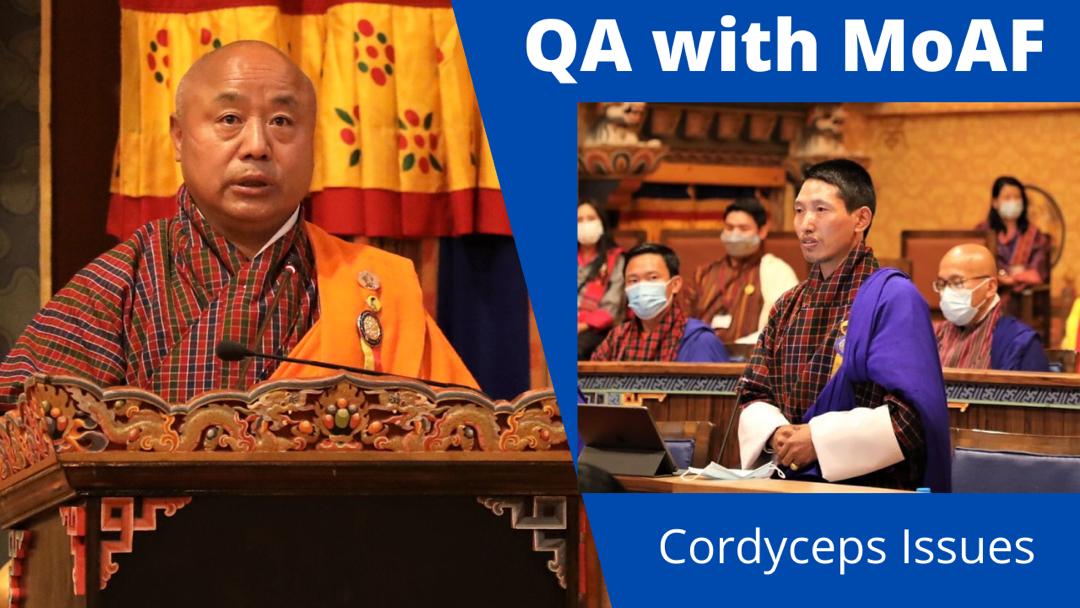
The legalization of cordyceps collection following the Royal Command issued by His Majesty the King in June 2004 has tremendously improved the living conditions of the people in highland dzongkhags (Kuensel, 2005). The slaughtering of yak for meat dropped, and equality improved among the highlanders, dispelling division between haves and have-nots in the community. The policy prevented poachers from across the border and encouraged highlanders to stay in their community, safeguarding our border areas in the north.
The Ministry of Agriculture and Forests (MoAF) presented to the National Council on the legalization of Paris Polyphylla and cordyceps harvesting period, amongst other issues (Royal Banquet Hall on 12th September 2018). During the consultation meeting, members asked about the possibility of providing adequate preparatory days to collect cordyceps. The officials of MoAF informed the committee that they would inform the House with proper research and accurate information. However, the committee did not receive any update so far.
Our consultations with Local Government Leaders of 14 gewogs in 7 dzongkhags found out those preparatory days differed from gewogs to gewogs. Some gewogs were provided only 2 days besides a one-month collection period.
On 30th May 2020, Dangchhu, Gangtey, Kazhi and Saephu gewogs had also requested an extension of collection days for two weeks.
The House acknowledges MoAF for extending two weeks to the highland communities in 2020 as the year was affected by late snowfall; unprecedented heavy rainfall was impacted by cyclone ‘AMPHAN’ and other extreme weather patterns (Ref.: MOAF/DDFPS/2020/333, dated on 2nd June 2020). The time extension was expected to help a highland society economically because cordyceps are the primary sources of livelihood.
Due to varying climatic condition, collectors need at least 2 weeks of preparation besides a one-month collection period. This will also address the conflict between the cordyceps collectors and forest officials in the field.
During the National Council’s review workshop at Institute for Management Studies Limited (IMSL) on 12th and 13th April 2021, these issues were highlighted to be genuine. The House directed the committee for the concerned Minister to update the status on the extension of preparatory days for cordyceps collection.
The cost of cordyceps started with less than Nu. 60,000 per kilogram in 2004 and now fetched an average of Nu. 1 million per kg (Cordycep Report, 2019). The records show that an average of 400 kg of Cordyceps Sinensis auctioned every year worth more than Nu 200 million. It is one of the export products and contributed more than 3 million royalties every year besides business income tax to the government and other economic and social benefits.
Considering all the above points, the National Council hereby asks the MoAF Minister to clarify the following to the general public:
- Section 5.1 of the Guidelines for the collection of Ophiocordyceps Sinensis for 2014 has not been implemented effectively. The distance from the remotest villages and Chiwogs to the collection site is not considered. Is there a possibility of providing an adequate preparatory period for the cordyceps collectors considering the economic and social benefit to the country?
- Has the government incorporated the possibility of extending the collection period considering the severity of climatic factors in the revised guidelines?
- What management plans is the government developing to promote sustainable harvesting of cordyceps?
- Cordyceps collectors of Lunana and Wangdue involved in boundary dispute (Kuensel, 2018). How is the government planning to address the border demarcation issues between the gewogs and the inter dzongkhags?
Minister’s Response
- Preparatory period
The Minister informed the House that the collection time and permit for cordyceps collection were not uniform across the growing areas because of the different growing times of the Ophiocordyceps Sinensis. The local government has the full authority to decide on the preparatory period, as they know the ground reality for the collection period, situation, and the background of the collectors. The Minister also said that the Ministry would approve the extension if they receive the resolution and proposal from Dzongkhag Tshogdue.
Comment: The Minister’s statement is loud and clear that the LG leaders have full authority to provide an adequate preparatory period for the collectors, and other officials also should take note of it.
- During the severity of climatic factors
Earlier, the collection time was only for one month, including the travel time, but since 2013, the collection was allowed for one month, excluding the number of days of journey, to and from the collection site. In 2020, based on local weather conditions and considering the pandemic situation, the RGOB extended collection time by two weeks in addition to the previously allotted collection time of one month. The Minister emphasized that the Ministry would continue to support depending upon the climatic conditions in consultation with the LG leaders in the future.
Comment: We are delighted with the government’s response on the extension of the collection period during the severity of climate factors. However, we insist that it should be incorporated in the revised guidelines. It should be systematic but not at the whims of politics.
- For sustainable harvesting of Cordyceps
Sustainable harvesting of Cordyceps:
- Limiting collection of cordyceps to 3 people per household
- Restricting the collection period to one month to allow mature spores to germinate
Comment: We felt that the government should develop more holistic, sustainable harvesting programs such as proper waster management, improve R&D on Cordyceps domestication and installing weather reading instruments in the collection sites for climate impact studies.
- On Boundary Issues
MoAF has no authority over the border demarcation issues. However, the Minister said that a consultation meeting with the National Land Commission is underway. Once finalized, the Minister would inform both the House accordingly.
- As per the guidelines for collection/harvesting of Ophiocordyceps Sinesis of 2019, the Department of Forest & Park Services (DoFPS) is mandated to monitor the collection of cordyceps and issuance of collection permit books to the Gewog through the respective Parks and Division offices once the areas have been identified.
- In addition, section 10 of the guidelines state, “The collection of Ophiocordyceps Sinensis shall be allowed only within the respective Gewog boundary or administrative jurisdiction having traditional rights”.
- Similarly, section 43 states that “In the event of any conflicts arising out of ambiguous boundaries between the Gewogs, the concerned Dzongkhag shall resolve such conflicts through Dzongkhag Tshogdu”.
- Recently a letter was sent to the National Land Commission dated 4th May 2021, letter no. 413 to clarify the cordyceps collection boundary between Wangdue & Bumthang Dzongkhag.
Comment: It was observed that a letter which was sent to the National Land Commission was for boundary conflict between Wangdue & Bumthang Dzongkhag. It seems that MoAF has not taken any initiative concerning the border conflict between Gasa & Wangdue Dzongkhag. Therefore, we would further recommend that the MoAF and the concerned authorities take prompt action in resolving the border issues.
Follow-up Report on the Resolutions of the 26th Session of the National Council
- May 28th, 2021
- 1,707 views
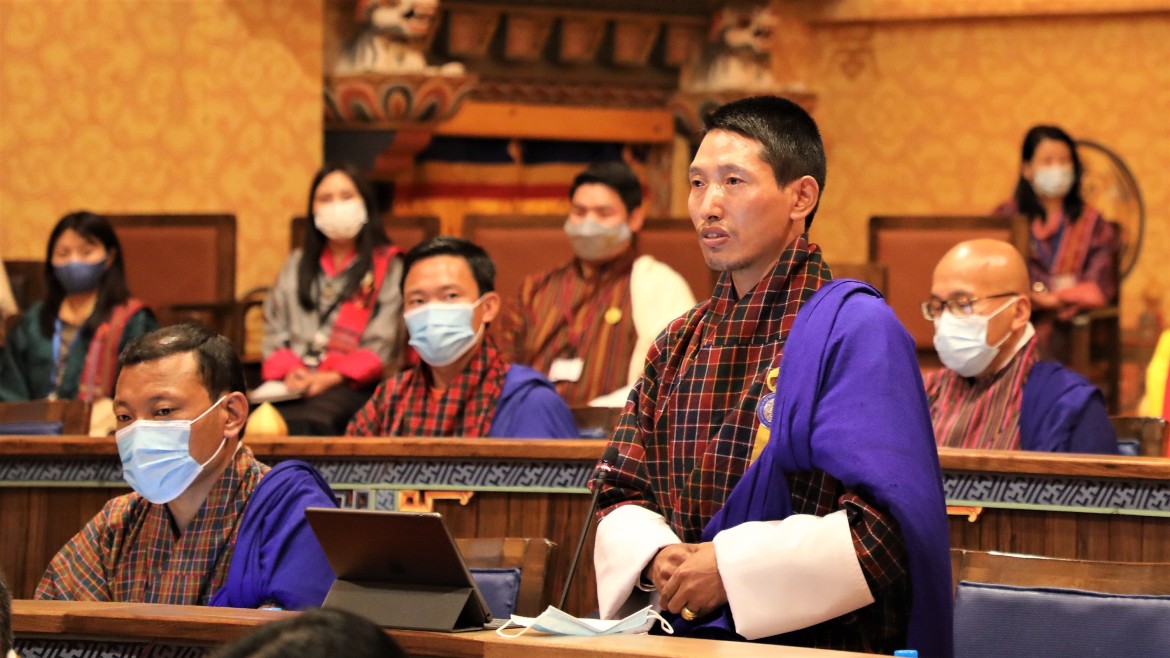
Recommendation I
The analysis of 10 years of data from 2010 to 2019 exposed the following cross-cutting issues related to production and marketing:
- There exists a huge gap between the import and production of vegetables for tomatoes and onions,
- The productivity of cash crops such as apples and oranges are stagnant but increase in their import
- The import of never exported fruits such as banana, mangoes, papayas, pineapples and watermelon have been increasing
- The products such as apples shelled betel nuts and ginger are imported at a higher price than export.
Some of these crosscutting issues are expected to be addressed through the implementation of 3 years marketing action plan, which was approved in the 1st Multi-Sectoral Committee (MSC) meeting and Agriculture Economic Contingency Plan 2020. But, MSC has become weak by reducing the quarterly meeting required in the Policy to twice in the Terms of Reference and became non-functional for having met only once since the inception of the policy. The difficulty of getting common conveyance for the Committee meeting and having indecisive representatives from other stakeholders could have been discussed and resolved if the subsequent MSC meeting was held. Moreover, any crosscutting issue would have been the discussion points in the meeting and consequently strategized the appropriate action plans. Therefore, MSC has to be functional in order to put the marketing system in place by coordinating and harmonizing the approaches of all involved stakeholders as per the Policy and Terms of Reference.
Response:
A Multi-Sectoral Committee (MSC), following the RNR Marketing Policy 2018, was formed to address the Marketing issues of the cross-sectoral agencies.
After the formation of this committee, we organized the first meeting where the ToR of the MSC was finalized. We attempted for further meetings seeking agenda from the sectoral agencies. Having received no pertinent issues as an agenda, the secretariat of MSC couldn’t organize follow up meetings.
However, as this MSC meeting is important and as recommended by NC, the ministry will activate the committee and the meeting. The next meeting is scheduled for May 2021.
Recommendation II:
Various market infrastructures such as cold store, naturally ventilated store, large market, roadside market, farm shop, cooperative shop, sales outlet, packhouse, warehouse, processing equipment and others have been established by the Ministry and most are functional. Most of the infrastructures have been established independently by the Department of Agriculture Marketing & Cooperatives (DAMC) and the National Post Harvest Centre (NPHC). From the field visits, it was found that most farm shops have limited storage space, roadside collection sheds have no toilet facility and only a few cold stores and other farm-level stores, which could assure longer storage life of products, have been established.
Having learned a lesson from COVID-19 and to deliver faster and better services, MoAF in collaboration with Thromde is establishing vegetable market sheds at other appropriate locations without having a future utilization plan of the existing Centenary Farmers’ Market.
During the Nationwide Lockdown because of COVID-19, people had access only to a limited quantity and variety of vegetables as the import of vegetables has been temporarily restricted. Also, many locally grown products like cabbages and ginger were spoiled when the export could not be done. It confirms the limited storage and processing facilities and poor distribution channels for fresh vegetables.
Thus, there is a need to establish smaller capacity cold stores at strategic locations facilitated by refrigerated vans, other low-cost farm level stores, future utilization plan of Centenary Farmers’ Market and small-scale processing equipment to improve the distribution of fresh and processed quality products within the country and export.
Response:
The development of market infrastructure for public use is one of the important strategies to facilitate marketing. In the fiscal year 2019-2020, the Department has supported the constructions of 17 market infrastructures including a large market facility in Dagana and Mongar.
In line with the need to build storage capacity in the country, the Ministry in collaboration with FCBL has initiated the establishment of 3 integrated Cold Stores and Warehouses-one each in Sarpang, Tashigang and Wangdue. These facilities are due for completion by August 2021. Further, the establishments of 5 Cold Stores are proposed in the forthcoming fiscal year 2021-2022. SOEs such as FCBL and BLDCL were supported with the Refrigerated Vans.
The establishment of small capacity cold stores by private parties is also encouraged and ensured with support through cost-sharing mechanisms of 80:20 ratio i.e. the share of investment of 80% by the proponent and 20% by the Government. The Ministry has also issued a letter of interests to the private entrepreneurs for leasing of land and availing financial loans for the establishment of such structures.
The Ministry, as in the past, is continuously supporting producer farmers and processors with small scale processing equipment mainly through farmers group and cooperative development programs. For the coming financial year, the department has invited expression of interest for financial support to set up the cottage and small scale RNR based enterprises
Recommendation III:
Various market studies are carried out and uploaded on the DAMC’s website. Some of the findings of the studies are captured in the action plans of the Department but there is no assured coordination among the stakeholders for the implementation of the findings of the studies, for example, initiating the production of suitable cardamom variety for an international market.
Though the RNR-Enterprise Coordination Unit is going to facilitate with regards to enterprise development, any intervention is somehow delayed because the DAMC has to collaborate with multi-stakeholders especially the NPHC, implementing the value addition as well as market infrastructure, has no direct interaction in planning since NPHC is under the management of different Department, Department of Agriculture.
Under the financial scheme such as Corporate Business Development Scheme, buyback scheme and school and hospital program have benefited the farmers though implemented based on the budget availability.
With the introduction of the Good and Service Taxation system in India, the export of fresh produce faces some problems where the products get stranded unless there is prompt intervention from the concerned authority. With these hiccups, the products get spoiled and result in economic loss to the people.
There is a need to establish mechanisms among the stakeholders for
- Discussing the findings of market studies, for example, initiating the production of suitable cardamom variety for the international market
- Adoption of technically feasible processed products through stronger and formal collaboration between DAMC and NPHC
There has to be a continuous support to the existing financial schemes with sufficient budget and good public awareness.
The current stranded problem of fresh produce export has to be resolved in advance by working in collaboration with the counterpart authority.
Response:
In reference to resolving of issue of the stranded problem of fresh produce export various actions have been taken:
- The Ministry in collaboration with the Foreign Ministry has taken up the export trade regulatory issues with GOI and resolved them.
- The Ministry deputed marketing officials at Phuentsholing and facilitated the fresh produce export through the establishment of a dedicated agricultural export transhipment facility, escorting of outbound vehicles from green zones to transhipment facility and implementing the COVID 19 containment measures during the export.
- Producers/Exporters were linked with the potential buyers across the borders.
- Activated buyback scheme for those commodities such as cabbage and ginger which has a very low export price.
- Distribution and linking with domestic markets were facilitated
Recommendation IV:
Agriculture Marketing Information System (AMIS) is accessible through an online system as well as mobile apps. The online system has real-time prices of 37 commodities located in 23 markets across the country. It will also have information on the latest auction market prices linked through the Food Corporation of Bhutan. However, there is no information on the quantity of products required by the market and the public are not aware of AMIS.
To have better information, it is good to incorporate the estimated quantity of products required per market in the AMIS and also display it on TV screens in the Market. If possible, the estimated quantity, location of the products and cost of production needed to be incorporated in AMIS. Further public awareness of AMIS has to be carried out.
Response:
The Agricultural Market Information System (AMIS) was launched towards the end of June 2020 covering price market information of 37 commodities from 23 markets across the country. In addition, the provision of information on the latest auction market process is also linked with the Food Corporation of Bhutan Limited. Recently, two additional markets under Thimphu Thromde and two additional commodities have been also added into the system- thereby taking the total number of markets covers to 25 and commodities to 39. Over time, we wish to increase the coverage both of the market and commodity-based on the requirement. However, as submitted earlier, one of the current limitations of the AMIS is the volume traded per market. Towards this end, the department through the project (EU-ITC), which supported the development of AMIS explored various options and means to capture the volume traded in each market. However, given the complexity in capturing such data from each market and having into the system, the department was advised that from the experiences of such systems in other countries, the best option would be to go for one time survey to capture the volume aspect, which will definitely add up to the cost. At the moment, the department is exploring how best to incorporate the volume aspect with the support of EU-ITC into the current AMIS.
MINISTRY OF FINANCE (MoF)
Recommendation V:
The availability of CSI banking service at Gewog Level has reduced the travel of people to the Dzongkhag and the online application has reduced the administrative burden but the delay of loan approval is a concern for the loan applicants. The disqualification of loan application criteria as per the credit manual 2020 is not available on the CSI website for the public. The technical recommendation letter from the respective department has to be produced manually. Therefore, CSI bank has to upload the disqualification of loan application criteria on the website and need to work for providing the technical recommendation letters from the respective Department electronically. Further, the management has to expedite the loan approval by setting the turnaround time for every loan portfolio.
Response:
- The delay in the loan approval happened last year mainly because of the following reasons:
- Increase in unexpected numbers of applicants (especially in response to monetary measures of RMA wherein interest rates were reduced).
- National lockdown on two occasions from August 11th to 11th September and December 2020 to January 2021, severely hampered the bank to manage the loans.
- As the new Core Banking Solution (CBS) system was underway, all the applications were processed manually. However, CBS is on trial starting this month.
By the end of 2020, the bank had almost 2000 pending applications. The pending applications were completed only recently. Now, the bank expediting the process and reduce the turnaround time for Microloan ( Loans up to Nu. 500,000) to a maximum of 10 working days and for CSI loan to less than 21 days. To make it possible, the bank has started to approve the loans on a weekly basis and sign the legal documents at the geog level through CSE without requiring the applicants to report to the HQ/Dzongkhag office as it used to be in the past.
- CSI bank credit manual contains eligible criteria and conditions for loan application but does not specify the disqualification criteria for loan applicants and the manual is for internal use and can’t be given on the website. Although the rejection loan applicants very low, these are based on the nature of projects and their feasibility, completeness of required documents and consonance with the bank’s mandate. However, the bank has uploaded eligibility criteria on the bank’s website along with the checklist.
- We already have the practice of receiving technical clearances from agriculture and livestock officers from the Gewogs. This information is electronically transmitted to the approving authority of the bank.
During the deliberation, some members expressed dissatisfaction with the responses received, particularly on three recommendations (1, 3 and 5). Hence the House directed the Natural Resources and Environment Committee (NREC) to re-deliberate with the concerned members and issues to be resolved accordingly.
Gasa Dzongkhag’s Mid-Term Review Report
- May 15th, 2021
- 1,926 views

Gasa dzongkhag’s Mid-Term Review (MTR) for the 12th FYP was held on 14th May 2021. The Government looked into the status of development activities at the Local Government, quality of service delivery, budget allocation, explored ways to improve performance, understand challenges, and the way forward.
Summary of 12th FYP Mid-Term Review
The 12th FYP is guided by the development philosophy of GNH and the nine domains. The strategic planning framework for the 12th FYP illustrates the key deliverables of the plan defined as the National Key Result Areas (NKRAs) at the national level, Agency Key Result Areas (AKRAs) at the agency level, and Local Government Key Result Areas (LGKRAs) at local government level that contributes to achieving the 12th FYP objectives. To measure the progress of these results, each NKRA, AKRA, and LGKRA has corresponding KPIs with baseline and targets for the plan period.
The local governments in Gasa achieved 18% of Key Performance Indicators (KPIs), 48% are on track, and 4% at risk.
KPIs of LGKRAs at risk
It was reported that of the 11 LGKRAs, the Community Health Enhanced, Water Security Ensured, and Improved & Sustained Livelihood of the Highlander were at risk.
To ensure the dzongkhag achieve these key result areas, one medical doctor in each gewog was proposed, and a request to revise the target to supply 80 numbers of sheep to 10 households instead of 300 sheep to 50 households in the 12 FYP were made during the review meeting. This is because the highlanders are not interested in rearing sheep.
It was not feasible to provide one doctor in each gewog. Nonetheless, RCSC assured to deploy permanent doctor to Gasa hospital by July this year as a standard practice. The number of sheep to be distributed couldn’t be altered as the targets were set and the plan approved, according to GNHC. The change could have considerable implications in the future.
Summary of the 12th FYP Outlay, Revised Budget, and Expenditure (As of 30th April 2021)
Gasa Dzongkhag and the four gewogs were allocated with a total budget of Nu. 784.53 M and 163.96 M respectively in 12 FYP. The cumulative revised budget for dzongkhag and the Gewog is Nu. 621.69 M and Nu. 87.19 M respectively. The percent of expenditure against outlay for dzongkhag and gewog is 48.31% and 46.36%. And the percent of expenditure against budget for dzongkhag and gewog 60.96% and 87.18 %, respectively.
Major Achievement of Capital Investments
- Construction of approach road towards Wophu with total Budget of Nu. 9.738 M: 1.748 km of approach road with retaining wall and internal road cutting (300 mts) are completed in phase-I. Phase-II includes water supply, PCC drain, and stone soling. The works have been awarded on 6th May 2021.
- 15.5 km road construction from Sephu to Gyantsa for Luana Gewog with the budget of Nu. 7 M. 12 km formation cutting of the road is completed with machinery support from the Dzongkhag.
- Flood protection work at Gasa Tsachu with a budget of 29.100 M. Currently, 90% of the work is completed, and the project to complete by the end of May 2021.
- Construction of 85 metres long suspension bridge at Lunana (Thangza zam) with a total budget of Nu. 5.95 M. Over 90% of the work is completed, and the project is expected to complete by the end of this month.
- Black-topping of Laya GC Road with Budget of Nu. 72.5 M. Black-topping for the first 3 km road is completed under Phase-I. Construction of 4.3 km long PCC drain, laying of GSB/WSM (1.7 km), and two numbers of RCC slab bridges are in progress under Phase-II. The work to construct permanent structures such as base course, WMM, culvert slab bridges, and drain on 15.5 km road under Phase-III were awarded on 12th March with a total budget of Nu 45.49 M.
- Gasa Throm developments with a budget of Nu. 54.2 M. Currently, the construction of the approach road is completed (formation cutting, soling and breast walls). Construction of internal urban roads and storm-water drainage and service ducts is in progress. The excavation works for the sewer network are also underway.
- Ongoing Construction of Bjishong and Laya Central School with budget Nu. 137.311 M. Construction of Laya Primary Health Centre (total budget Nu. 80 M) and the improvement of 9.95 km farm roads (GSB/Soling/Drainage) costing Nu. 16.352 M are underway.
Central Activity Executed by the Dzongkhag
- The blacktopping works from Wokuna, Punakha are awarded ( total budget Nu. 35 M), and BOD till dzong parking at Nu. 7 M.
- Feasibility and development of power supply to the Lunana community with Nu. 15 M. Nu. 7 M was used for the feasibility study. MoEA has proposed Nu. 663.55 M to Korean Development Assistance.
- Gasa Dzong Conservation Project with Nu. 110M.
- Construction of Dragshag, and Kagoe Lhakhang with a budget of Nu. 127.947 M completed. The Lhakhang was handed over to the Dzongkhag Administration on 4th May 2021.
- Visitor Information Center (VIC) at Baychu (Gasa-Tsachu highway tri-junction) with budget Nu. 4.25 M: completed and handed over to the youth of Khatoed Gewog.
- Cafeteria and restroom at Genteygang constructed with a total budget of Nu. 3.75 M was completed and handed over to the youth of Khamaed Gewog.
- Beautification & site development activities are ongoing for the cafeteria as additional work at Genteygang (Khamaed Gewog).
- Gasa-Lingzhi Trek Route with the budget of Nu. 4 M. 19 km completed during FY 2019-2020 & 2020-2021 and expected to complete in FY 2021-2022 (Left with 15 km).
Issues and Recommendations
- Forestry Clearance
Currently, dzongkhag has to apply to Gasa Park Range Office, and they forward to JDNP, Damji, which is then forwarded to MoAF, Thimphu for clearance. The Dzongkhag proposed to delegate the autonomy to JDNP, Damji, for clearance.
Issuing forest clearance is as per the Forest and Nature Conservation Rules 2017 and for the protection of the system and to provide check and balance, the department is coming up with an online Forest Clearance System to reduce the turnaround time and enhance service delivery in the future.
It was reported that the current system of issuing clearance is considered one of the best models in the world, and Bhutan received substantial financial support from international donors through Bhutan for Life.
- Poor quality for Blacktopping Punakha-Gasa Highway
The road to Gasa is categorized as Secondary National Highway (SNH), and the standard of 40 mm AC thickness is used for blacktopping the road. Due to harsh climatic conditions and continuous rainfall, potholes and patches along the road are apparent due to water percolation (seepage). Dzongkhag requested to increase the thickness of blacktopping, irrespective of SNH specification, for better durability.
The official present during the meeting clarified the dzongkhag that existing pavement design is based on the traffic and water management in the area and depending upon the case-by-case situation. The road from Punakha to Gasa is considered a Secondary National Highway because Gasa is one of the Tourist Hot Spots and is frequently visited by locals due to hot springs. The official assured to carry out the resurfacing works of 7.3 km with spillover budget from this financial year and the remaining 5 km in the 2021-2022 financial year.
- Out of school children prominent in Lunana Gewog
More children discontinue their studies in the highland of Lunana and Laya at a young age and the dzongkhag struggles to keep children in school even today. There are 12 dropouts from Lunana. Dzongkhag requested a chopper service one in a month for an improved supply of green vegetables to the school to curb the situation.
Representatives from the Ministry of Education clarified that the Government has supported lifting school teachers by Chopper in order to increase the teaching duration and improve the quality of education in the school among glaciers.
Officials acknowledged that the issue was genuine. However, airlifting vegetables will have substantial financial implications to the Government (Est. Nu. 15 M annually). Constructing Greenhouse with the support from MoAF was recommended for sustainability.
The Government already distributed the Greenhouse to the villagers and the schools but it was challenging to have vegetables when required due to harsh weather. It was not possible to get nutrients rich items like meat and eggs. If not monthly, supplying vegetable items once in three months was discussed during the meet. This issue would be discussed further.
The meeting concluded with the discussion on Dzongkhag’s Annual Performance Agreement (APA) for the financial year 2021-2022 and other pertinent issues concerning the local government leaders and the participants.
Gasa is small and beautiful without involving politics
- April 22nd, 2021
- 2,117 views
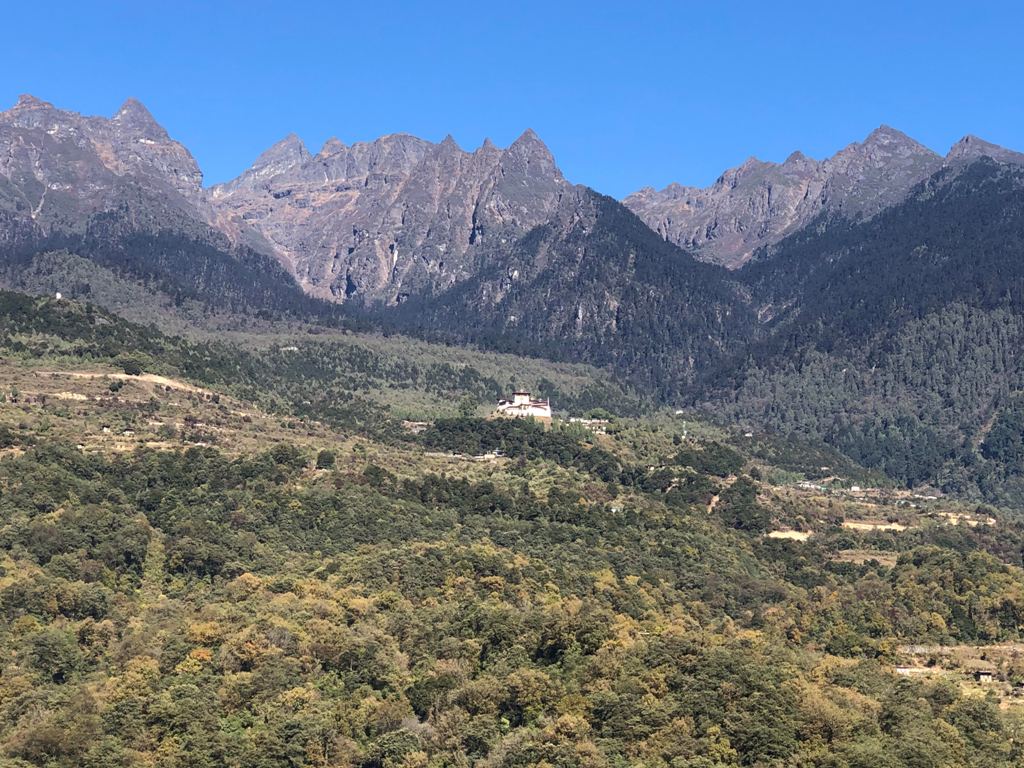
Gasa, literally translating to the land of happiness, is a strategically located northernmost district in the country, safeguarding the nation since time immemorial. The dzongkhag is known for its rich biodiversity and unique culture and tradition: making it one of the best tourist destinations.
Gasa is also famous for its hot springs in the country, frequently visited by thousands of people from all walks of life every year.
The dzongkhag has the most minuscule population, less than 4000 as per NSB, 2017 report. This hindered the development: received less share of the budget allocation through Resource Allocation Formula (RAF) with a population as one of the key criteria representing important development issues and needs of the LGs.
Compared to other dzongkhags, Gasa received the most negligible share of capital grants in the 12th Five Year Plan with only Nu. 665.365 million: Nu. 544.965 M was allocated through RAF and Nu. 120.400 M through CMI.
The multi-dimensional report published by NSB in 2017 indicated that Gasa is likely the poorest dzongkhag (29%) and Haa the next poorest dzongkhag (11%). Moreover, Gasa, Haa, Dagana and Samtse have a higher poverty level than the other 16 dzongkhags.
If the decisions are to be made based on the research and evidence, Gasa deserves the national priority, the government’s attention and the ministry’s support for the development of the district through flagship programs and other sources of funding.
As much as the MPs need to visit their constituency, understand the issues and reality on the ground, it is equally crucial for ministers to visit all dzongkhags, especially those with high poverty and least developed ones.
Gasa dzongkhag was so fortunate to welcome the first-ever female Health Minister, Her Excellency, Lyonpo Dechen Wangmo, as the first minister of the present government to have visited Gasa on April 7, 2019, to observe World Health Day accompanied by a representative from WHO, officials and specialists from the Health Ministry.
Followed by, His Excellency Lyonpo Jai Bir Rai, Education Minister, visit Gasa on September 12, 2019, while on a familiarization tour to schools of Gasa and Punakha.
His Excellency Lyonpo Namgay Tshering, Finance Minister, also visited Gasa on September 19, 2019. His Excellency shared the government’s key focus and rationalization of the government’s expenditure while meeting with dzongkhag officials.
Hon’ble Minister of MoWHS has made a Chopper trip to Lunana Gewog in mid-2019, but there were no official records.
I was less privileged as I could not be there to welcome the ministers. There was a lack of communication from the dzongkhag administration and the ruling MPs. However, I am very grateful for the ministers’ visits and for taking the time to understand the development status of the dzongkhag, work progress, and major issues.
Nevertheless, I had the great pleasure of welcoming the Hon’ble Prime Minister, Hon’ble Chairperson of the National Council and Hon’ble minister of MoWHS to Gasa during the Royal Highland Festival in October 2019.
The Minister of Agriculture and Forests, Hon’ble Lyonpo Yeshey Penjor, recently visited Gasa on April 22, 2020, and met sector heads, regional heads and LG leaders who were present to assess and advise on the preparatory measures undertaken by the dzongkhag relating to assurance and availability of essential items and commercial farming, amongst others.
Unless the minister takes an effort to make an impact where necessary, just a mere official visit and lip service will not suffice. They are the ministers first and representative of their constituency later. If ministers are using their ministerial power to divert the state budgets to fulfil their pledges in their respective constituency by ignoring the most deserving district, they are losing the whole purpose of national vision, and the government’s ideology narrowing the gap between the haves and have not.
Gasa may be small, but Article 12 (1 & 2) of the Constitution guarantees that it has two electoral votes/constituencies for any parties to form the government in the future.
Disclaimer: The views and opinions expressed in this article are those of the authors and do not
necessarily reflect the official position of the National Council of Bhutan.
The covid-19 vaccine gives us hope for the future
- January 3rd, 2021
- 1,634 views

Until an effective vaccine for Covid-19 is ready, effective and well-designed lockdowns with reliable and easily accessible testing methods are the only way forward.
Bhutan experienced nationwide lockdown twice since 11th August last year after a returnee from abroad tested positive outside the quarantine facility. Of late the government enforced the second nationwide lockdown from December 23, 2020, following reports of sporadic cases from flu clinics in Thimphu and Paro. Few cases were also detected in Lhamoizingkha; evidence of local transmission.
However, the recent news of vaccines coming into play gives us hope for the future, only vaccine can end the Covid-19 pandemic. A vaccine for COVID-19 will be a critical tool to bring the pandemic under control, combined with effective testing and preventive measures.
With several promising vaccine candidates in the pipeline, some under review for approval, and the Pfizer/BioNTech and Moderna vaccines approved for use, the race for a safe and effective vaccine has entered a new phase.
There are currently more than 200 vaccine candidates: 56 in clinical and 166 in pre-clinical development. A number of these vaccine candidates are in Phase III clinical trials – the final step before a vaccine is approved.
The two leading vaccine candidates were developed by Moderna Therapeutics, which reported 94.5 percent of efficacy, and Pfizer partnering with the German company BioNTech, showing 95 percent success rate, including 94 percent among those 65 and older.
UNICEF aims to make 2 billion doses of the vaccine available under the COVAX plan by the end of 2021. Under the COVAX plan, the initial doses of vaccines are intended for health workers, social care workers, and people at high risk, such as the elderly or those with underlying conditions.
They are unlikely to be given to children. These populations have been prioritized to help reduce morbidity from COVID-19 and help protect health systems that serve everyone.
Distribution of the Pfizer/BioNTech vaccine is underway in most countries, including the US and UK. India expects to begin vaccinating people against Covid-19 in January this year.
As per the federal health officials of India, around 300 million Indians will be vaccinated between January and early August. It will begin with an estimated 10 million health workers, followed by policemen, soldiers, municipal, and other frontline workers.
India’s drugs regulator today approved Serum Institute’s Oxford’s Covid-19 vaccine Covishield and Bharat Biotech’s Covaxin for restricted emergency use, paving the way for their roll-out soon.
China’s health authorities have approved a Covid-19 vaccine from state-owned Sinopharm for general use on the population and rollout to begin ‘soon’ but about a million have already received injection under emergency approvals.
Bhutan is safe so long as the world is free from Covid-19 and our neighboring giants; India and China are 100% vaccinated and gained herd immunity.
Nevertheless, the Government of Bhutan shared detailed plans to distribute Covid-19 vaccines since September last year. Kuensel reported that the high-risk workers in the healthcare facilities, active front-liners such as police, army personnel, De-Suups, and elderlies above the age of 60 years, and people with comorbidities were considered for the first phase of the distribution.
The second phase is expected to cover passive frontliners – individuals who are in constant contact with the large groups (like media personnel), students, and staff of functional schools and institutions.
Children below 12 years and pregnant women would be included in the third phase while the rest of the population (age 13 to 60 years) residing in the country and who do not fall under any of the above categories would be included in the fourth phase.
As a member of the COVAX facility, Bhutan would receive free vaccines for 20 percent of its population. Meaning, about 150,000 people of the total 756,129 population would be the first recipients of the vaccine.
However, COVAX would deploy the 20 percent in tranches as the first tranche would cover around three percent of the population. The remaining 17 percent would be deployed in the next tranche.
Recently, the Ministry of Health submitted an application to the COVAX facility for vaccine supply, and the first batch of vaccine is expected to dispatch in the first quarter of 2021.
How faster everyone’s lives will return to normal, including society opening and recovery of the economy will depend on the uptake of the vaccine and reach to the herd immunity.
The bottom line is that an effective vaccine will certainly diminish greatly the relative risk of transmission but we still should not completely abandon basic public health measures, including the wearing of masks.
Questions to MoEA Minister
- December 12th, 2020
- 1,968 views
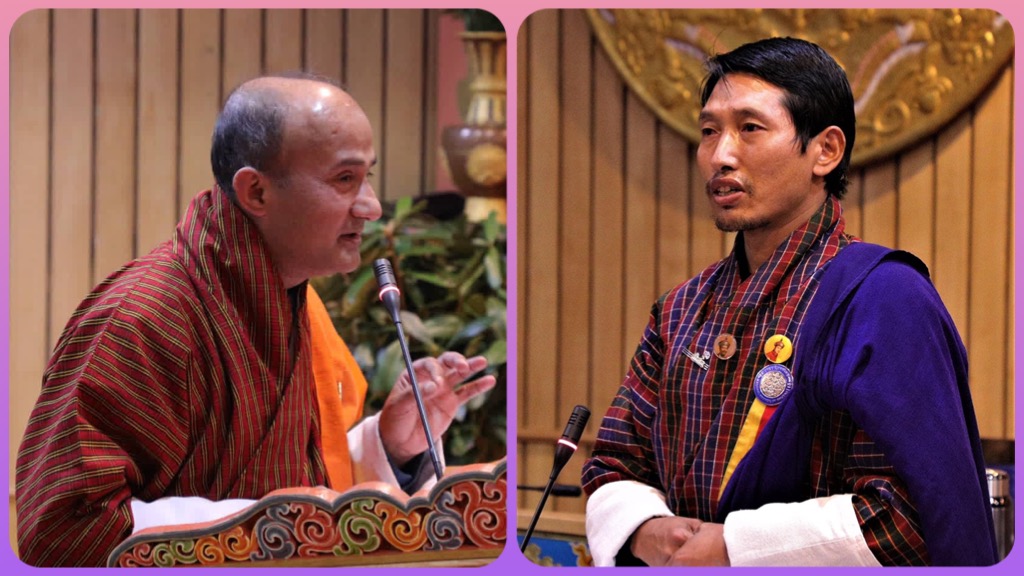
The Bhutan 2020 vision document targeted to provide electricity for all by 2020, in the 10th Plan.
About 99.97 percent of the households in the country have been provided with electricity as of today but not all. Around 164 Households, 39 villages in 21 Gewogs under 17 Dzongkhags are still off-grid.
The remaining 0.03 percent constitutes 300 households in Lunana, which is about seven days journey on foot across the high mountain passes in Gasa.
The government had allocated Nu 7 million in the financial year 2019-2020 to conduct the Detail Project Report (DPR) of the mini-hydropower project in Lunana.
The Department of Renewable Energy (DRE), Ministry of Economic Affairs provisioned to undertake feasibility study and development of power supply to Lunana gewog in 12 FYP.
In this respect, DRE assigned Druk Green Power Corporation (DGPC) to prepare a Detailed Project Report of the mini-hydro power project in Lunana, as a deposit work within the financial year 2019-20.
A multidisciplinary team from DGPC and DRE was deputed to Lunana for the site survey and for the investigation from September 9 to October 13 last year.
The survey reported that a River at Toenche had the potential to produce over 415 KW of energy, which would be sufficient to supply power to more than 200 households in the gewog.
Moreover, providing a reliable power supply in Lunana was one of the major pledges of the current government and it should be the top priority in the 12th FYP.
The detailed project report (DPR) was submitted to the government in January 2020. The total cost of the project is estimated at Nu. 662.93 million as per the estimate done in December 2019.
The electrification project was slated to begin on May 1, 2020, as per the DPR work plan.
Considering all the above points, the National Council hereby ask the MoEA Minister to clarify the following to the general public:
- Will the government be able to fulfill the Bhutan 2020 vision of 100% electricity coverage?
- What is the funding status of the proposed mini-hydro project in Lunana Gewog? Is there any alternative funding, if there are no foreign donors?
- When will the government be able to Commission the project?
It was fulfilling to have followed this development since the beginning. Lunana would be connected with electricity by 2023.
Economic affairs minister during question hour session at National Council on December 9 informed the house that estimated budget for the mini-hydro project in Lunana is around Nu 662.93 million. The mini-hydro is expected to produce 500KW. The Government of the Republic of Korea would fund the project through its official development assistance programme (ODA).
It was more hopeful when the minister ensured that the project would be carried out as planned with the internal funding if there are no foreign donors. Considering the location and the short summer seasons, it would be difficult to work on the project like in other parts of the country.
The news from the minister about the project expected to complete by 2023 is much more fulfilling being a representative of the highland communities that wished to have electricity for decades.
I take in confidence and trust we the people of Lunana have on the government of the day. The day to brighten the sacred highlands of us is not very far. I hope the project would receive continued attention till the end. Thank you, everyone, on behalf of the people of Lunana.
Similar story by Kuensel: https://kuenselonline.com/lunana-to-get-electricity-by-2023/
Inauguration of the Road to Lunana
- November 9th, 2020
- 1,747 views
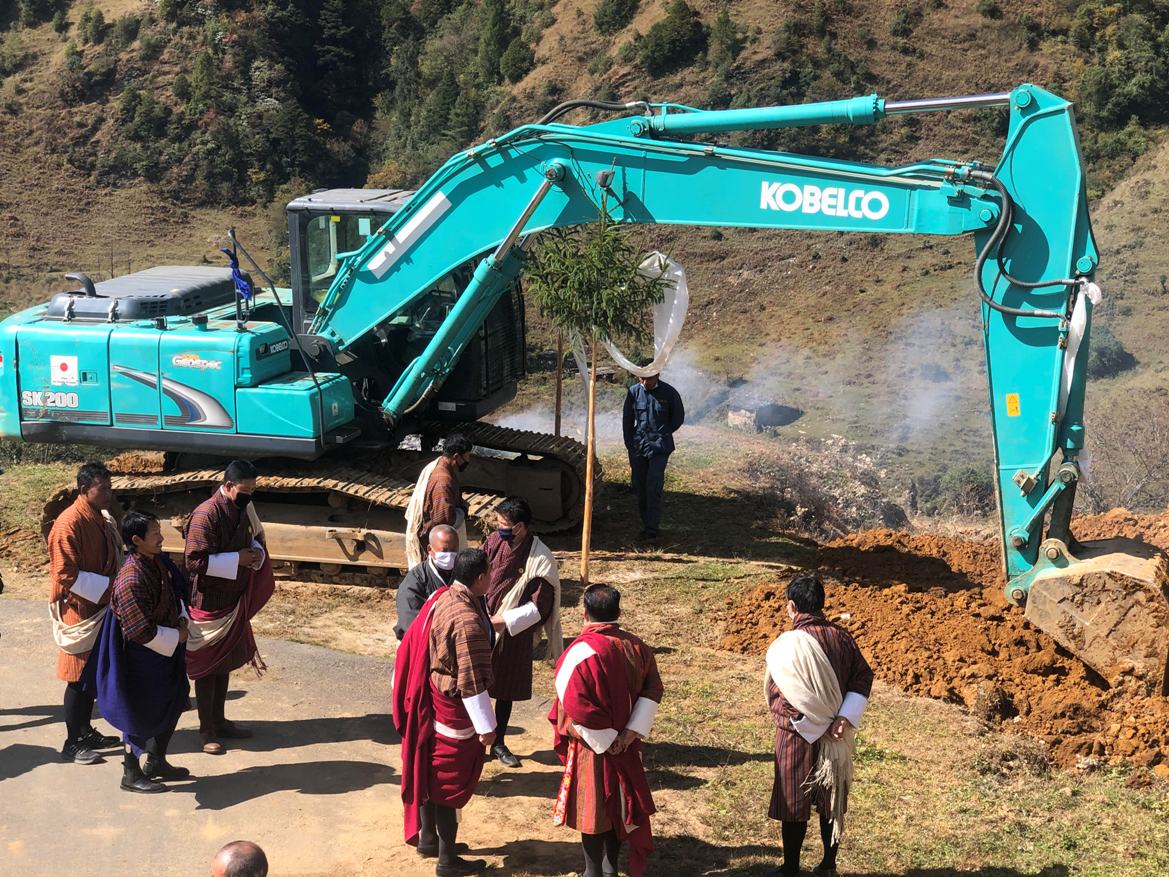
Coinciding with an auspicious day, we have inaugurated the construction of a 15.5km farm road from Sephu gewog under Wangduephodrang to Gyentsa for the benefit of the people of Lunana gewog in Gasa. The Member of Parliament, dzongkhag officials, and local government leaders from two dzongkhags- Gasa and Wangdue- were present during the inauguration on 6th November 2020.
At the inaugural ceremony, people were delighted about the road reaching closer to their gewog. The arduous journey to Lunana from Wangdue will be reduced by one day. It takes six days for the people of Lunana to reach the most remote gewog from Sephu on foot.
Lunana is one of the most remote gewogs in the country, and it remains cut off from the rest of the country for more than six months because of heavy snowfalls. The gewog is hidden behind the rugged terrains and the climatic conditions very harsh, these are the factors that hamper service delivery and development works in the gewog, among many other things.
There are three different routes to reach Lunana:
- From Laya via Gangala Karchung La
- From Punakha via Gangzhu La (Jaziphu is halfway through)
- From Wangdue via Gang Rinchenzoe (Gyentsa is halfway through).
The farm road measuring 15.5km from Sephu under Wangduephodrang to Gyentsa will be constructed with a total budget of Nu. 7 million. Gasa dzongkhag will be providing the machinery support and is expected to be constructed by June 2021.
The Department of Forests and Park Services, Wangchuk Centennial National Park, Bumthang accorded the Forest Clearance for construction of the farm road measuring 15.5km from Bisha Goenpa to Gyentsa on March 2, 2020.
On July 15, 2020, the National Environment Commission issued Environmental Clearance (EC) for the construction of the 15.5 km farm road from Sephu to Gyentsa under Wangdue Phodrang dzongkhag, including the construction of 3 bailey bridges over Barzha Chhu, Repa Chhu, and Gyentsa Chhu with the length of 10m, 10m and 15m respectively. The EC was issued in accordance with Section 34.1 of the Environmental Assessment Act 2000 and Section 34 of the Water Act 2011.
The road from Sephu to Gyentsa will benefit the people of the upper Lunana (Phoed-toed) and also the people of Sephu gewog.
Similarly, the road from Ramina to Jaziphu will begin next year, and the road will benefit the people of lower Lunana (Phoed-maed).
Jigme Dorji National Park, Gasa accorded the Forest Clearance for construction of farm road measuring 8km from Ramina to Jaziphu under Lunana gewog on March 13, 2020. National Environment Commission issued Environmental Clearance (EC) on October 9, 2020.
The people of the highland had been waiting for quite a long time for the basic infrastructure; it’s a dream come true and a foundation to many changes and possibilities among the highland communities.
This could stop the people from moving down to the suburbs of Punakha plains in search of better opportunities and encourage them to remain in their community. We should all aspire to keep them at the northern frontiers but also reach them with the required facilities. Roads, the transport means, make a crucial contribution to economic development on top of the social benefits for the people.
I would like to pay my humblest gratitude to His Majesty the King for the blessings and acknowledge the government officials and everyone involved in making this project possible. I assure everyone that I will closely monitor the work progress and make sure the construction goes as planned.
The NA endorsed Supplementary Budget of 5M; it’s purely conflicting and a wrong precedence
- June 23rd, 2020
- 2,411 views
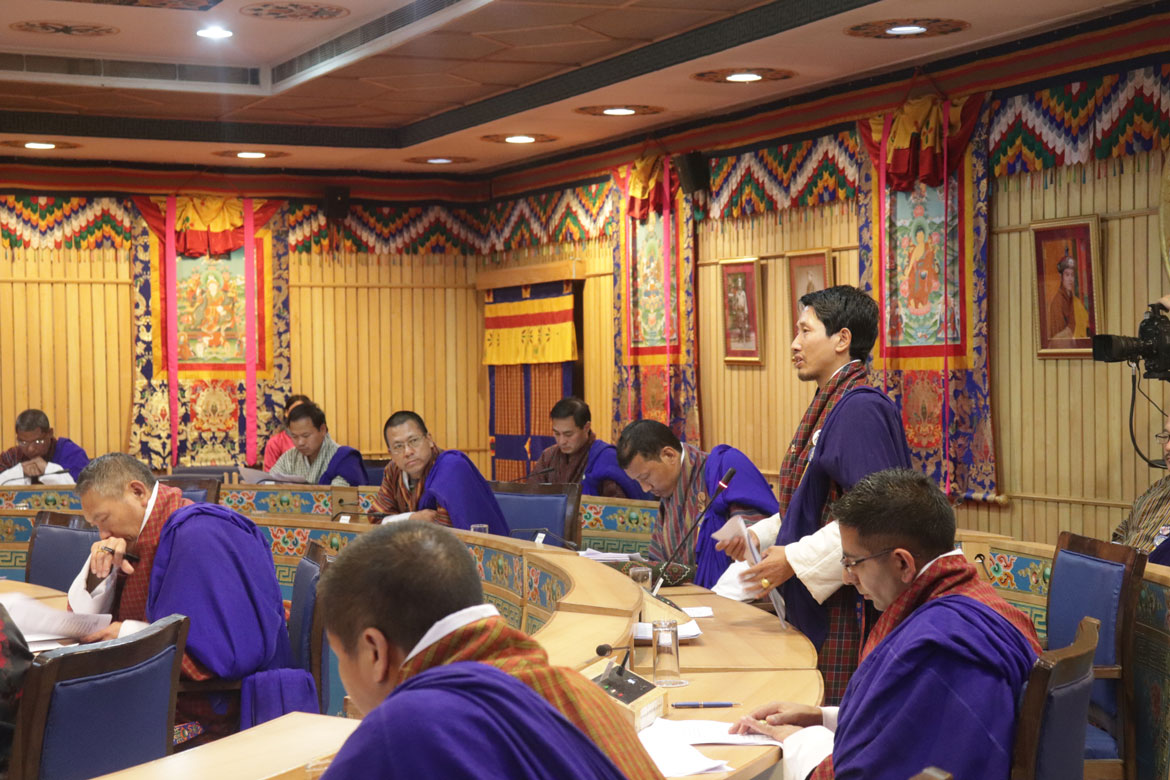
I raised my concerns during the 5th sitting of the 25th session of National Council regarding the supplementary budget appropriation of Nu. 5M, proposed and approved by the National Assembly on 11th February 2020 with 44 Yes votes.
The same budget was presented again in the first week of June, that the National Assembly is returning the amount to the finance ministry. That is just a drama and for publicity to make up with their wrongdoings. The fact is that the Supplementary Budget Appropriation Bill for the Financial year 2019-20 that has been passed before the first case of COVID-19 has never been endorsed for implementation.
Appropriating the supplementary budget for the parliamentary committee and secretariat services came without prior scrutiny from the finance ministry and violated the budget process and the Public Finance Act 2007. Any kind of supplementary budget should root through relevant ministry which is then forwarded to the Finance Ministry for approval.
The other supplementary budget for Royal Bhutan Police (for revised pay and allowances), Khesar Gyelpo University of Medical Sciences (for revised pay and allowances, students stipend), similarly for the Jigme Singye Wangchuck School of Law and State-Owned Enterprise subsidy all came through a proper proceeding.
It was surprising to learn how the most important institution of the nation turned deaf to the National Council’s recommendations.
The precedent was unhealthy for a democracy like ours that undergoes constant evolution with days. The views expressed from NC were a waste of time because they went ahead with the budget and approved it.
My colleagues in the house shared the same concerns; the legitimacy and the conflict of interest of the bill proposed to meet the shortages at the parliamentary committee and secretariat services. Consequently, the House decided to repeal the section with recommendations.
The national council also experienced the same shortage of resources. Do we follow the same trend? Should the future government do the same and keep increasing the supplementary budget appropriation ceiling.
NC members shared appropriating such a supplementary budget to overcome shortage each time would violate existing norms and set the wrong precedent.
We also questioned if the procedure followed to approve the budget was right and whether it was in line with the existing norm. However, the appropriation was approved and later returned as claimed. The way the national assembly approved the budget was unexpected and disrespectful. This also reflects the integrity of the people’s representatives in the august hall.
Our recommendation should have been heard well, especially in times like today where the government’s coffer is taking an unexpected pinch. We should all aspire to listen to one another and work firmly together with integrity.
I wish that the wisdom of the highest legislative body should prevail to abide by the laws and avoid the conflict of interests henceforth.
On issues concerning the road to the Finance Minister
- June 10th, 2020
- 2,251 views
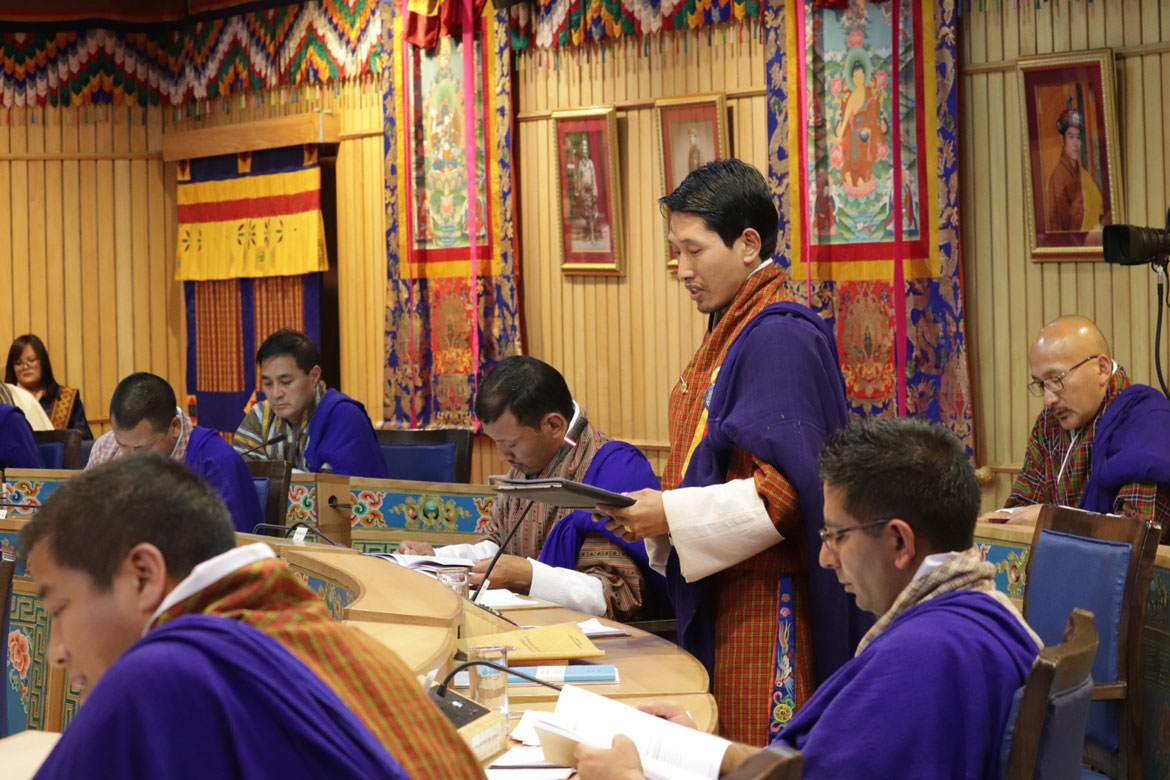
In today’s session, I raised the following issues to the Hon’ble Finance Minister during the Introduction of the Annual Budget at the National Council (2nd Sitting of the 25th Session).
The Government continues to accord high priority for the construction and maintenance of roads. For the fiscal year 2020-21, the budget allocation to the road sector is Nu. 4,225.957 million: about 6 percent of the total budget appropriation.
Under the Economic Contingency Plan (ECP), the Government plans to initiate the improvement of about 1,447 km of farm roads with existing road connectivity (one farm road from each Gewog).
To stimulate economic growth, the Government has announced fiscal and monetary measures and started implementing economic contingency plan in the areas of tourism, agriculture and construction, and this includes improvement of one farm road each in all Gewogs.
In this regard, I urge the government to give importance to build new roads to gewogs that has no road such as Laya and Lunana in Gasa dzongkhag.
This is in line with the government’s expectation to improve access to the market, reduce transportation costs, and to enhance rural income. Moreover, this would improve the living standard of the highlanders and help the government realize the vision of Reducing Gap, besides many significant advantages.
I also recommended the Government to ensure issuing of the road-related clearances at the earliest possible with a new policy similar to that of the Government’s Procurement Rules and Regulations during emergencies.
The Department of Forests and Park Services, Wangchuk Centennial National Park, Bumthang accorded the Forest Clearance for construction of farm road measuring 15.5km from Bisha Goenpa to Gyentsa on March 2, 2020, and Jigme Dorji National Park, Gasa accorded the Forest Clearance for construction of farm road measuring 8km from Ramina to Jaziphu under Lunana Gewog on March 13, 2020. However, the Gewog is yet to receive the Environment Clearances for these road constructions.
The road to Laya was one of the significant pledges of the current Government and should consider it as the top priority. Although the preliminary survey was carried out recently, more needs to be done to complete the remaining 30% of the road to Laya from TongshuDra (Approximately 13 km). It has been more than 2 years now; the gewog is yet to receive the road clearances.
Moreover, as always I reminded the Government of the need to improve road conditions between Punakha and Gasa border, especially from Kabesa Sirigang to Shatem Draphu.
The road, despite being crucial for ensuring administrative ease, economic development through tourism, and livelihood enhancement through connectivity; the quality of the road, as mentioned earlier, remained a major stumbling block for more than two decades. Thus disappointing the people.
However, it was encouraging to hear from the Hon’ble Finance Minister that the works to get clearances at the shortest time possible is taking good progress. The government including Gasa-Laya gewog centre road to be blacktopped along with 23 other GC roads was welcome news.
While sharing the concerns and views of the people, I revere and share the same thoughts of the need to secure our economy in times like today. There is a need to create employment and realize the consumption capacity of the people as mentioned by the minister.
The budget for FY 2020-21 is presented in the midst of COVID-19 pandemic which has caused a global health crisis and economic downturn.
Reflections of two years in the Parliament of Bhutan
- May 18th, 2020
- 1,197 views
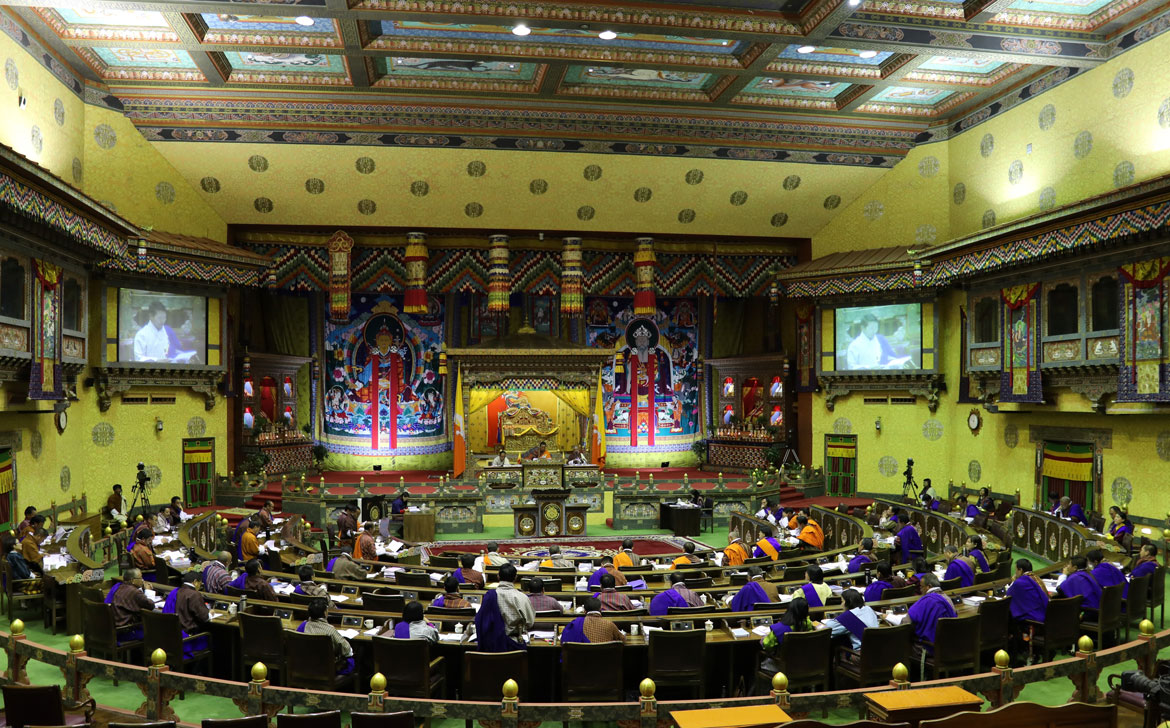
Two years representing the people of Gasa Dzongkhag was a journey that kept me moving closer to the heart of this nation, more than ever. I have come to know more about the community and myself.
The first two years have been overwhelming and adventurous after signing the Oath of Office and pledging to work tirelessly on fulfilling the sacred mandate of the great institution, the great visions of monarchs, and the dreams of the people.
The job of a Member of Parliament is unlike any other profession one would have previously experienced. You are expected to be an advocate, social worker, orator, negotiator, mediator, sociable, social convener, and a lawyer. This versatile need of the profession has questioned and pushed me hard to become a better one always.
I got an opportunity to visit the places located at the highest elevation in the country, enduring the harshest weather because it mattered the most to the people and the country. The experience among glaciers and clouds was awakening. This is the latest moment I cherish as the representative of the people.
One day I was amongst the ranking delegates and officials, the other days I was with the people and youth of my constituency. In attending both functions, I always kept my true colours close to my heart. This kept me talking about my people and the country with almost all the people and in the places I have been to in the past two years. I will continue to let the world hear about my people and the country.
I come from a constituency where people are least aware of our work as their representative. I made sure people understood, the basics of what we were doing in the Parliament. This would go a long way and I am more prepared to shoulder them with the best ability of mine.
Among the communities that are least developed in Bhutan, I started a welfare scheme, a personal initiative that caters to the needs of my constituents today.
The initiative came from my own experience and situation. The struggles and the unfortunate circumstances are uncertain in times like today. I wanted to shoulder my people in a time of bereavement. Today I am happy that this has become a reality.
For the welfare scheme, I surrendered my annual discretionary allowance entitled to the Member of Parliament in the country, the first to do so among the parliamentarians in the country. Positive precedence I feel optimistic about as a young parliamentarian.
In the parliament so far, I have opposed the views shared by the government and supported where it is due. The decision that would impact my people was least welcome and critiqued on behalf of the people.
Despite being a regular and active participant in the committee meetings, and during debates in the Parliament, I made sure that the issue concerning my people on the ground was heard and discussed at all levels.
The journey took me to different parts of the country and also to the parts of the world that helped me realize and learn about the fast-changing world.
My work in parliament also involved representing Bhutan in important international and regional forums like the 19th General Assembly of the APPCED in South Korea in December 2019 and the 140th IPU Assembly meeting in Qatar in April 2019.
I was in India, speaking to the professors and faculty at the Asian College of Journalism in Chennai about my country. Many of them had the experience of working in media for more than a decade. I was also allowed to share my views on the Role of Young Parliamentarians in Regional Cooperation during the 4th Memorial Lecture of the UNESCO Goodwill Ambassador Madanjeet Singh at Pondicherry University in India in April 2019.
Many a time, the experiences and works in the Parliament were unceasing and limitless. However, the needs and expectations of the people kept me moving and made me stronger day by day; turning me into a representative they always saw in me.
As important as it was, working with the parliamentary group was challenging and learning. It was difficult to balance individual views and the concerns of the constituents with the discipline and platform of the parliamentary group that may share contradictory views.
While working with dedication and determination, my two-year journey in Parliament tested both my strengths and weaknesses. Sometimes it kept me awake beyond midnight, learning and hearing the voices of the people. But I have always had my constituents and nation in my heart that kept me pushing until today.
Getting into parliament was the best option to be part of the solution. However, more needs to be done to solve issues concerning the daily lives of my people and the country at large.
Last, but not least, I remain forever grateful to His Majesty for what we have today and for steering the Nation towards the 21st Century with assured peace, security, and prosperity. Moreover, our heartfelt gratitude to His Majesty the King for tirelessly leading our country’s effort to combat the COVID-19 pandemic and granting unprecedented Kidu to all the affected citizens.
Thank you.
Climate Change-induced Risks from GLOF in Bhutan
- April 25th, 2020
- 4,099 views
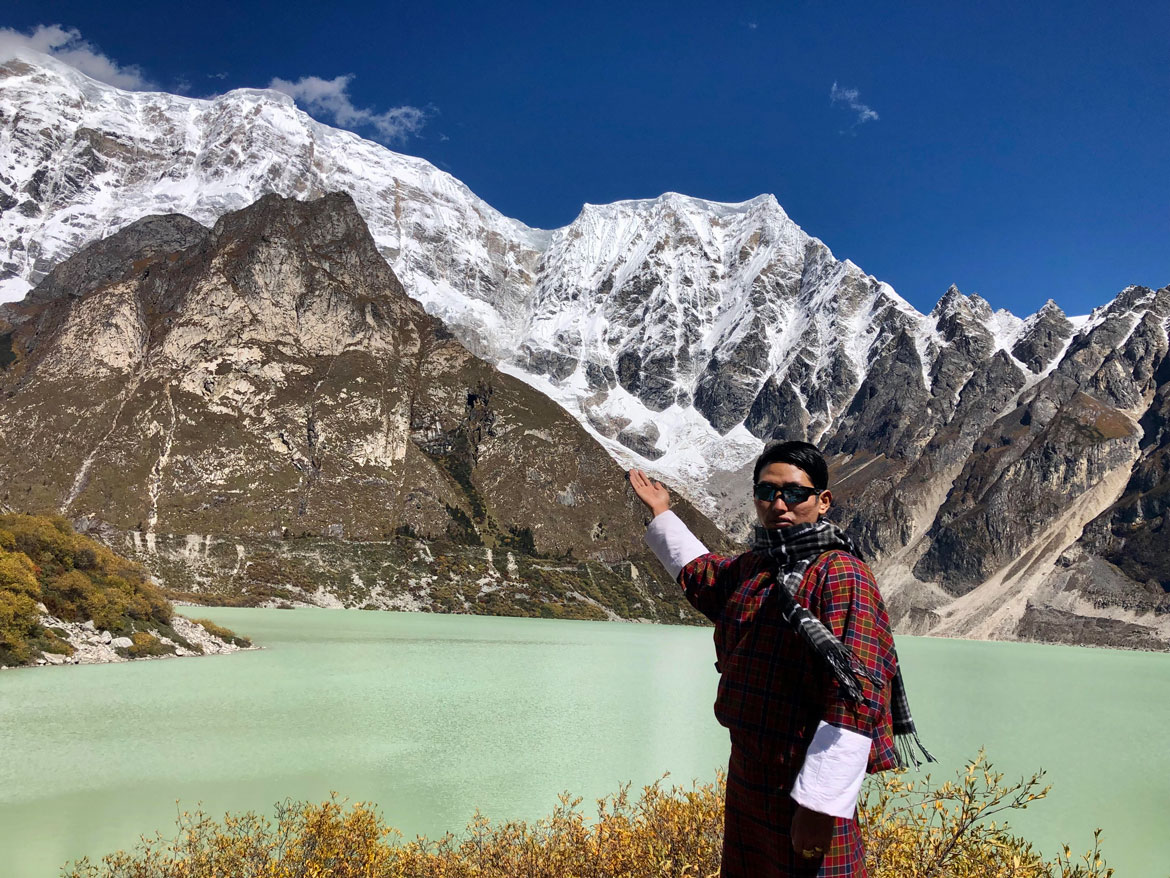
Climate change is a global concern today. It is hitting us hard, and that is due to an insatiable desire for so-called ‘unsustainable development; a concept propagated by some western thoughts.
Bhutan has already felt the impact of climate change and more than 17 events had occurred in the 19th century. The glaciers in the Himalayas; the world’s greatest repositories of snow and ice are retreating at a rapid pace. This has led to swelling of the glacier lakes and increasing risks to the fragile mountain ecosystem.
In Bhutan, 677 glaciers and 2,674 glacial lakes were identified. Of the total lakes, 24 were considered potentially dangerous (Mool et al. 2001). Over the past two centuries, we have experienced more than 20 glacial lake outburst floods (GLOF).
Four outburst cases were reported in the last forty years (UNDP 2013; Seth 2015). Significant GLOFs occurred in 1957, 1960, 1968, and 1994, devastating lives and property downstream (Komori 2008; SNC 2011; UNDP 2013; Sangam et al. 2015).
The threat of GLOF still looms large in the Himalaya. Bhutan has been acutely aware of its vulnerabilities due to climate change and frequent seismic activities. One of the recent GLOF events in the region was the outburst of Lemthang Tsho (lake) on July 28, 2015, and the breaching of subsidiary lake II of Thorthormi Lake on June 20, 2019.
Asian Development Bank highlighted that the glaciers of Bhutan, which covered about 10 percent of the total surface area in the 1980s, are an important renewable source of rivers in the country.
There are four major lakes located in Lunana namely-Thorthomi, Raphstreng, Luggye, and Baytsho. Thorthomi and Raphstreng are two of the 25 glacial lakes in Bhutan that pose serious GLOF risks. Pho Chhu sub-basin is the most vulnerable valley in terms of GLOFs (NCHM 2019).
The past records heavy damages on properties, livestock, and settlement because of GLOF incidents. The 2008 UN reported that Himalayan glaciers would melt within 25 years. In 2009, the rate of glacial melt in Bhutan was three times the world average.
Over the previous three decades, regional temperatures had risen by 2.7 °C (4.86 °F). According to the US geological survey report, 66 glaciers have decreased by 8.1 percent in the last 30 years in the country.
The Thorthormi glacial lake is considered the country’s likeliest climate-induced disaster. The lake, perched at the height of more than 4,400 metres, is swelling because of melting ice and is in danger of bursting its wall (www.downtoearth.org.in).
There are other external factors like earthquakes, avalanches, and falling of rocks, which have a triggering effect besides glacier retreat alone.
It was observed that Thorthormi is not a fully formed lake. It’s under the forming stage. Small ponds of melted glaciers are converging into larger lakes gradually. Just below Thorthormi, divided by a large moraine wall, lies the Raphstreng Lake.
It is evident from the NASA Earth Observatory image by Robert Simmon, 2009, that the moraine wall, which divides Thorthormi and Raphstreng, has a vast ice body at 80 meters depth. Scientists have raised concerns over the structural strength and stability of the moraine dam.
Studies confirm that Thorthormi Lake and other ponds in the Thorthormi glacier are expanding. The landmass is said to be shrinking by the year. Recent satellite images show the unsteady moraine dam is receding at an alarming 30 to 35 meters every year (www.downtoearth.org.in).
The moraine ridge will not hold forever, and that Thorthormi will spill over into Raphstreng Lake one day. The convergence of the two lakes could trigger a major GLOF (www.bbs.bt). If this happens, the water from Thorthormi would spill over to Rapstreng and both lakes might burst.
In the worst-case scenario, the convergence of Thorthormi and Raphstreng would cause severe floods that would affect regions in Punakha. The GLOF is expected to be three times more than the 1994 GLOF, according to a report from the third pole.
It would threaten communities of Lunana, Punakha-Wangdue district, and others in the downstream. The majority of Bhutan’s population and infrastructure are concentrated in the broad river valley and the climate-induced GLOFs would cause significant human and economic devastation.
The World Wildlife Fund (WWF) says half of the fertile land in Punakha and Wangdue valley will be submerged underwater. Punakha Dzong and much of Khuruthang could be submerged too.
The melting of ice at Thorthormi Lake caused an increase in the water level by almost two meters (www.drukgreen.bt). This incidence has prompted the government to issue a nationwide flood advisory last year.
The research further indicated that any significant disturbance on Thorthormi Lake could result in a GLOF, potentially with massive cost to life, property, and infrastructure.
Currently, the moraine dam has sufficient mass to withstand the hydrostatic (water) pressure from Thorthormi Lake. However, the local hydrologist raised concern that if the melting continues due to a rise in temperature, the moraine will not be able to hold.
If the two lakes combine and cause a GLOF, it will travel much faster this time because the river channels have already been cleared of debris and other hindrances by the 1994 flood.
One of the worst situations for Bhutan is a combination of a heavy rainstorm and GLOF happening at the same time. This could also have serious implications across the border downstream in India.
The countries in the region will have to rethink both disaster preparedness as well as infrastructure development (www.thethirdpole.net).
Climate change as a global concern is already impacting millions of people all over the world, making lives more vulnerable. The hardest hit in the world is the people living in developing countries like Bhutan.
A significant portion of the country’s revenue is derived from hydropower that involves considerable investments and requires sustainable water resources. The GLOF poses a direct threat to the economy since Bhutan’s core revenue rests on hydropower. The revenue from hydropower export to India constitutes 40% of the country’s revenue and it is expected to increase to 60%.
Two of the most significant hydropower projects in the country, the 1,200 MW Punatsangchu-I and 1,020 MW Punatsangchu-II, built downstream the Thorthormi Lake, will be in grave danger, and the biodiversity in the region would be affected.
What is more worrying is that the government has prioritized the construction of the 2,560 MW Sankosh hydropower project along with the same river system (www.thethirdpole.net).
GLOFs also possess risk on crucial development sectors like agriculture and forests in the Hindu Kush Himalayas, according to The International Centre for Integrated Mountain Development.
Agriculture in Bhutan provides livelihoods and employment to more than 75% of the population. The majority of the people practice subsistence farming on small marginal lands holdings. These are extremely vulnerable to flood impacts.
According to National Geographic, the Himalayan Mountains is home to the third-largest deposit of ice and snow in the world after Antarctica and the Arctic. It was warned that the Himalayan region could be facing an epic disaster between extreme heat waves and reduced water flows from the Himalayas.
Today there is a need for a societal awakening and to spend a significant part of the economy to avoid the catastrophic risks we are facing.
The 1994 GLOF was the catalyst for the need to establish an early warning system (EWS) giving downstream inhabitants time to evacuate (www.hydromet.gov.bt).
The Flood Warning System in Lunana is a crucial part of GLOF risk mitigation efforts. Early warning sirens have been set up and safety evacuation zones identified along the Punatshangchu and Pho Chhu basin.
The first automatic GLOF Early Warning System was operational since September 2011. The early warning systems are only to help us minimize the damage to lives and property.
Artificially draining the lake is one method of reducing risk. Preparing hazard zone maps of the downstream region to study the impact of the flood and several efforts have been undertaken to mitigate GLOF risks.
A three-year project to lower the Raphstreng lake water level by four meters was completed in 1998. A similar project was carried from 2008 and 2011 at the Thorthormi that saw 17 million cubic meters of water drained out from the lake.
With the risk becoming severe daily, the government is now looking to step up monitoring of temperature in the Thorthormi area by installing more sensors.
Without required measures in place, the lake outburst would have far-reaching impacts on the settlements, historical monuments, and hydropower, the most. Therefore, we need to be more sensitive to GLOF risks.
Having said that, in my capacity as a water resources engineer and decision-maker in the Parliament, I have made a site inspection to Raphstreng and Thorthomi Lake during the Constituency visit in October 2019 to observe the ground reality.
Despite my limited knowledge of climate change and its related impacts, it is evident that the GLOF is real, it is going to happen eventually and we should always be vigilant, as per my observations at the site.
Therefore, reducing climate change-induced risks and vulnerabilities from glacial lake outburst floods should be our priority and address the adverse impacts of climate change.
Studies revealed that there is a need for proper risk management practices, which starts from the identification of critical glacial lakes and to prioritize in-depth investigation.
As a long-term adaptation, Bhutan should prioritize water resource management, diversification of energy, climate proofing of hydropower and infrastructure, agriculture diversification, and awareness, among other things. Advocacy to cope with health risks, enhancing preparedness, and understanding of GLOFs triggered by climate change should be focused.
The Impact of Bhutan’s impending climate disaster in the future will be far more significant unless the government prioritizes the above-mentioned disaster mitigation efforts.
Disclaimer: Views expressed are those of the author’s own unless cited and concerns shared as the responsible people’s representative.
Revamping the TVET system in Bhutan
- April 18th, 2020
- 3,738 views
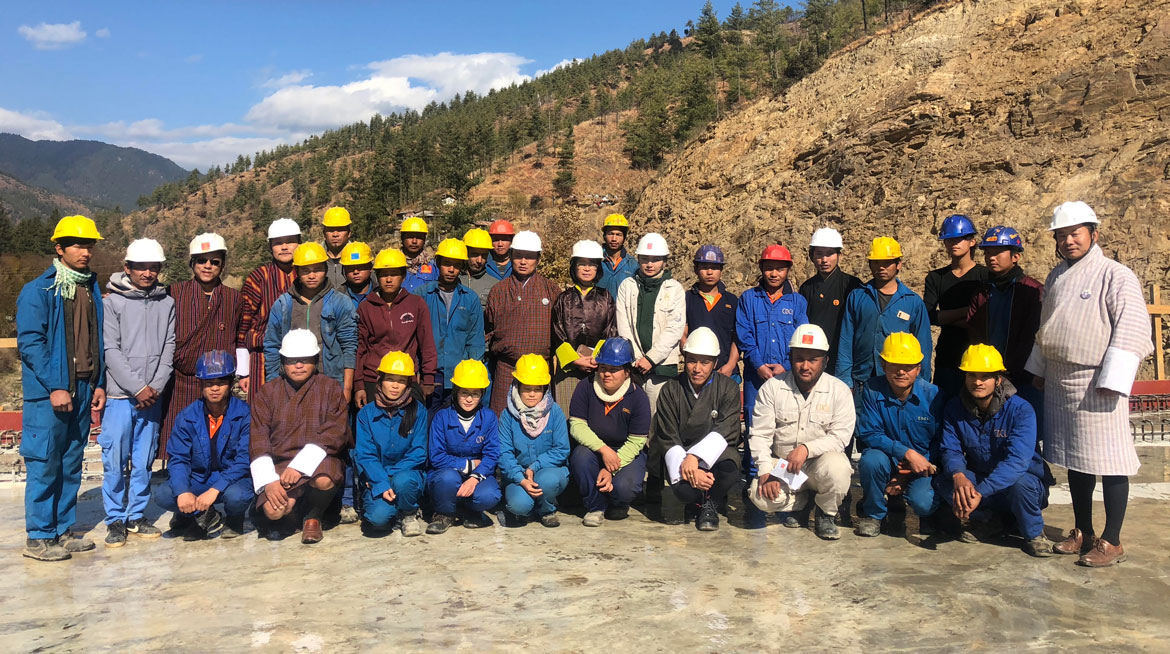
Technical and Vocational Education and Training (TVET) and skill development pose a serious challenge, particularly in countries with rapidly evolving labor markets (ADB 2009).
Recognizing the importance of Technical and Vocational Education and Training (TVET) in the overall socio-economic development process, the Royal Government of Bhutan had introduced the TVET system, right from the mid-1960s in the country.
Despite considerable investments made in the TVET sector over the past decades, it still faces significant challenges in terms of access, relevance and quality of skills in the wake of a rapid socio-economic transformation of the country.
The TVET is still a less preferred option for most youth in general while at the same time, TVET graduates continue to face difficulty in upgrading their educational qualification and career advancement. These factors have further aggravated the problem of the weak TVET system.
The National Council during the deliberation on employment policies, programs and strategies in its 16th Session had highlighted the need to conduct a comprehensive diagnostic study on the current TVET system. However, since the Ministry of Labour and Human Resources was in the process of developing a TVET Blueprint, the review work was shelved temporarily.
The issue on the need to review the TVET system in the country surfaced once again during the 3rd National Council’s retreat held at Paro in July 2018. A 5-member Special Committee for TVET was constituted to conduct the review.
The Special Committee conducted a series of one-on-one meetings with stakeholders and referred numerous documents such as TVET policy, reports, plan documents, TVET sector assessment reports, TVET Blueprint, etc.
The Committee submitted the Interim Report to the House during the 22nd Session of the National Council. The Final Report was submitted during the 23rd Session of the National Council where the House had an extensive deliberation on the report.
Following are the key highlights of the report:
Currently, there are 797 trainees undergoing training in eight institutes including two Institutes for Zorig Chusum (IZC). The minimum entry qualification for the courses offered in Technical Training Institutes and Institute for Zorig Chusum is class X certificate holders. Of the total 153 trainees, 111 have diploma qualifications, 32 have a degree qualification and 10 trainers with a national certificate.
Although the Bhutan Vocational Qualification Framework (BVQF) has been established to enhance the quality of vocational skills and to provide definitive career pathways for the vocational trade practitioners, a considerable gap remains in the effective implementation of the system.
The Institutional linkages between the Vocational Training Institutes and the Industries are weak.
The officials providing TVET support services in the Ministry are often bogged down with bureaucratic works that could partially be blamed for not being able to provide focused and timely professional TVET services, particularly in the fields of research & development, curriculum review & development, and professional development for instructors/trainers. Moreover, the civil service system’s strong emphasis on educational qualifications has created limited opportunity for most of the TVET instructors in terms of their career progression in the civil service. This has inadvertently affected their morale negatively.
Despite the increased intake capacity in TVET, the youth opting for TVET courses are under-subscribed. There is also a weak linkage between the TVET Institutes and Industries as well as limited collaboration/affiliation with the institutes overseas. The lack of adequate financial resources is one of the main factors confronting this area.
After extensive deliberations on the findings of the Committee’s review report, the National Council recommended the following to the Government:
- To establish a TVET Council with members representing relevant sectors & TVET experts, and a TVET Sector Skills Council.
- To develop TVET HR Policy with a dedicated HRD budget for the professional development of instructors, including the provisions for recruiting experts with specialized expertise in the TVET sector.
- To diversify areas of training programs and enrich the current curriculum that will impart soft skills.
- To strengthen industrial linkages so that it provides better employment opportunities for the TVET graduates as well as to ensure the relevancy of skills training to the labour market.
- To provide adequate budgetary support to the TVET sector.
The Government of the day supported the yearlong TVET policy review carried out by the National Council and gave light to the Council’s recommendations.
Transformation of the Technical and Vocational Education and Training (TVET) should be the primary focus of the labour ministry, and the rest should follow, Prime Minister Dr. Lotay Tshering said at the review of the agency’s annual performance agreement on August 5, 2019.
To develop and revamp the image of Technical and Vocational Education and Training (TVET) in the country, a TVET Interim Office was established in Thimphu on March 17, 2020.
The team comprising of five members will officially work towards the formation of an autonomous agency related to TVET. Leading the team as the Chief Executive Officer is Kinga Tshering, former Parliament member, who graduated from Harvard Kennedy School in recent years for the TVET Reform Initiative.
The team will have to report to the Prime Minister’s Office during the transition period until it takes off as an independent organization.
The Government pursued TVET reforms, since last year, following the Council’s recommendations. It had two expert groups working on the new curriculum for skills and competency relevant to the 21st century, and ensuring the governance structure of the revised system.
The team led by the new CEO presented follow up on the Councils Review Report on the TVET and held a brainstorming session on TVET Reforms on April 16, 2020.
Under the dynamic leadership of the newly appointed CEO, we are hopeful that the TVET system will grow to a greater height and we are proud to be part of the reform and to be working towards a common goal of the nation.
If Education is the key to Economic Development then TVET is the master Key to Sustainable Development. ~Dr. Prof. Shyamal Majumdar.
We cannot breathe in peace unless we electrify Lunana
- April 8th, 2020
- 3,024 views

It gives me immense pleasure to share that the plan to set up a mini-hydropower plant in Lunana looks positive. I learned from my visit (October 10, 2019) to the site that pre-feasibility study of the project is completed.
The Government has allocated 7 million in the financial year 2019-2020 to conduct DPR of the project.
Since people of Lunana had raised this issue consistently during my constituency visit, I asked Honorable Prime Minister about the need to provide power supply for the people of Lunana in the 23rd session of the National Council. The response was positive and hopeful.
With such a level of commitment from the highest authority, I am optimistic that project execution will begin soon.
Lunana Gewog under Gasa Dzongkhag has five chiwogs with 13 villages. Over 1000 people are residing above 3,500 metres above sea level. Only one community, Ramina is connected with the road in the gewog, and it takes over one week to reach Lunana on foot.
There is no electricity power supply, as it was not feasible to extend grid electricity to Lunana. The solar home lighting system is used to lighten Lunana today. Firewood plays a vital role in warming up cold high altitude homes and for cooking.
The absence of electricity has led to depleting the limited forest coverage in the place, according to Druk Green Power Cooperation’s inception report on Lunana mini-hydropower project.
An independent feasibility study conducted by Bhutan Power Corporation Limited (BPC) in 2018 established that a mini hydropower project of 300 kW is feasible on Chuzachhu – a tributary of Phochhu near Toenchoe village.
However, the feasibility study recommended further investigations on the topographical survey for waterways and transmission line, geological and geotechnical investigations for major structure, and socio-environmental assessment, among others.
Therefore, the Department of Renewable Energy, Ministry of Economic Affairs (DRE) in its 12th FYP has provisioned to undertake feasibility and development of power supply to Lunana community. In this respect, DRE has assigned Druk Green Power Corporation (DGPC) to conduct the preparation of Detailed Project Report (DPR) of the mini-hydropower project in Lunana as deposit work within the current financial year 2019-20.
A multidisciplinary team from DGPC and DRE has been deputed to Lunana to carry out site survey and investigation from September 9, 2019, till October 13, 2019.
As per the inception report, the rapid river runoff at Toenche has the potential to produce over 415 KW of energy, which would be able to provide power supply to more than 200 households.
The inspection report and survey also anticipated power demand of the Gewog at about 500 KW. Essential establishment of assessment was made and planned to carry out lean season flow measurement of Chuzanchhu, useful data to understand the power potential of the project is also in the plan.
As per the report, the proposed project is expected to reduce the dependency of Lunaps on firewood, thereby helping to conserve the catchment area of Phochhu River, one of the ultimate sources of Punatsangchhu Hydro projects. It will improve people’s health and sanitation with the supply of clean and reliable energy for cooking and heating.
The report stated that appropriate environmental management plan would be formulated as part of the environment and social impact assessment of the project. The local people have shown strong support and anticipation of the project during the consultation.
The proposed mini-hydropower project is expected to electrify 10 villages except for Wachey village (14 HHs) located on the other side of Kayja La pass (El. 4,650 masl). It has not been considered mainly due to longer transmission length and the requirement to cross the high pass.
Based on the request of the Department of Renewable Energy (DRE), DPR study of Lunana Mini-Hydropower Project has been conducted by Druk Green Consultancy (DGC) in close coordination with DRE, for providing an off-grid electricity supply to Lunana community and institutions.
The total cost of the project is estimated at Nu. 605.24 million and Nu. 662.93 million without and with Wachey village electrification respectively at December 2019 prices.
Since the cost difference is approximately about Nu. 57.69 million, I would highly recommend the Government to consider including Wachey village in the proposed project instead of providing an alternative, independent power source in the form of micro-hydro (at least 33 kV). The comprehensive cost-benefit analysis needs to be carried out to choose the best option considering the reliability, long-term maintenance cost, human resources requirements and other related costs in the future.
Bhutan achieved 99.97 per cent of households connected with electricity as part of Bhutan 2020 vision document. The remaining 0.03 per cent constitutes 200 households in Lunana. To this, Bhutan Power Corporation’s chief executive officer said, while 99.97 per cent is as good as 100 per cent but we cannot breathe in peace unless we electrify Lunana (June 25, 2018, Kuensel).
Moreover, providing reliable power supply in Lunana was one of the major pledges of the current Government and should consider as the top priority in the 12th FYP. The feasibility study has been carried out recently and the detailed project report (DPR) was submitted to the government in January 2020, but more needs to be done to make a dream come true for the people of Lunana.
As per the report, providing basic amenities like reliable electricity in the region which are located closer to the national border, would encourage local communities to stay in their ancestral home which is strategically essential for maintaining border security and also discourage rural-urban migration. In view of the above all, the report highly recommended the government to consider the development of the project to enable socio-economic development of the remote communities located close to the northern border.
Having worked as an engineer and after visiting the precarious sites of Raphstreng and Thorthomi lakes in Lunana, the protection of the catchment and the need to reduce pressure on the environment has become crucially important.
As the representative of the place and having experienced the hardships of the highland myself, I hope the last place remaining in the country without power supply would soon be connected with reliable power supply for the benefit of one and all.
Thank you!
References:
- Druk Green Consultancy, Project Department, Druk Green Power Corporation Limited. (2019). Lunana
Mini-Hydropower Project Inception Report (p. 24) [Inception Report]. - Druk Green Consultancy, Project Department, Druk Green Power Corporation Limited. (2020). 500 kW
Lunana Mini-Hydropower Project Detailed Project Report (p. 21) [Detailed Project Report].
Looming economy uncertainty with COVID-19 outbreak but are we prepared?
- March 9th, 2020
- 3,154 views
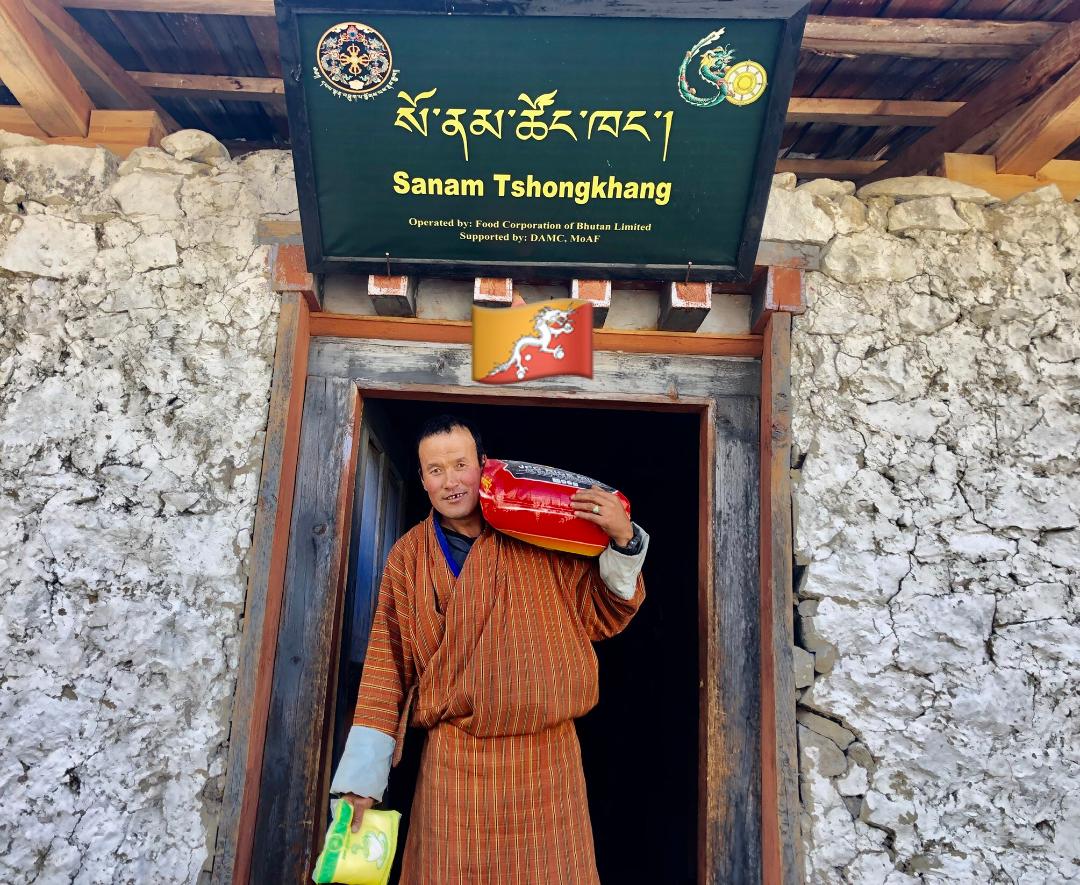
Looming economy uncertainty with COVID-19 outbreak, but are we prepared for the Worst Case Scenario?
According to a Bloomberg report by Cecile Daurat, the global economy has started to feel the strain of China’s viral outbreak- and the potential $160 billion hit in lost growth may be on the way.
The COVID-19 outbreak presents the global economy with its greatest danger since the 2008 financial crisis that was considered the most significant economic downturn since the Great Depression, according to the latest Interim Economic Outlook report from the Organisation for Economic Co-operation and Development (OECD).
The outbreak did not spare the isolated Himalayan kingdom of Bhutan, and it reported the first Coronavirus case after a US tourist tested positive on March 6, 2020.
Although, Bhutan’s GDP is expected to grow by 5.7% in 2019 and 6.0% in 2020 (ADB, 2019) the economic growth this fiscal year may record at the weakest pace due to the global outbreak of pandemic COVID-19.
According to the Royal Monetary Authority’s Annual Report 2019, domestic economic growth slumped to four year low of 3% in 2018 from 4.63% in 2017, mainly due to successive decline in hydroelectricity power production and a significant fall in prices of both domestic and imported goods.
Economic growth has not improved despite the Government going slow with the investment in hydropower projects. The dependency on hydropower has weakened the private sector and made the overall economy vulnerable.
Since 2018, the Government has started to invest heavily in education. Despite the laudable reform, jobs available remain vacant while educated youth remain unemployed.
It is evident from the RMA’s Annual Report 2019 that despite the increasing working-age population, the labour force participation rate remains more or less constant. In 2018, a total of 185,694 potential workers stayed out of the labour force, mainly students (43%), attending family duties (28%) and old age (15%). The total labour force as of 2018 is 310,856.
Moreover, Bhutan Statistical Bureau records the unemployment rate in 2018 at 3.4% and youth (15-24 years) unemployment rate at 15.7%.
The external imbalance continues to reflect weak underlying economic fundamentals of high dependency on imports (including a large expatriate labour force), grant and aid-driven investment, and high stock of external debt.
The current account deficit deteriorated to 23.7% of GDP in FY 2018/19 from the previous year (19.5%). The widening deficit was contributed by an increase in trade imbalance, net service payments, followed by a decline in net primary and secondary income receipts (RMA, 2019).
Research shows that external borrowing continues to be the key financing source of development activities. The country’s debt has increased over the years. The share of external debt to aggregate output slightly increased to 112.4% in FY 2018/19 from 110% in the FY 2017/18.
In absolute terms, the total outstanding external debt recorded as of June 2019 stood at USD 2.73 billion (~Nu. 191.10 billion), an increase of 3.3% from the previous year. It was mainly contributed by the rise in hydropower loan and convertible currency loans from multilateral institutions. The 1200 Megawatt Punatshangchu Hydroelectric Project I commission was pushed to 2024 due to geographical surprises. It escalated the initial project cost of Nu 35 billion to Nu 93.7 billion (as of 2019) which is almost three folds.
As per the Pay Commission’s recommendations 2019, the annual implication of the pay commission’s pay hike is Nu 4.238 billion a year and 17.913 billion in the next four years. But, with the commencement of the Pay Revision Act of Bhutan 2019, the financial implication far supersedes the estimated value. It was included in the outlay of the 12th FYP, and it is to be financed by the domestic revenue. The significant sources of financing would consist of revenue from the commission of the 720 MW Mangdechu Hydropower Project.
As per the Public Accounts Committee’s Report, the Government still has a total unresolved irregularities balance of Nu. 1.037 billion. At the fiscal level, it represents about 2% of the total outlay indicating opportunity cost to the economy. Balance unresolved irregularities from the Annual Audit Report 2010-2017 are Nu. 1.031 billion as of November 2019 and the unresolved balance of Nu. 198.118 million pertaining only to MHPA for non-levy of liquidated damages for non-completion of construction works for AAR 2015.
The revenue loss to the Government due to new tax exemptions is Nu. 826.03 million. The Government’s additional revenue from GST at the standard rate of 7% (annually) with limited exceptions is 3.0 billion a year, but it will be implemented only from July 1, 2021, which violates Section 46B of the Public Finance (Amendment) Act 2014.
The Government’s proposed introduction of Sustainable Development Fees on regional tourists is expected to earn Nu. 933.56 million. However, due to the recent outbreak of the Global epidemic Coronavirus (COVID-19), the revenue generation through tax enhancement is likely to be lower than the anticipated amount.
As per the Bhutan Tourism Monitor (BTM) 2018 published by the Tourism Council of Bhutan, the tourism industry in the country continued to grow in 2018 contributing significantly towards socio-economic development through revenue and foreign currency generation and employment creation, amongst others.
A total of 274,097 foreigners visited Bhutan in 2018, which is an increase of 7.61% over 2017. International leisure arrivals grew by 1.76% to 63,367 over 2017 while visitors from the regional market grew by 10.37%.
There are a total of 271 TCB certified tourist accommodation service providers in the country comprising of 136-star hotels and 1,495 Village Home Stays (VHS). There are over 2,300 tour operators and over 2,400 guides and drivers catering to the needs of the visitors in the country today.
Bhutan Development Report 2019, published by the World Bank Group indicated that the tourism sector generates more than US$280 million (Nu. 19.6 billion) annually in visitor spending and accounts for more than 20% of non-hydro exports.
Taking these points into account and as far as political sensitivity and soft diplomacy are concerned, I am convinced that the Government has made the right decision by not imposing a ban on tourists’ entry until March 6, 2020, despite massive public outcry on social media.
However, right after the confirmation of the first COVID-19 case, the Government imposed two weeks restriction on all incoming tourists, to enable rigorous monitoring, source assessment of infection, mitigate the situation and for the safety of visiting tourists and public in general.
If the outbreak continues to spread, and the situation gets worse, the nation should be prepared for a possible economic recession and slump of economic growth in the FY 2020/2021.
The recent publication on the World Economic Forum indeed emphasise that a crucial role of Government is to protect the well-being of its people—most crucially and visibly during emergencies such as the recent outbreak of the Coronavirus. Governments have a role to play in softening the economic impact of Coronavirus and from spending on healthcare to business continuity plans.
As for now, let us follow the guidance of our farsighted King, have faith in our Triple-Gem, strictly prescribe to the health advice and render full support to the Government with solidarity. Being a bona fide citizen, in the spirit of One Nation One People, we would triumph over global pandemic COVID-19; collectively and stronger together.
“We must always stand united in spirit and purpose, and we must always be one nation with one common goal.” ~His Majesty the King Jigme Khesar Namgyel Wangchuk, 2007.
Way forward:
- Government should Prepare a massive Economic Stimulus Package to protect the economy from COVID-19 impact
- Government should Re-prioritise the 12th Five Year Plan if necessary
- Interim measures through Monetary and Fiscal Policy such as Tax Holiday
- Food Corporation of Bhutan Limited should ensure food security for the nation at all times as per their mandate
- RMA to ensure that the international reserves remain at a comfortable level, sufficient to finance 13 months of merchandise imports as per the Article 14 (7) of the Constitution. However, reserve utilisation should be the Government’s last option
- We should support the Government’s activities towards COVID-19 preparedness and response by supporting fundraising and through other voluntary contributions.
Disclaimer: The views and opinions expressed in this article are those of the author based on existing information and literature review and do not necessarily reflect the position of National Council of Bhutan.
National Council’s role on Tourism Levy Exemption explained
- February 28th, 2020
- 4,197 views

Introduction
The National Assembly had proposed five more Dzongkhags in the list to exempt payment of tourism levy taking the number to 11 and forwarded it to the National Council. The House of Review added four more dzongkhags making it to fifteen dzongkhags. This move surprised the general public, media, and including MPs from NA. But, we have learned enough lessons from past experiences and adopted the smart move this time. Here in this article, I will briefly explain the beginning from 2017, how deliberation happened in the National Assembly and National Council.
Tourism Levy Exemption Bill of Bhutan 2017
In 2017, when the former Finance Minister introduced the Tourism Levy Exemption Bill in the National Council, he said that the purpose of the Bill is mainly to exempt the existing royalty of USD 65 for international tourists visiting six eastern dzongkhags. The main objectives of the Bill were to ensure balanced regional development; provide tourism benefits the country as a whole, and improve the tourism business in the country. To achieve this, he said that the proposed Bill would exempt the levy for three years on a trial basis for international tourists visiting the eastern region.
As per the 20th session resolution of the National Council, the House comprehensively deliberated on the Tourism Levy Exemption Bill of Bhutan 2017 on 2/12/2017 and resolved to reject the Bill with six objections. In the 13th sitting of the National Council, the members voted against the Tourism Levy Exemption Bill of Bhutan 2017 (Money Bill). Of the 20 members present, 5 members voted “Yes”, 12 members voted “No” and 3 abstained. The Bill was then forwarded to the National Assembly on the grounds of rejecting the Money Bill for the re-deliberation.
However, the National Assembly on 4th December 2017, rejected the National Council’s resolution that asked the Government to scrap the Tourism Levy Exemption Bill 2017, which waives royalty of USD 65 in a day per tourist visiting eastern dzongkhags.
NA endorsed the Bill with the show of hands, 30 MPs, mostly from the ruling party, voted to reject NC’s recommendations.
Opposition members spoke in support of the NC’s objections although they voted in favour of the Bill with some reservations when the Assembly passed the Bill.
The exemptions in the past has never benefited the Dzongkhags and has achieved no visible increase in tourists flow in the Eastern Circuit.
National Assembly
On 16th January, eight Bills tabled for first and second readings in the National Assembly, and the six Bills were declared as Money Bills including Tourism Levy Exemption (Amendment) Bill of Bhutan 2020.
The Chairperson of the Environment and Climate Change Committee of National Assembly presented the Committee’s recommendation on Tourism Levy and Exemption Bill of Bhutan 2020 as a new Bill on 3rd February during the Third Reading of the Bill in the Assembly with 6 Chapters and 18 New Sections.
The National Assembly of Bhutan adopted Tourism Levy and Exemption Bill of Bhutan 2020 on 4th February with 43 Yes votes and 1 No vote out of 44 members present at the voting.
As per their adoption, a leisure tourist visiting selected Dzongkhags such as Lhuntse, Mongar, Trashigang, TrashiYangtse, Pemagatshel, Samdrup Jongkhar, Tsirang, Dagana, Zhemgang, Trongsa and Sarpang were exempted from payment of applicable tourism levy for the duration of their stay. However, the tourism levy exemption shall expire by 31st December 2024.
National Council
The National Council received the Tourism Levy and Exemption Bill of Bhutan 2020 (New) as Money Bill with the official letter on 4th February 2020 (Ref. NAS/SG-6/2020/3034) for re-deliberation.
Hon’ble Finance Minister introduced the Tourism Levy Exemption (Amendment) Bill of Bhutan 2020 in the 16th Sitting of the NC on 5th February 2020.
Subsequently, the House deliberated on the Tourism Levy & Exemption Bill of Bhutan 2020 on 6th February 2020.
During the deliberation, Hon’ble Members expressed their support on the amendment in Section 7; Chapter 2, which stated, “A regional leisure tourist shall be liable to pay concessional tourism levy of Nu. 1200 per night halt”. Therefore, the House adopted the section. However, general concerns shared were related to the mushrooming of many hotels.
The House extensively deliberated on section (8), under chapter (2) wherein the National Assembly has amended the exemption from payment of applicable tourism levy for the duration of their stay by listing 11 Dzongkhags to attract tourists. Fourteen members shared their views on two main points: firstly, in keeping the provision, the list of the dzongkhags should be based on proper research and the second was to delete the exemption list from the Bill as it creates inequality within the country.
While the House adopted most of the amendments proposed by the National Assembly on the Bill, the House directed the Committee to review the disputed sections during the in-house deliberation considering the view of the members and to prepare the Bill for the final adoption.
Committee’s in-house deliberation
There has been a much-heated debate amongst the members concerning the Exemption list of the Dzongkhags.
After thorough deliberation, members proposed three possible options as follow:
Option 1: To remove 11 Exempted Dzongkhags proposed by National Assembly
Option 2: To add the most deserving dzongkhags only
Option 3: To keep 11 Dzongkhags as it is and recommended to add the most deserving dzongkhags
Views and Analysis
Option 1: Removing 11 Exempted Dzongkhags proposed by National Assembly seems impossible
Justification:
This Bill was introduced and declared as Money Bill in the National Assembly as per Article 13 (2) of the Constitution of Bhutan and Section 46D of the Public Finance (Amendment) Act 2012.
The National Assembly of Bhutan adopted Tourism Levy and Exemption Bill of Bhutan 2020 on 4th February with 43 Yes votes and 1 No vote out of 44 Members present at the voting.
The Public Finance (Amendment) Act 2012, Section 46G and 46H permits National Council to make only recommendations on money or financial Bill.
From the past experiences, removing 11 Exempted Dzongkhags or Rejecting the entire Bill is not a solution.
Therefore, the National Council’s recommendation on the Money Bill, adopted by 43 Yes Votes (97.7%) did not make much difference. Even if the House recommended doing away with the exempted dzongkhags, the NA might have followed with their previous decision without much thoughtful choice and debate. Otherwise, they should not have added 11 dzongkhags in the exempted list.
In the first instance, the Government is not clear with their objective to introduce the Bill; whether to regulate the visiting tourists or to ensure balanced regional development. But one thing is clear that it has been deeply politicized going by the map pattern and dzongkhag selections. They have focused more on the Opposition’s constituency, where there is a major population. Surprisingly, the matured Opposition fails to play a constructive role and to provide checks and balances to the Government simply because their dzongkhags are listed in the exemption and they didn’t realize the politics behind. The nation’s expectations were from the longest-serving MPs and the Opposition, but to no avail and hope in despair.
The Opposition should execute their mandates as per Article 18 of the Constitution to play a constructive role, providing healthy and dignified Opposition to the Government and shall not allow party interests to prevail over the national interest.
Option 2: Members proposal to add the most deserving dzongkhags was also not possible
Justification:
As per the Publication of the Tourism Council of Bhutan on Bhutan Tourism Monitor 2018, the tourist visits in Haa, Chhukha, and Gasa are 6615, 2971 and 675 respectively and Samtse with no tourist visit record at all.
The NA should have considered these Dzongkhags instead of dzongkhag like Trongsa with 5864 tourists visit if their intention was on the regional distribution of tourists over political interest.
The 11 dzongkhags (Exempted List) are represented by 26 Constituency and 26 MPs in the National Assembly. The probability of rejecting the 4 Dzongkhags proposed by the National Council member is very high.
Option 3: Keeping 11 Dzongkhags as it is and proposed to add the most deserving Dzongkhags considered being the best “BARGAINING CHIP.”
Justification:
Based on the research and latest statistics, the House recommended adding 4 Dzongkhags (Haa, Chhukha, Samtse, and Gasa) in addition to the 11 Dzongkhags adopted by the National Assembly with 43 Yes votes.
With the introduction of SDF of Nu. 1200 per night on regional tourists, the Government estimated the revenue of Nu. 933.56 million per annum, which is intended to compensate for the revenue loss of Nu. 826.03 million from tax exemptions such as Income slab, 5% Sales Tax on telecom services, Corporate Income Tax from 30% to 25% and others.
National Council’s recommendation made the Government and National Assembly think twice before they pass their final judgment and reflect once again on their previous decisions.
They are left with only two options either to remove all dzongkhags or accept all 15 Dzongkhags. Because if they go by the previous decision and reject NC’s recommendations, they have a fear of public backlash, which they have learned enough lessons from the recent Zhemgang flagship case and their previous selection of dzongkhags was not done based on the comprehensive research but rather with political interests.
If they accept all 15 Dzongkhags, the whole purpose of levying the SDF (Sustainable Development Fee) would be defeated, and the estimated revenue generations of Nu. 933.56 million per annum may be forgone.
The Government knows very well, how difficult it is to propose Tourism Levy, especially when the neighbouring country is concerned. In November 2019, Foreign minister Dr. Tandi Dorji visited India at the invitation of India’s External Affairs Minister S Jaishankar (Ph.D.). Lyonpo briefed the Indian foreign minister about Bhutan’s plans to implement a revised tourism policy, particularly regarding regional tourism, and sought the Government of India’s understanding and support in its implementation. It was learned that tourism levy was negotiated at 35% of USD 65 per night halt, but it was reduced to 25% due to pressure from the business communities within the country.
Therefore, the Government has no choice but to decide to remove all the Dzongkhags from the exemption list. The whole purpose of introducing the SDF is to give all tourists the best value for money irrespective of regional or international and regulate the flow of regional tourists.
Conclusion
In the 20th Session, the National Council raised concerns regarding the need to regulate the flow of regional tourists due to exponential growth in numbers that could exceed Bhutan’s ecological, cultural and infrastructural carrying capacity.
As far as the National Council is concerned, our conscious is very clear that we do not support to exempt any dzongkhags under the tourism levy SDF. But our smart approach worked for NA to overturns its decision on SDF.
On 19th February 2020, the House that once adopted the Bill with 43 Yes votes decides not to exempt any dzongkhag from the Nu 1,200 SDF. We appreciate the NA for reflecting on their previous decision and taking a complete U-turn this time.
Following a re-deliberation of the Bill, NA members felt that exemption of tourism levy would not help to promote tourism in the exempted dzongkhags. Prime Minister Dr. Lotay Tshering who in the earlier Session voted for exempting 11 dzongkhags supported the argument. He said that instead of creating disharmony due to such exemptions, SDF should be levied to all dzongkhags.
Therefore, the NA MPs who think that NC hasn’t done our task correctly should thank NC for letting you reflect on your previous decision. The Bill that has been adopted with 43 Yes votes previously, when finally making U-turn indicates that there is no moral and lack of research works on their part.
NA endorsed Tourism Levy Bill of Bhutan 2020 with 33 Yes votes. The decreasing votes from 43 to 33 Yes votes speak for itself.
Disclaimer: The views and opinions expressed in this article are those of the author and do not necessarily reflect the official position of the affiliated organization.
The road to Laya: the future is now for Layaps
- December 5th, 2019
- 3,971 views

A lot has been done under the vibrant leadership of this nation to keep alive the unique and pristine culture of Laya: a hidden and remote village in Gasa dzongkhag.
Today Laya is much evolved, but we could still preserve our actual image of being unique to other parts of the country. The community has become sensitive to the risk, and the development possessed on their age-old culture and traditions.
Laya holds a vital reverence in the heart of the nation’s history, and it should continue to live in all time to come. The people of Laya and Gasa led by Goen Wotsho Lam were the first to receive and host the founder of this nation, Zhabdrung Ngawang Namgyel in around 1616.
The community of this historical and cultural importance cannot afford to be left without having access to the necessary infrastructure like road, which the community had been waiting for a long time. I hope the wait will not get longer anymore.
I want to share my views and the potentials of this highland community, if the place is to be connected with motorable roads. I would also like to express my sincere gratitude to the past two governments for prioritizing road connectivity to Laya since 2009.
Incumbent Khatoed-Laya MP shared with Business Bhutan that the gewog centre (GC) road from Gasa to Laya gewog centre is scheduled to complete by 2022.
The total stretch of road from Gasa till the gewog centre is around 36.60 km. So far, more than 25.50 km or about 70% of the road is complete.
As per the latest statistical information shared by District Engineering Sector, the construction of GC road is done phase-wise; in the first and second phases, 10 km each was constructed, and currently, the third phase of 6 km is under construction.
The first phase of road construction from Gasa to Chamsa Chhu awarded to M/s. Samphel Drakpa Construction Pvt. Limited with a total budget of Nu. 11.50 million is complete.
In the second phase of road construction from Chamsa Chhu to Sawagang awarded to M/s. Yeshi T. Denker Construction, a total budget spent was Nu 29.40 million.
In 2016 the dzongkhag awarded the third phase to M/s. Yangki Construction for 15 months to build 6km of road construction from Sewagang to Tongshodra; to date more than Nu. 13.50 million payments were made with 95% work completion. The contractor was imposed with a penalty due to the delayed work.
The monsoon, harsh weather condition and limited choice of bidders delay the construction of the farm road from Gasa to Laya every summer. Clearing of blocks created by flash floods and landslide cost the dzongkhag a minimum of Nu 500,000 every monsoon.
With the change and development coming to the place, the road to Laya has become essential to the highland livelihood and to end isolation from the rest of the country sustainably.
The highland of Laya holds the vast potential of being tourist hotspots or one of the most sought tourist destination in the country. Today the place falls within some trekking routes like Lingzhi-Laya trek.
There other trekking routes from Laya to Wangdue or Bumthang via Lunana. These opportunities, if explored, would bring in the standardization of farm stays and ultimately lead to improvement of the living standard.
While better services can be provided to the visitors, there are other opportunities: commercialize local textiles and yak products. It would also help the community exhibit their indigenous lifestyles and products.
The improved connectivity in Laya would mean reaching of required amenities to the community and the people will be encouraged to stay back in their homeland instead of resettling in lower places of Punakha and Wangdue, where they foresee future in towering building and urban enterprises.
The place is known for having unique culture and traditions in the country, and it is important those be preserved before it fades away entirely from the community.
The unique dresses of Layap women: Auley, Layapi Kha, rituals, yak herding can be strengthened if we bring necessary development like roads to the community. The rest would flow with improved connectivity. Road to Laya would be an inspiration for the residents to preserve and promote local culture.
The road to Laya would reduce the pressure on timber required to build a house in the highland. People would move to other resources, which would reduce dependence on the timber. This will enable them to protect the catchment area of Mochhu, one of the ultimate sources of Punatsangchhu Hydro projects.
Laya and its people through the practice of yak herding play one of the crucial roles in strengthening our security. They had been our guardians in the form of herders since the time immemorial.
What could be the result if most Layaps settle in low altitude areas and stop herding yaks? Currently, most of them move to the places where basic amenities required for daily lives are easily accessible: on the plains of Punakha.
The herders protect our border areas even more than the armed personnel. There is a risk of herders from the north encroaching our territory and pastureland when the number of our yak herders decreases. I would say that when it comes to border security, highlanders are more critical than security personnel in the border area. We should focus on keeping them with their community along the borders.
The road to Laya should not be stopped for any reason. I want to share that there is no compromisation in border security with road construction. Should the road to Laya be a concern, we should equally be concerned and challenged by road in Shana, Paro.
It takes only six hours to reach Phari (Tibet), a Chinese autonomous region from Shana, Paro. Phari in Tibet is the nearest border town to Paro border. However, it takes three days journey from Laya till Phari, Rham, and Neyro to reach the nearest border town in the north.
There are a lot we can win from the road to Laya, and the people of Laya have high expectations from the Government of the day to expedite the remaining 4th phase of 10.60 km road construction from Tongshodra till Gewog centre without much delay.
The road to Laya was one of the significant pledges of the current Government and should consider as the top priority. Although the preliminary survey has been carried out recently, more needs to be done to complete the remaining 30% of the road to Laya.
Laya has a population of more than 1,000 and 262 households. Elderly citizens of the native also reflect upon their contribution made during the construction of the country’s first highway from Phuentsholing to Thimphu in 1962. It was on an agreement that the community would be connected with the road in the future. Thus, the much-awaited future has come for the Layaps today.
Disclaimer: The views and opinions expressed in this article are the author’s own based on the information collected from the relevant agencies, which have been verified to the extent possible through consultation and literature review.
Gratitude to T-Cell for Improved Services
- November 28th, 2019
- 3,115 views

For improved communication services it’s important we extend our gratitude for their effort to connect the highlands
I had a fruitful meeting today with the Managing Director of Tashi Cell and offered heartfelt appreciation for installing a mobile network in the Lunana and Laya gewog. I appraised to install a 3G communication tower at Lunana gewog.
I also thanked Tashi Cell for installing a 4G network tower at Laya Gewog recently and requested Tashi Cell to install 3G towers at Wachey and Uesana; only Chiwogs that are not connected with Internet services amongst 1500 Chiwogs in the country. Moreover, with the advancement of ICT, most official corresponding works of Local Government are done through Social media applications such as WeChat.
Managing Director assured that they would look into the issue and will consult with BICMA for installation of 3G network at Lunana. He also shared his concern about the high power consumption of the battery for installing 3G. Moreover, due to the lack of electricity supply, they are facing a tough time to recharge the battery. However, they assured that they would look into the matter seriously and render their services to the public.
The people of Wachey, Lunana, and Gasa Dzongkhag would like to thank Tashi Cell for your wonderful contributions made in the gewog by installing a mobile Network. It was helpful to have your input, as people of Wachey could now enjoy improved communication services, connecting with the world in a minute and easily.
Communication has become more convenient, and the change in place evident with the installation of the network. We see a vast improvement in the way people connect with others. With the evolution and communication made much more accessible in Lunana, we also look forward to your support in providing 3G/4G Network service at Wachey under Lunana Gewog to enhance connectivity services to the people of Lunana. We appreciate your assistance and cooperation in helping this transition go well, and we look forward to your continued support.
Lunana Gewog lies in the extreme northwest of the country with a total area of 1716.26 sq km and is located at an altitude of 3400 metres above sea level. It has a population of over 1000 with 192 households, and the Gewog consists of five chiwogs and thirteen villages. Concerning telecommunication facilities and its coverage; about 80% are connected with the B mobile network and 20% with Tashi Cell.
In 2016, the TashiCell network was installed after B-mobile in two chiwogs of Wachey-Threlga and Uesana, which is located between Ganjula and Kechela.
Lunana is connected with 3G and 4G but elders could not make use of service
- November 27th, 2019
- 4,576 views

The remotest gewog in the country, Lunana was connected with the B-mobile network in October 2011. But people availing the service experienced frequent network problems since the start of 2016.
Following frequent network failures, Bhutan Telecom sent two separate technical teams for the inspection and installed a terrestrial radio link at Lunana with a total cost of Nu 21.4 million (M) in 2017; of the total cost, Nu 5.5M was a subsidy from the government.
On 16th March 2019, Bhutan Telecom successfully launched the third generation mobile network (3G) in Lunana as part of the Company’s corporate social responsibility initiative.
The people of Lunana Gewog, Gasa Dzongkhag, would like to thank Bhutan Telecom for your wonderful contributions made in the gewog by installing the 3G network. It was helpful to have your input, as people of Lunana could now connect and communicate with the people in the country and outside. Communication has become more convenient, and the change in place evident with the installation of the network. We see a vast improvement in the way people connect with others.
During my recent constituency visit, the majority of the elders and others have raised the issues concerning 2G network services. Currently, in Lunana, only Smartphone that can support the 3G/4G network can be used but not the keypad mobile phones. Elders who cannot use smartphones and those who cannot afford were facing problems and denied of the communication service.
Being people’s representative, it’s our responsibility to address issues raised by the people by approaching relevant agencies and ministries and raise voice in the parliament.
On 27th November 2019, I had a fruitful meeting with Regional Director, Mr Sangay Choedra of Bhutan Telecom Limited. I had a pleasure of extending my heartfelt appreciation for installing the 3G network at Lunana gewog and to appraise installation of 2G network because most older people could not use a smartphone. Moreover tourist guide, tourist and traveller also requested for 2G network considering the benefit of battery durability and long battery life in the absence of electricity or charging facilities in the area.
I have received a positive response from the Regional Director. He said that after installing 3G-network at Lunana gewog, they discontinued 2G-network. However, upon the request of the people, Bhutan Telecom will look into the feasibility of reinstalling the 2G-network for the people of Lunana gewog. On top of that, he said that 2G-network is power-consuming equipment and it needs 48 batteries to run the machine.
The good news shared by the official concerned is that they have provided 4G Network services in Lunana recently. Moreover, they are planning to provide 3G-network service at Lungo Chiwog of Laya gewog in April 2020.
With the change and communication made much more accessible in Lunana, we also look forward to your continued support in providing 2G Network service in Lunana Gewog to enhance connectivity services to the people of Lunana.
Shama Foundation brings smile among little Highlanders
- November 27th, 2019
- 2,569 views
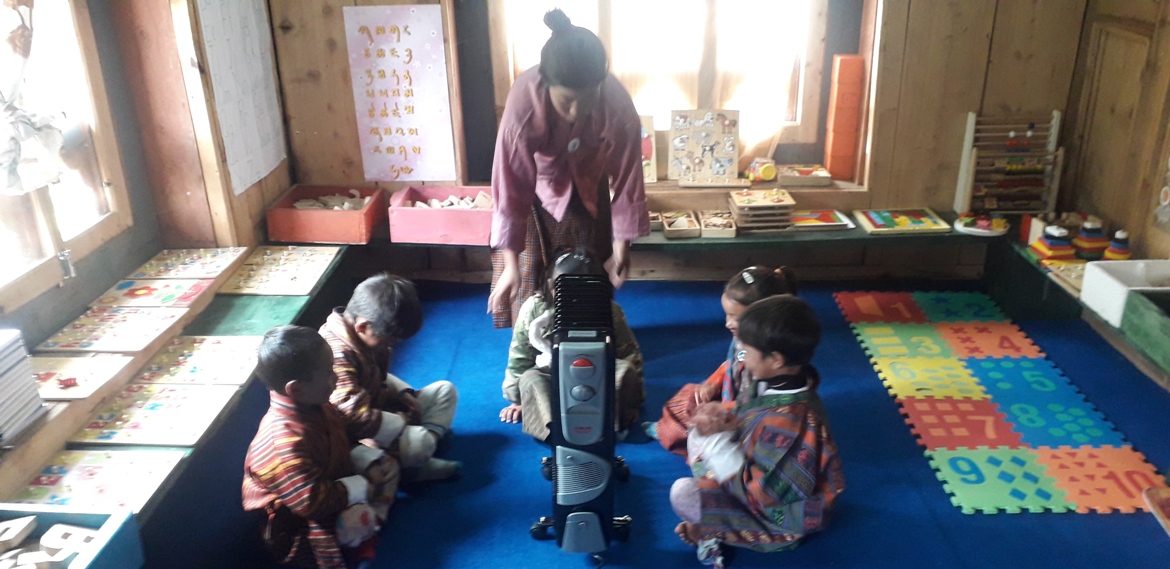
Lungo Extended Classroom (ECR) is one of the most remote and northernmost schools located at an elevation of more than 4000 meters above sea level; high up in the Himalayas in Gasa dzongkhag. Laya Central School is the parent school of the ECR. The school benefited the localities of Lungo Chiwog over the years.
Currently, 24 students are studying under Lungo ECR with two teachers and three Early Childhood Care & Development (ECCD) facilitators. The school remains closed for almost four months in a year because of the short summer and long winter season.
The government of Bhutan fully funded the ECR; thus, providing free education to the children of Lungo. However, the ECR was not equipped with necessities for years.
With help from UNICEF, they could set up a safe playground for the ECCD students and brought toys for the class in 2018; the heating system in the classroom for the children remained as one of the significant challenges.
Due to its unfavourable geographical location and weather, at Lungo ECR, the temperature during the peak summer season climbs hardly above 10 degree Celsius. The students have to carry their pack lunch, and during lunchtime, one can see students taking cold packed lunch, which was prepared early in the morning by their parents back home.
It’s a problem faced by every student studying in the ECR, and also a major challenge for the kids enrolled in ECCD (children from the age of 3-5) without a proper heating system in the classroom, making it difficult for both children and the facilitator to run the centre.
Thus, to overcome these challenges, we wrote a letter to Shama Foundation seeking support to purchase micro-oven that can be used for heating pack lunch and a panel heater for the ECCD classroom.
Shama Foundation is a Non-profit Organisation dedicated to the cause of social welfare, education, and health care. The foundation has benefited the needy societies in Bhutan with an immediate response.
As per our request, Shama Foundation provided financial support to purchase two Panel Heaters and a Microwave oven for the ECCD centre in July 2019. We bought the items from Thinley Norbu Enterprise, Olakha, Thimphu and delivered to Gasa. However, the parcel was stranded in Gasa for weeks due to heavy monsoon that made mule tracks unsafe for travel.
In the last week of August 2019, with the help of Lungo Tshogpa, panel heaters and oven could finally make its way to Lungo ECR. When we see small kids with cute happy smiles worn on their faces enjoying the warm atmosphere of the classroom; it does not doubt bringing happiness in the hearts of people who are involved in making this miracle happen.
We are very much obliged to the founder of Shama Foundation, Mr Surya and his wife, the representative of Shama Foundation in Bhutan, Ms Dorji Wangmo and Lungo Tshogpa for helping us with the transportation.
I am overwhelmed in all humbleness and gratefulness to acknowledge with my sincere appreciation to all those who were involved in making this project happen in Lungo Extended Classroom in Laya, Gasa.
Twist of fate for Zhemgang’s Flagship Program
- November 26th, 2019
- 3,000 views
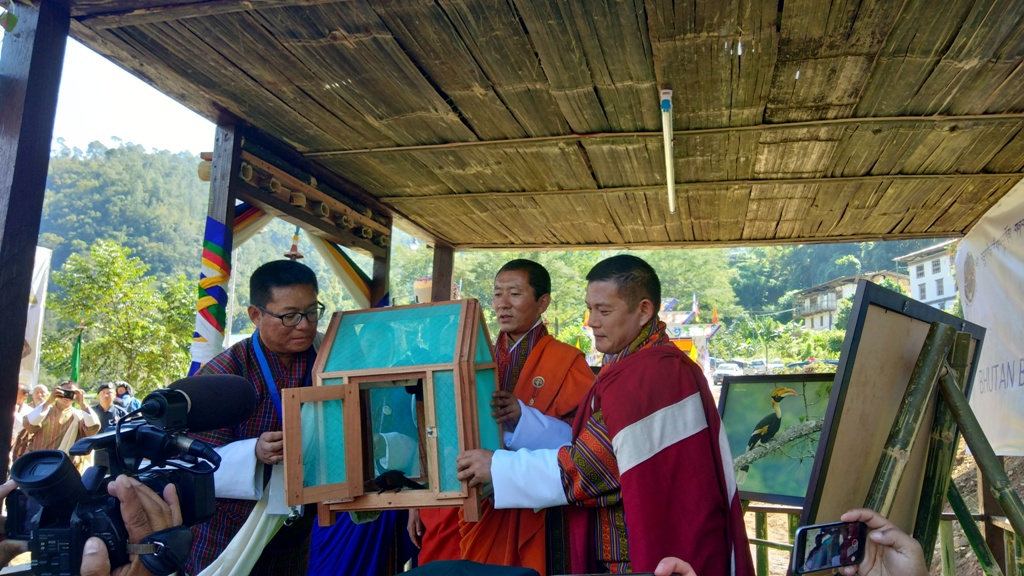
The celebration of feathered friends at Tingtibi in Zhemgang highlighted the potential of the place is one of the best birding sites in the region during Bhutan Bird Festival held from 11-13th November 2019. Otherwise, the town slept throughout the year.
Zhemgang’s dream of exploring their richness in Eco-tourism could have received an enormous boost if the government had not removed the dzongkhag’s tourism flagship programme in June this year.
The decision to remove the flagship programme came under the scrutiny of the National Council and opposition party; rightful institutions under the sacred constitution to maintain checks and balance of the government.
A confused discourse took place on social media platforms questioning government’s intent and bias while replacing Zhemgang dzongkhag with Sarpang for the flagship programme.
The Government was adamant about its decision and disregarded the resolution passed by the parliament.
The decision of its kind based on the past precedent, as told by the Prime Minister was not healthy because we cannot afford to continue with flaws of the past to make the decision appear politically right. Everyone must uphold the constitution and its prestigious institutions.
The change could have been for better or worse reasons, but the removal of policy that was passed by the parliament undermined the wisdom of essential institutions: national council and the assembly.
If the Cabinet was to make the final decision, redoing all works done by the elected representatives, our role of being people’s representative is at stake.
The government should be reminded that the Parliament, which consists of the Druk Gyalpo (His Majesty the King of Bhutan), the National Council and the National Assembly, shall ensure Government safeguards the interest of the nation and fulfils the aspirations of the people through public review of policies and issues, Bills and other legislation, and scrutiny of State functions.
All said and done, and now it seems that the Government is trying hard to reconcile and heal the political wound they have created with their shortsighted decision.
The three days festival may have contributed to the local economy, but not in terms of the development in the district; significant infrastructure development required to trap tourism potential of the region, which the dzongkhag had been planning for a long time to attract increased numbers of tourists.
As per the Bhutan Poverty Analysis 2017, the poverty rate in Zhemgang stands at 25 per cent, one of the highest poverty rates in the country while Sarpang fares better with 12 per cent. On contrary budget approved for Zhemgang and Sarpang were 701.266 M and 741.903 M respectively in the Financial Year 2019-2020.
When Zhemgang was excluded from the focus group of tourism flagship programme, it became controversial. Some saw the move as being politically motivated.
But hope for Zhemgang still alive with a twist in the tourism flagship program. As per the Tourism Council of Bhutan, the plan would be implemented as a circuit-based programme instead of focused dzongkhag approach in its flagship programme. All dzongkhags will get equal opportunities or priorities depending upon their capacity and feasibility. As per TCB, every dzongkhag will have one or two projects in consultation with the local government and the private sector.
TCB plans to brand four dzongkhags—Zhemgang, Gasa, Lhuentse, and Sarpang in the current fiscal year. The promotion and branding of other dzongkhags will follow.
Although Zhemgang is considered as a paradise for botanists and bird watchers, the dzongkhag has received only 1,263 international tourists (332 arrival and 931 bed nights), which is 0.14 per cent of tourist arrival in the country. Considering the dzongkhag’s rich biodiversity and the unique attraction, the number of tourist arrival was a concern, and the dzongkhag does not have star-rated hotels and has only four village home-stays.
Zhemgang is most suitable for bird watching, river rafting and the government allocated Nu. 27 million to support the recent bird festival and to develop birding infrastructure.
The captive Siberian Rubythroat (a new bird species) set free by the Honorable Prime Minster during the festival may breathe fresh air of Zhemgang, and rapid growth of Eco-tourism in the region is very much anticipated.
The decisions we take will have a long-term impact, for better or for worse, on our country and our people. I wish the Government of the day would make their decision wisely as per the law and by upholding the sacred constitution of Bhutan.
Disclaimer: The views and opinions expressed in this article are those of the author based on literature review and do not necessarily reflect the position of National Council of Bhutan.
Madanjeet Singh Memorial Lecture
- April 17th, 2019
- 3,409 views

Speech by Hon. Dorji Khandu, Member of Parliament of Bhutan, at the UNESCO Goodwill Ambassador Madanjeet Singh 4th Memorial Lecture on the theme: The Role of Young Parliamentarian in the Regional Cooperation
Venue: Jawaharlal Nehru Auditorium, Pondicherry University
Date: 16th April 2019, 10:00 am
Today we are gathered here to celebrate an icon of our time, and a great soul whose work in literature, art, humanity, and leadership is unparalleled.
Prof. Gurmeet Singh, Hon’ble Vice Chancellor, Pondicherry University
Mme. France Marquet, Principal Trustee, Madanjeet Singh Foundation
Shri Mani Shankar Aiyer, Chairperson, SAF-India Chapter
Prof. Venkata Ragotham, Dean, SSS & IS
Prof. A Subramanyam Raju, Head UMISARC & Centre for South Asian Studies
Dr. S.I. Humayun
Professors
SAF Scholars and Students
Ladies and Gentlemen:
I have the honor and privilege of extending to you the warmest greetings of His Majesty the King Jigme Khesar Namgyel Wangchuck and the people of Bhutan. I would like to thank the Pondicherry University and South Asia Foundation for the warm reception and generous hospitality extended to me since my arrival in Chennai.
I would also like to convey my sincere appreciation & gratitude to Mme. France Marque for inviting me to be part of today’s event. More so, I am extremely pleased to be sharing with the August gathering today, my views on the role of young parliamentarians in the regional cooperation as to celebrate the legacy of late Madanjeet Singh.
Having served in UNESCO for about half a century, his name is synonymous to this esteemed organization itself. It is beyond doubt that everyone gathered here would share the same opinions as mine every time we remember late Madanjeet.
As part of its celebration and to keep alive the tradition, the university has been inviting outstanding alumnus of recognizable personalities to participate and deliver during the Madanjeet Singh’s memorial lecture every year.
To this, I accolade the university and its faculties for such meaningful arrangement. And, I’m once again honoured to be standing here with you all today. Frankly admitting, I’m neither qualified nor an outstanding personality yet, but being one of the recipients of the prestigious South Asia Foundation Scholarship and reaffirming my position now as one of the youngest parliamentarians, I am deeply humbled to pay my gratitude and tribute to the late Madanjeet Singh. This occasion, therefore, is rare as gem and special as my very own living.
Your Excellency:
Now, though the geographical structure of Bhutan may be less known to many of you, yet again this may equally be an occasion to share a glimpse about my root. Something that interests me and I’m sure it will also be of interest to you all.
I was born in a Highland community called Laya and to put it simple, I’m a son of nomads. We rear one world-famous animal species called Yaks.
Laya, my village, though a popular destination for tourists, is still not opened to a motorable road. To my vanity, I was among the first to hold a university degree from my village. My graduation then was a piece of news that stormed media. Quickly enough, I became quite a celebrity in my own country by default of being a nomad graduate.
As saying goes, with difficulties come blessings, frankly speaking, my degree was the most prestigious scholarship bestowed directly from His Majesty the King and that was how I earned my first engineering degree from Thailand.
My position among young politicians in my country was not without sacrifice and hard work. It was difficult to convince people to vote for a young fresh graduate and even worse when the total voter is just over 2000.
In 2013, I have contested for the first time when I was just 26 years old. I tried but did not succeed. Nevertheless, I stood up again for my dream and I am living that dream today, representing my people in the truest sense.
Your Excellency:
I would like to share that Bhutan’s house of review is led by one of the youngest chairpersons since democracy was instituted a decade ago. Many young MPs won seats in the parliament, including young women MPs.
As per the latest IPU report 2018, Bhutan is the only country in Asia, where the share of Young MPs under age 30 is approaching at 9.1 percent after Nordic countries (Norway, Sweden, and Finland) with 10 percent, and also the share of Young MPs under age 40 & 45 are 54.6 percent and 80 percent respectively.
As we move on to confront the common challenges of eliminating poverty, boost gender equality, address youth issues, managing environment and natural resources, adaptation and mitigation of climate change and building resilience to natural disasters, take measures to counter terrorism, promote human rights, invest in renewable energy, and among others in the region, I would like to reinforce that the solution is in enhancing regional cooperation and even more important to include young parliamentarians in this movement.
Despite youth making up 35 percent of the population in South Asia it is less encouraging to learn that only minimum percentage of them are in the parliaments and their potential to promote socio-economic growth and enhancing gender equality are a shortcoming.
Recently, I was attending the 140th Inter-Parliamentary Union Assembly at Doha in Qatar from 6-10th April. IPU research has revealed that in 2018 only 2.2 percent of parliamentarians were under 30 years old and 15.5 percent under 40 in lower chambers and unicameral parliaments in the region.
As per the IPU report, promoting the participation of young people in political life is becoming a higher priority worldwide. Over one-third of the 169 targets established as part of the United Nations Sustainable Development Goals (SDGs) relate to young people and the importance of their empowerment, participation, and well-being.
Twenty targets across six SDGs-relating to hunger, education, gender equality, decent work, inequality, and climate change-specifically focus on youth. Young people’s participation is also vital to the achievement of two additional SDGs: on peaceful, just and inclusive societies and on partnership and implementation.
I believe that young MPs have a crucial role to play in eliminating poverty and addressing youth-specific needs and interests. Sometimes the brightest ideas emerge from young minds, especially on issues they face in real life situations.
Working towards the common goal of achieving SDGs requires the partnership of government, the private sector, civil society and citizens to save this planet for the future. The right way is to include young parliamentarians in these strategic plans and foster mutual learning to support each other in the region.
At times, I have this pertinent thought popping up in my mind every time that if we, the younger generations do not care about our future, who will and who should? Because we have longer years to live and we have futures to make. We have the responsibility, logic, need, and rationale to serve our country in specific and the world at large better. If then, why don’t we act from now on?
Climate change is hitting us hard and that is due to an insatiable desire for so-called ‘unsustainable development’, a concept propagated by some western thoughts, and therefore the world is deeply cornered in four walls.
If a cat is cornered by a dog and it has nowhere to escape, it fights back. Similarly, nature and our world has already begun fighting back on us like a cornered cat.
As the world become warmer, extreme weather events are becoming more frequent and intense, Glaciers have begun melting, sea levels are rising, prolong droughts are putting pressure on food crops, many animal and plant species are being driven to extinction and polluted airs have begun causing lung cancer.
Worst of all, small countries like ours suffer the most impact out of others’ carelessness. Though Bhutan maintains 72 percent under forests cover and though Bhutan is a carbon neutral, for how long can we remain carbon neutral? An avalanche of Indian and Chinese pollutions alone can engulf tiny Bhutan’s effort of environmental conservation.
It’s hard to imagine what we as individuals can do to resolve a problem of this scale and severity.
That is why, as I stand here today, especially as a young Parliamentarian who cares for the world, groomed with the support of South Asia Foundation Scholarship (SAF) beyond engineering to serve the world better, I will voice out for world happiness. I will protest for peace and tranquility in the region. I will commit myself strongly for legislative proceedings that can make the world better.
It is never too late for us to take action and fight like our lives depend on it -because they do. In fact, Climate change is a global problem, felt on local scales, that will be around for decades and centuries to come.
Your Excellency:
Generally speaking, to sum up, increased regional cooperation is the answer to all these problems. Like today, we must continue to exchange our views and think through global solutions to regional and country-based issues.
To conclude, I would like to highlight the need to encourage young parliamentarians in political processes to understand better the issues related to youth like unemployment, inequality, discrimination, and lack of access to quality education that is pressing in the region.
Your Excellency:
To empower young parliamentarians, there is a need to give them a voice in the policy and decision-making process of their respective governments; provide them with required skills and knowledge to engage their governments more effectively and in issues significant to young people.
May I end my speech paying tribute once again to Shri Madanjeet Singh for playing a part in giving me the opportunity to become the leader I am today.
Tashi Delek! Thank you all.
Thank you JICA Bhutan
- January 20th, 2019
- 2,261 views
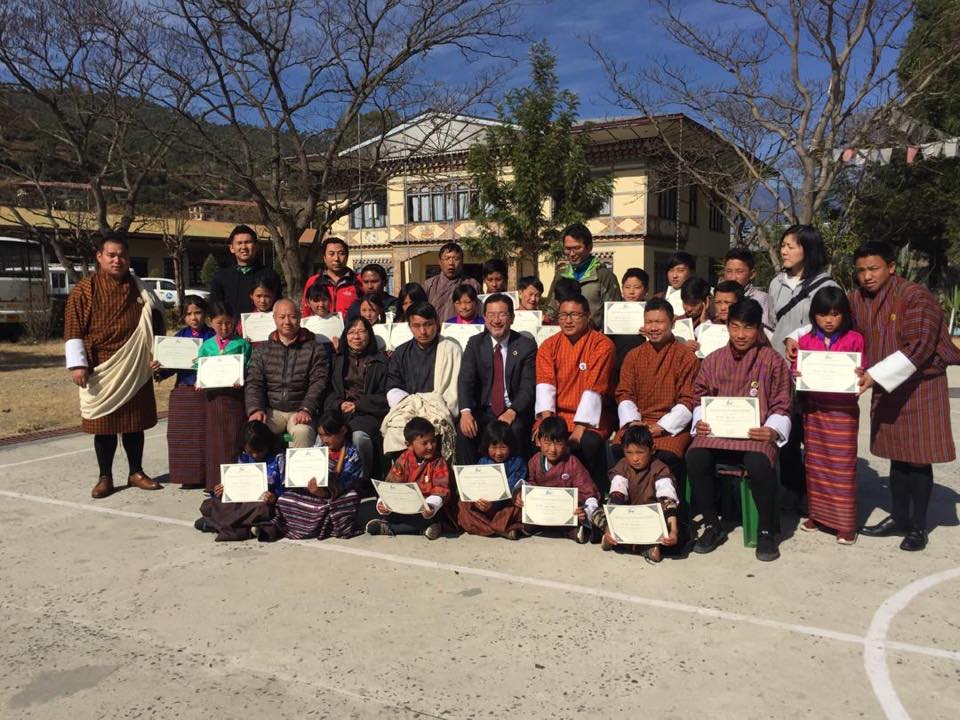
This article is to express my heartfelt gratitude for the JICA Bhutan’s winter camp held in Khuruthang, Punakha for the students of Lunana Primary School under Gasa Dzongkhag last week.
The initiative came during the time of the year where the students from the most remote Highland community would otherwise be idle and their time passed without any fruitful engagement. They would have perhaps been repeating the same old routine of helping parents with household chores for the girls, and the boys going after the herds.
The winter camp that helped students explore various lessons, skills, arts, sports, and diverse cultures through fun-filled activities would have helped the students from the school among glaciers move deep into learning literature, experience lives beyond highlands and define themselves as special children.
As the camp enabled the children to experience new opportunities, the noble initiative from JICA Bhutan would have helped them acquire essential skills of getting along with friends, refine their personalities and enhance healthy living and development.
Above all these children would have made good memories during the camp, which they will cherish in their entire life.
Knowing about the officials involved in the camp, I am confident that they have had a positive influence on the children and have made differences while growing up as an individual.
With my due respect for the first-ever winter camp held for the students who descended from above 5000 metres and letting them learn the best wisdom under the warm winter sun of Khuruthang, I hope this noble initiative will continue hereon.
The students come from one of the most remote highlands in Gasa Dzongkhag. The school going conditions of those students are very different from the rest of the students in Bhutan.
The unique culture and traditions, people and beautiful aroma of the place remain unexplored, and the location is everyone’s wish today. The camp would have taught them the diversity of the area, culture, and people.
Gasa Lamai Singye upset with the road quality
- January 18th, 2019
- 4,986 views

Soul of Gasa Lamai Singye upset with Punakha to Gasa road quality, Galem drives a low clearance car
Blacktopping works of Punakha to Gasa secondary national highway (SNH) started on November 2016, and the tasks have been split into 3 phases. The contract works of Base course & Bitumen sealing on Punakha (Shartem Draphu) to Trashithang (8.70 km) and Trashithang to Damji (Paniko) (7.80 km) were awarded to M/s Hi-Tech Company Pvt. Ltd. with an approximate contract value of Nu. 22.69 m and Nu. 22.54 m respectively. The Paniko to Goenteygang Road (10.21 km) was awarded to M/s Biky Construction Pvt. Ltd. with an approximate contract value of Nu. 39.56 m and Goenteygang to Baychu Road (9 km) was awarded to M/s Tshering Samdrup Construction Pvt. Ltd. with an approximate contract value of Nu. 48.78 m.
The roads, despite being crucial for ensuring administrative ease, economic development through tourism and livelihood enhancement through connectivity, the quality and work progress of the roads as mentioned earlier have remained a major stumbling block thus disappointing the people.
If one gets to ply on this road, it is noticeable that the quality is no better than farm roads elsewhere – marshy and sinking areas have continuously obstructed blacktopping, and those blacktopped are to be mended now and then. Worst of all, the lack of timely and proper monitoring has led to quality compromisation.
The standard design pavement as regulated is not suitable because of the difference in soil bearing capacity, different high altitude, weather situation and high traffic intensity as the Dzongkhag being one of the most sought tourists and trekking destinations in the country.
As per the Road Act 2013, Road Rules and Regulations 2016 and Road Classification in Bhutan 2017, the secondary national highway to be blacktopped with AC/PMC 25 mm, which could not sustain the harsh weather and the road stretch with adverse weather conditions and soil properties causing a significant impact on the quality of blacktopping. The problem couldn’t be solved despite increasing the thickness of AC to 40 mm as per BoQ of the contract awarded.
Numerous literature and studies oppose applying of AC or premix carpet in the marshy area owing to its nature of losing Bitumen because of continuous water sipping occurring in such conditions.
The works at second and third phase stretch of road in Gasa has begun since December after monsoon stopped the work for months. In most location, the roads could not be blacktopped because of the marshy conditions throughout the year (due to rain during summer and ice & snow during winter).
During my inspection with a team from Dzongkhag in November 2018, we found that the applied PMC and the thickness of blacktops were not uniform and the stretch completed with blacktopping had to undergo repairment within a few months of completion. The change in the standardization of pavement design is the need here.
The pavement design specifications are not standard, and a proper assessment is required, keeping in mind the differences in soil properties, geological stability, traffic parameters, and also the climatic conditions.
The situation does not remain a stand-alone, and I am confident many other Dzongkhag roads classified under the secondary national highway (SNH) would have faced similar problems.
My perspectives and concerns over the quality of road blacktopping from Punakha to Gasa are evident from the audit findings in the Annual Audit Report 2017 which states “The Regional Office, DoR, Lobeysa had not directed the contractor to rectify defects noted in the resurfacing/Blacktopping of Punakha-Gasa Secondary National Highway (SNH) between chainage 21km-35km. The defective works requiring rectifications was pointed out during the previous audit as well, but were not carried out at the time of audit in September 2017.”
Unless there is a change in the Road Pavement Design and immediate intervention of resurfacing or re-blacktopping of the roads with Dense Bituminous Macadam (DBM) as in Primary National Highway, the ongoing blacktopping from Punakha to Gasa will disappear like morning dew. Having had an engineering background and witnessing the field issues personally, I could guarantee that this project will neither save the Government’s budget, nor will it benefit the public. Being a bonafide citizen of the Drukyul, I am concerned about the quality of our development activities and do not hesitate to raise my voice for the people of Gasa in specific and the nation in general.
Nonetheless, the question and answer session with the Minister for Ministry of Works and Human Settlement in the 11th sitting of the 22nd session of the National Council was an assuring one and I, on behalf of the people of Gasa remains indebted to Ministry, and soon enough, a favourable outcome is anticipated.
A durable road condition with smooth blacktop can reunite the adorned souls of Legendary Gasa Lami Singye and Changyul Bhum Galem.
Personal Welfare scheme for Gasaps
- December 24th, 2018
- 5,549 views
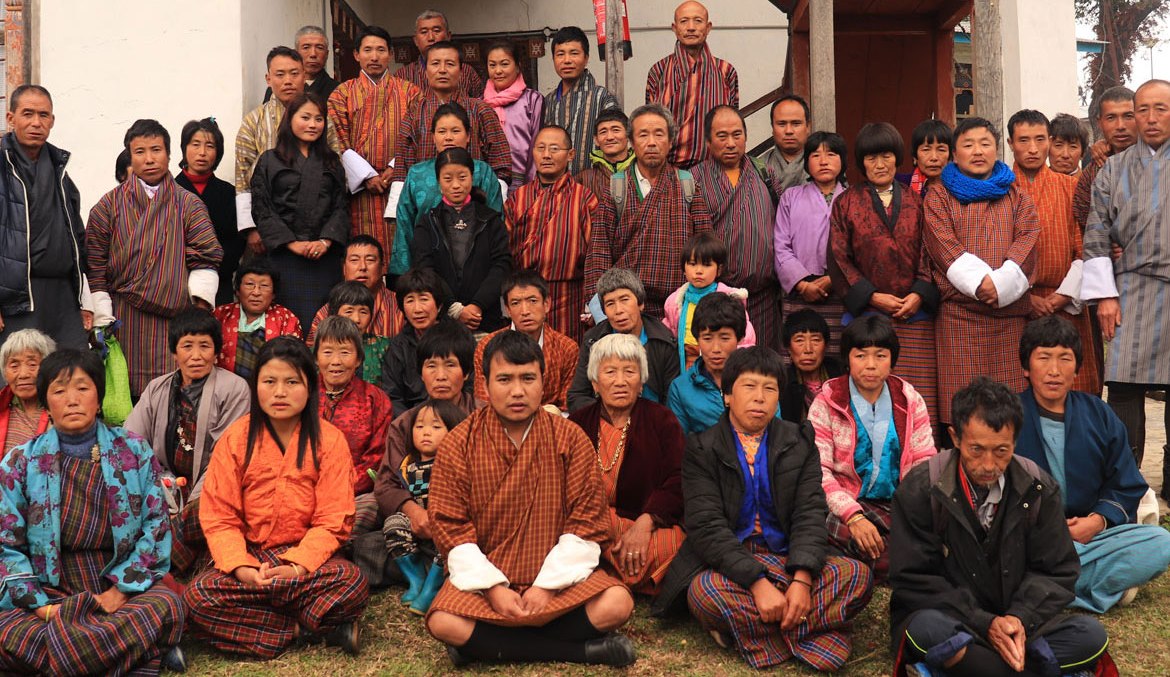
Rationale
Growing up close to the community and having learned my early education at Gasa, I have experienced and seen all sort of difficulties and hard work the people of Laya and remote Dzongkhag of Gasa had to pursue to earn their living.
Our fellow Gasaps for giving me the best experience and wisdom that helped define myself better as an individual, I realized that the time has come for me to give back to my constituents. The initiative is voluntary, and it is because I see myself as Gasap always. We shall endure and progress together.
Since death is inevitable to all, I feel it will be comforting to prepare ourselves for any uncertainty and to accept this truth of life with bliss. In this regard, it is quintessential to start so-called Welfare scheme for Gasaps to extend our solidarity and support in times of adversity and bereavement amongst our people.
In discharging my responsibility as people’s representative, I vow to surrender my annual discretionary allowance entitled to the Member of Parliament solely for this Welfare Scheme besides 30% of the basic monthly salary in the hope to set definite precedence.
Objective (s):
- The welfare scheme aims to develop and promote further goodwill and cooperation amongst the people of Gasa, thereby enhancing community vitality.
- Support all Gasaps by providing Semso (cash) during the times of bereavement to direct relative as reflected under the beneficiaries of the scheme.
- Extend moral and physical support or assistance required by the family members of the deceased.
- Support less privileged ones always.
The Scheme’s Benefits
A member shall be allowed to avail the following welfares of the scheme:
- Semso amount Nu 5,000 /- (five thousand only). The benefit will be made available only in case of the demise of a direct family member, namely- parents, spouse, and children.
Eligibility
- Only the registered citizens of Gasa district will be eligible for the welfare scheme.
- All Gasaps shall automatically become a member of the scheme and doesn’t require formal registration.
- No registration fee required.
- The scheme does not require any contribution from the members.
- Benefits or welfares was paid from 10th May 2018 and will be available until 10th May 2023.
- The benefit can be availed only by one member of a household. It can either be head of the family, household or a direct family member of the deceased.
The welfare services can be availed by calling directly to me or through Gewog Gups. I will try my best to reach the Semso and transportation personally. However, in my absence, I will seek support from the local government officials to reach the welfare on time.
I am happy to share that the welfare scheme was well received when presented to the people of Laya, Khatoed, Khamed and Lunana constituents.
I wish this welfare initiative intended exclusively to benefit the people of Gasa will relieve beneficiaries during such hard times. In my future endeavour too, I shall care to continue with the scheme unconditionally.
Legalization of Paris Polyphylla
- September 26th, 2018
- 9,481 views

The Natural Resource and Environment Committee and National Council members convened a consultation meeting with the Ministry of Agriculture and Forests on 12th September and Legal status of Paris Polyphylla was one of the issues discussed amongst others. In this article, I will briefly share the summary of the comprehensive presentations made by MoAF officials pertaining to the legal status and the way forward.
What is Paris Polyphylla?
Paris polyphylla is an Asian species of plants native to China, Taiwan, the Indian Subcontinent, and Indochina. It produces spider-like flowers that throw out long, thread-like, yellowish green petals throughout most of the warm summer months and into the autumn. In the fall, the flowers are followed by small, scarlet berries. It is a perennial, which slowly spreads, and survives in leafy, moist soil in either complete or partial shade. This flowering plant usually grows up to 90 cm (3 ft) high and spreads out about 30 cm (1 ft) wide. Its leaves grow in a single whorl below a flower growing in two whorls.
In Bhutan, it grows at an altitude up to 3300 meters and grows well in moist and humus-rich soil, under the forest canopy of full shade-partial shade. Rhizome is made up of modified stems of plants that usually grow underground, contains roots, and shoots from their nodes, and it grows in a creeping manner. Paris Polyphylla is known as Dou Sethochem or Dochu Kewa in Dzongkha, Thoksampa in sharchop kha and Satuwa in lhotsham kha.
The Paris polyphylla collection has been legalized with collection permit issued by the Ministry of Agriculture and Forests based on the Forest & Nature Conservation Act 1995. The collection can be done through management groups or individual basis as interim measure instructed by MoAF.
Rhizomes are allowed for collection from October to November after the fruits are fully ripened. Flowers during April & May and the collection of a plant during these months would seriously affect the sustainability of it in the wild.
With the legalization of the collection of the Paris Polyphylla, MoAF encountered some constraints such as the formation of the management group is not possible as it grows sporadically over a large area, Illegal collection by outsiders makes the resources unsustainable, Untimely collection of rhizome (before maturity) in this manner is likely to pose threat to its sustainability in the wild and It takes about 6 years to fully mature rhizome (3 layers of branch whorl).
The forest department issued an office order that anyone found collecting the roots of the plants without a permit or outside the harvesting season would be penalized.
Fines & compensation are as per the Forest and Nature Conservation Rules and Regulations 2017, Section 417- the commercial taking of restricted non-wood forest products. A fine minimum of Nu 5,000 with possible extension up to Nu 50,000 depending on the degree of offense and compensation at a fair market value of the forest produce involved will be imposed. The market value was fixed at Nu 3,000 a kilogram for dry and Nu 1,000 a kilogram for fresh roots. The fines and penalties were standardized for illegal collection to discourage illegal practices.
As part of the long-term sustainable harvest, the MoAF has started domestication Trial at Bjemina – where plants growing well but rhizome formation has not taken place and Deptsang, Shingkharlauri – nursery sells plants and plantation doing well. They have also done the upscaling of domestication and enterprise set up for product development and diversification.
Paris Polyphylla has been used in Traditional Chinese Medicines for years. The plant can be used as a pain reliever, antiphlogistic (removing heat), antispasmodic, diphtheria, for fever, headache, wounds, and burns, among others.
There are few field Manual or Guidelines for the sustainable production and management, guidance and instructions for nursery development, cultivation and domestication of Paris polyphylla such as Guidelines for resource assessment and management of Dou (2012) and A field manual on Nursery management and cultivation of Dou (2012).
Gasa to grow Mountain Hazelnut
- September 24th, 2018
- 4,887 views
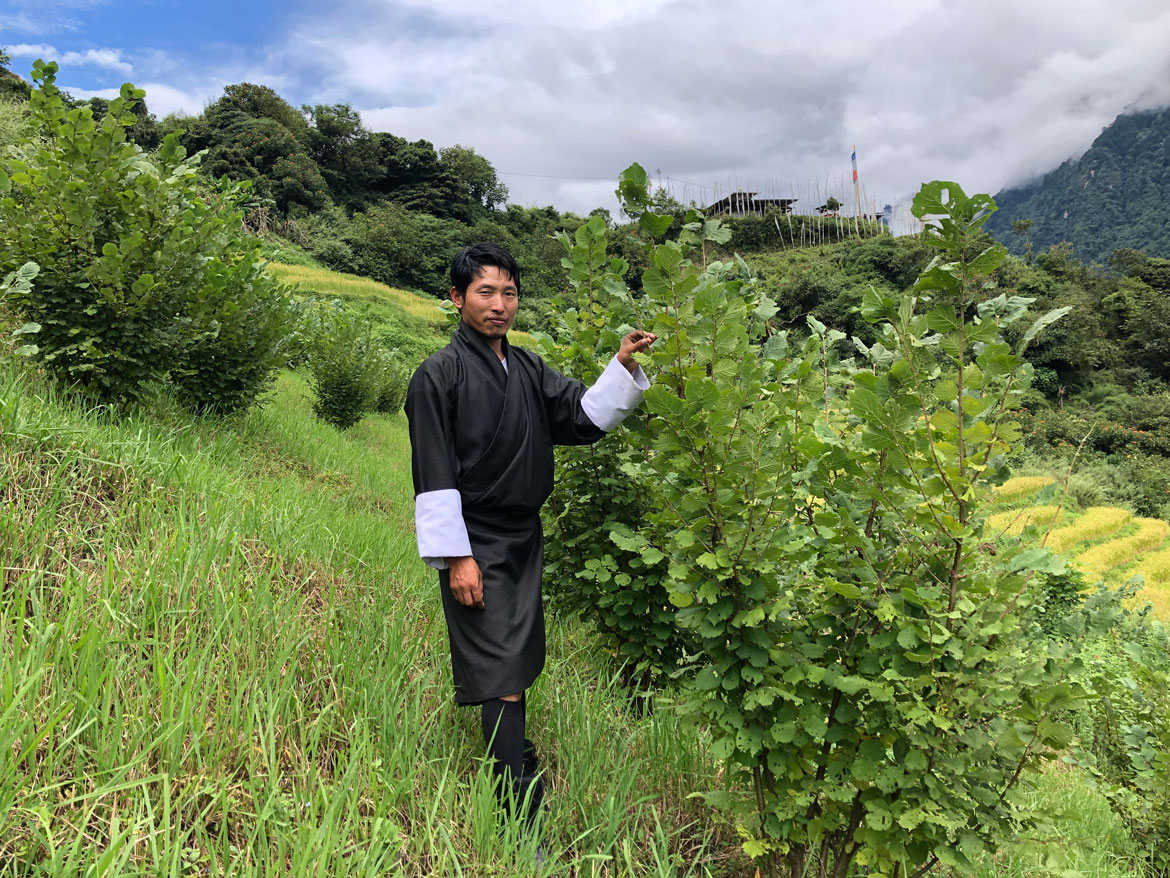
Mountain Hazelnut Venture Private Limited (MH) is a Public-Private-Company-Partnership (PPCP) and Bhutan’s first 100% FDI Company. In an MoU with the Royal Government of Bhutan, both parties committed to enabling MH to plant 10 million hazelnut trees on the fallow and degraded land. MH creates long-term partnerships with farming households and community groups through which MH supplies hazelnut trees and technical support at no charge and guarantees to buy back the nuts upon harvest. MH then processes and exports the hazelnuts to international markets to optimise pricing and generate foreign exchange.
While MH is a for-profit company, its social objectives include significantly increasing household income for tens of thousands of farming households and community groups in rural farming communities and long-term direct and indirect employment for thousands more Bhutanese. MH currently employs approximately 800 nationals and besides, provides income for more than 1,200 people who provide goods and services to the Company.
To date, MH has planted over six million hazelnut trees in fallow orchards in 18 Dzongkhags across Bhutan. The Company serves over 11,000 farming households and community groups through MH’s field team over 200 highly trained hazelnut experts.
Mountain Hazelnuts Company has partnered with over 40 households in Gasa Dzongkhag, to plant hazelnuts on approximately 30 acres in the Khatoed and Khamed Gewog.
I, being an elected representative of Gasa, am very enthusiastic about supporting this beautiful project and looking forward to helping my constituency by providing an alternative cash crop option to promote sustainable development in Bhutan.
The success of this project will significantly contribute to the growth of Good to Great Gasa initiatives whereby rural communities in Gasa can generate reliable income and improve their livelihoods. Besides the revenue from the collection of medicinal herbs and growing organic vegetables, a secure income from hazelnuts will have positive spillover effects on education, gender equality, continuity of traditional lifestyles, and rural development.
Visit Mountain Hazelnut’ official website (www.mountainhazelnuts.com) to learn more about Mountain Hazelnut.
Writing a Research Proposal
- September 5th, 2018
- 3,175 views

The main purpose of a research proposal is to tell others that you have a worthwhile project to conduct and possess the necessary competence to carry it out. In other words, you have to tell people what you plan to do, why you want to do it, and how you are going to do it. You need to convince your reader that you have an exciting research idea and that you have a good grasp of the relevant literature, the major issues involved, and the appropriate methodologies. A good proposal need not be long. Typically, a research proposal comes in two forms,
- A short proposal – a short paragraph to identify the project
- A long proposal – a formal, multiple page-report that provides background information, your rationale for conducting the study, a review of literature, methods, and conclusions. This type of a proposal runs anywhere between 20 to 40 double-spaced pages.
The Short Proposal
This identifies the following,
- The specific topic
- The preliminary thesis sentence or opening hypothesis (research need), intended audience (general or specialized)
- The purpose of the proposed work (explain, analyze and argue)
- The outcome and the constraints
The Long Proposal
Cover Page:
This is optional depending on the length of the report. This should include the title, your name, and the person or agency to whom you are submitting the proposal. Also, the date of submission has to be clearly stated.
Title:
It should be concise and descriptive. For example, the phrase, “An investigation of . . .” could be omitted. Try to make the title catchy; a good title not only pricks the reader’s interest, but also predisposes him/her favourably towards the proposal.
Abstract:
It is a brief summary of approximately 300 words. It should include the research question, the rationale for the study, the hypothesis (if any), and the method. Descriptions of the method should include the design, procedures, the sample, and any instruments that will be used.
Introduction:
The main purpose of the introduction is to define the context and boundaries of your proposed research. Therefore, it will begin with a general statement of the problem area and conclude with a specific research question (purpose statement). You need to explain why you are interested in selecting a particular topic. The introduction should cover the following elements:
- A general statement or description of the research problem, which could be an empirical or theoretical issue. It could also be a technical or non-technical problem. The best approach is to ask a single, important question that can be answered through the proposed research.
- The background of the problem. It should set the stage or provide the context of the research problem. It should provide both the historical background and the contemporary scene, encompassing all the key players and their major publications. In other words, it should paint the research question in broad brushes and cite representative studies.
- A brief description of the major theoretical models related to the research problem, indicating the theoretical perspective you have chosen or developed for your study.
- Identification of the key independent and dependent variables.
- A clear statement of the purpose and rationale of your research, indicating why the study is worth doing.
- A statement of hypotheses and an explanation for your predictions. However, for exploratory or experiential types of research, you may not have any hypotheses.
Literature Review:
This is optional. This may be incorporated within the introduction if the report is not very long and descriptive. This section provides a more detailed and critical review of the literature directly bearing on the proposed research. For example, you should evaluate various theories in the light of available research findings. You should also examine the relevant literature related to the key variables, research instruments. Your scholarship will be in question if you fail to cite some of the influential studies or misread the papers you have cited.
Try to use sub-headings to organize your literature review in a logical and meaningful way. For example, having established the importance of your research area and its current state of development, you may devote several subsections to such issues as: theoretical models, measuring instruments, gender differences, etc. Each subsection should represent a major aspect of your proposed research. For each segment, you need to critically examine relevant literature. The purpose of the literature review is to demonstrate your knowledge and understanding of the problem area, as well as justify your study. You need to convince your reader that your proposed research will make a significant and substantial contribution to the field (i.e. resolve an important theoretical issue or fill a gap in the literature).
Methods:
- Describes the design of the proposed study.
- Describes your population and sampling procedure.
- Describes the measuring instrument to be used.
- Describes the procedure and the time frame of data collection.
- Describes how you will analyze the data.
You need to demonstrate your knowledge of alternative methods and make the case that your approach is most appropriate for your research question. You also need to explain why you choose a particular sample of subjects.
Please note that your research question may be best answered by qualitative research. Since there are no well-established canons in qualitative analysis, your method section needs to be more elaborate than what is required for traditional quantitative research.
Discussion:
States both the significance and limitations of the proposed research. You need to communicate a sense of enthusiasm without exaggerating the merits of your proposal.
Common Mistakes in Proposal Writing
- Failure to provide the proper context to frame the research question.
- Failure to delimit the boundary conditions for your research.
- Failure to cite landmark studies.
- Failure to accurately present the theoretical and empirical contributions by other researchers.
- Failure to stay focused on the research question.
- Failure to develop a coherent and persuasive argument for the proposed research.
- Too much detail on minor issues, but not enough detail on the essentials.
- The proposal is not well-organized. For example, some materials are mentioned two or three times in different sections of the proposal. The most common organizational weakness is that the proposal goes “all over the map” without a clear sense of direction. The best proposals move forward with ease and grace like a seamless river.
- The writing is neither clear nor concise.
Legal Protection of Indigents, a Constitutional Mandate
- June 29th, 2018
- 3,709 views

“A just society is the one where justice prevails throughout alike. To have equal right to approach the court is rendered useless if the right can’t be exercised. It is then, nothing more than a paper promise. The rich and influential can approach the courts because they have means, but the poor have to face injustice simply because they have no money to hire a lawyer. It is therefore in the interest of justice to establish a social order when the poor not only have the right but also the means to seek justice. The idea of legal aid to the poor is, thus a step in this direction”.
Monish Arora, Short Essays & Paragraphs on Law (University Law Publishing Co., Delhi, 2nd Ed., 2006) 75
What do you all think about the legal aid services? I rose to speak, for my heart cried as I effortlessly connected my past and present to the concern that can potentially bring voices to the voiceless should there be this so-called ‘legal aid service’. Displeasing at times, for many of us are barely aware of who an indigent person is. Well, we would have known this noblest idea had it not been cocooned by institutions that can potentially give life to the Council’s proposal.
Well, according to the legislative committee of the NC, an indigent person is a person who is poor, helpless and needy who cannot afford the services of a lawyer for the conduct of a case or a legal proceeding.
In 2014, the then Member of Parliament, Gasa Dzongkhag, Dasho Sangay Khandu, first raised the Legal aid service to an indigent person in Parliament. Following this, the need for providing legal aid services to indigent persons have been discussed in different sessions of the National Council, particularly during the deliberations on the annual budget and appropriation bill. This was because a small amount of budget for this purpose was allocated every year but had never been utilized. Further, the concern was debated during the amendment of the Jabmi Act 2016. A new clause related to the provision of Legal aid was incorporated with the intent of assuring such services to the needy people. The National Council, during its strategic workshop held in Paro from June 25-26, 2017, once again deliberated it weighing in the merit of the concern and decided to undertake a comprehensive review. The Legislative Committee (LC) was assigned the task of conducting the analysis and reporting its findings and recommendation to the House.
The Legislative Committee adopted the following methodology;
- Review of relevant laws and literature
- Consultative meetings with relevant stakeholders
- Learning visit to two countries in Asia
The Legislative Committee (LC) continued its third consultative meeting on the “Policy Review of Legal Aid to Indigent Person” with the Drangpons (Judges) from the Bhutan National Legal Institute (BNLI).
The Drangpons from BNLI shared that though the State provides an annual budget for legal aid. That different laws have different provisions under legal aid, and no agency has been identified/authorized by any of the existing legislation with the responsibility for implementing the provisions on Legal aid. There are no procedural guidelines for availing legal aid. Furthermore, people are unaware of the existence of such legal aid services provided by the State. They pointed out that the main aim of such provision is to provide access to justice; however, an appropriate agency to lead such crucial services could not be identified. One of the highlights of the meeting was the need for a clear definition as to who should qualify as an indigent person and who is eligible to receive such a legal aid.
Deliberations were held with regard to the possibility of creating a small interim cell mandated to evaluate the provisions of legal aid to indigent persons within the jurisdictions of Judiciary (such as Supreme Court) or whether the Bar Council would be the appropriate agency to provide legal aid instead of the establishment of a separate agency. It was found that Bar Council had a mandate of providing pro bono services to indigent persons but did not have the mandate to spearhead the legal aid services.
The National Council (NC) members with a show of hands endorsed all the provisions of the final resolutions on legal aid services and legal aid to an indigent person on November 28, 2017. The resolution has been forwarded to the Government in the hope of endorsement.
The crux of resolution was that the existing institutions such as the Office of Attorney General (OAG), Judiciary, Bhutan National Legal Institute (BNLI), the National Commission for Women and Children (NCWC) and Bar Council do not seem appropriate to initiate such legal aid in the country due to conflicts of interest and differing mandates.
Moreover, pertaining to civil matters, due caution should be exercised right from the beginning to prioritize the nature of cases such as those concerning family (matrimonial), children, domestic violence, monetary matters, land or property issues and issues arising from the infringement of constitutional rights to provide legal aid to indigent persons.
“The legal aid services and legal aid to an indigent person are available from the time the accused is held in custody to facilitate sufficient means to fairer judicial determinations,” the resolution stated.
The legal aid to an indigent person according to the resolution, should be eligible to persons with an income of Nu. 39,000 in a year based on the national minimum wage of Nu. 125 per day (Nu. 3,250 per month), or Nu. 69,648 in a year for urban areas and Nu. 39,012 in a year for rural areas based on the mean monthly per capita household expenditure of 2012.
Furthermore, it also mandates educational and awareness programme to raise awareness of the importance and availability of legal aid services to the general public and in particular, among police, courts and community functionaries.
Should indigent proposal come through and the Government of the day embraces the pros over insignificant cons in adopting the noblest idea, I’m in total agreement with some of the concerns raised by the then MPs that the legal aid service outlets should be only accessible to only the needy and voiceless – so-called ‘kha-med chey-med’. And yes, this should not open a floodgate for state fund. Stringent criteria must be adopted, and common ground must be found.
Marking a set back to the Council’s proposal, recently the Government has responded positively to the 20th Session’s resolution on providing legal aid to indigent persons. In fact, the response from the Government came lately towards the end of the 21st Session after the Council’s re-deliberation on the Government’s lack of response to its resolution. Nonetheless, the election of the National Assembly is around the corner and we hope the upcoming Government will continue to implement the resolution as stated in the response letter dated 25/06/2018. By doing so, it will uphold the Constitutional clauses that states, “The State shall endeavour to provide legal aid to secure justice, which shall not be denied to any person by reason of economic or other disabilities” and “All persons are equal before the law and are entitled to equal and effective protection of the law and shall not be discriminated against on the grounds of race, sex, language, religion, politics or other status”.
“The State shall endeavour to provide legal aid to secure justice, which shall not be denied to any person by reason of economic or other disabilities”
“All persons are equal before the law and are entitled to equal and effective protection of the law and shall not be discriminated against on the grounds of race, sex, language, religion, politics or other status”
Disclaimer: The views expressed in here are self-authored based on existing literature and do not necessarily reflect the national council’s stance.
Message of Gratitude to Well-wishers
- May 30th, 2018
- 2,553 views
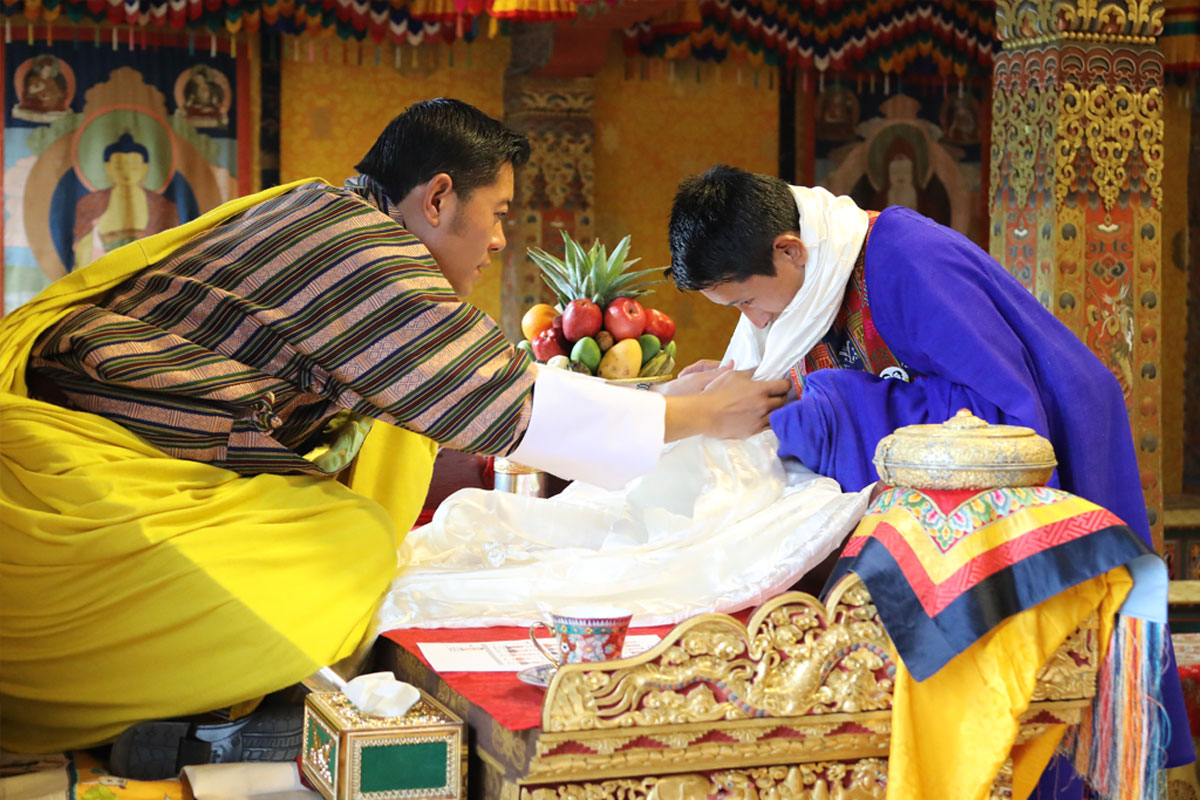
Coinciding with the auspicious Duechen Nga Zom or Lord Buddha’s Parinirvana, I’m blessed in manifolds to receive Dhar (Scarf) from His Majesty the King along with the Hon’ble Thrizin and other Hon’ble National Council members at the Tashichhodzong. While I expected a humble day, I’m doubly honored that the Hon’ble Foreign Minister, Lyonpo Damchoe Dorji along with the folks of Gasa led by Dasho Dzongda and officials showed up in mass and unity to make the very day memorable. Many dignitaries, friends, and well-wishers followed up with Tashi Khadhar, showering me with ‘Best Wishes’, ‘Tashi Delek’, ‘Congratulations’ etc…and these ambiances will not fade away anytime soon from my heart and I cherish every single person who showed up in my camp at scenic Trongsa Penlop Restaurant, Thimphu. The great day sealed with another blessing from Zhung Yonten Lopen, Trulku Thinley Rinpoche towards the end of the day. Once again, with ecstasy, joy, and happiness, may I once again thank our generous supporters, electorates and folks of Gasa Dzongkhag.
Thank you.
Gratitude to Gasaps!
- May 16th, 2018
- 2,635 views
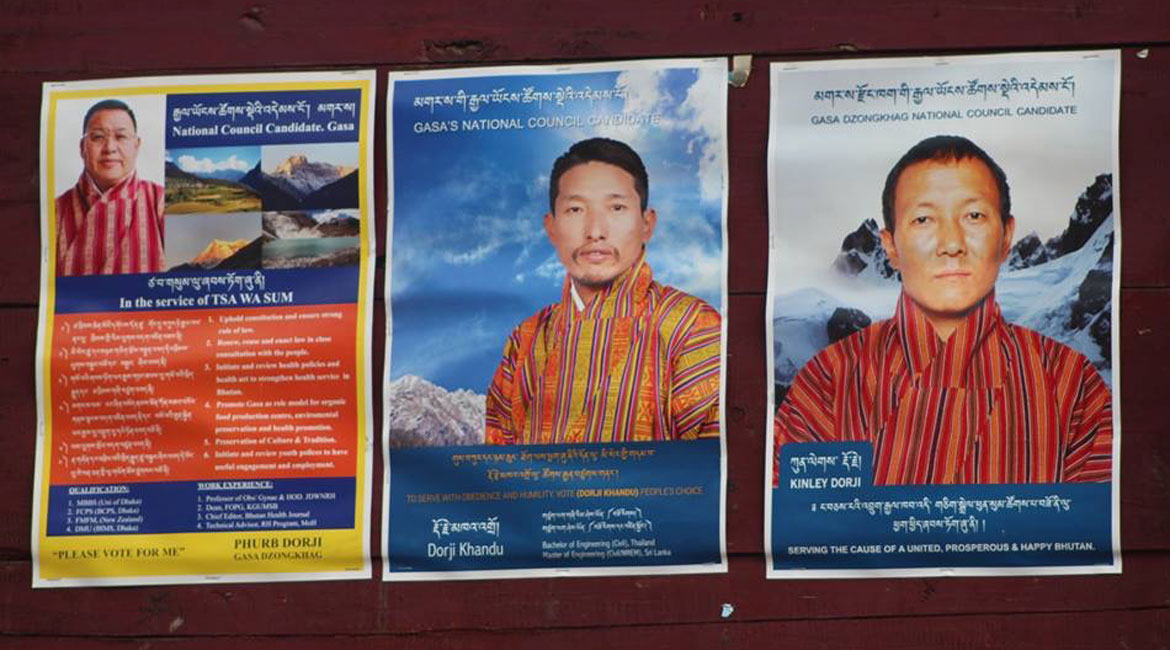
On the first gaze, Laya is a heavenly abode. Indeed, it is, for the place was blessed by no other than the Zhabdrung Ngawang Namgyel. Deep within, while being born human equates us to all our fellow citizens, geographical reality has secluded us for generations and has to go through hardships that only the Highlanders can understand.
Though far-flung and deprived of modern facilities, we the Layaps and Lunaps have our strengths. We are the nucleus of Gasa Dzongkhag for we have a unique culture and tradition to boast; we are born-national-guards due to the strategic location and showered with the utmost care and personal attention from His Majesty the King. We treasure this time immemorial.
Now that our fellow Gasaps have foreseen the importance and inclusivity of Highlanders in the overall development of Gasa Dzongkhag with potential ripple advantages to Khatoed and Khamed Gewogs, the 2018 National Council Election verdict came in my favour, all with voter’s wisdom.
Honestly, by maturity, I must admit that the said two Gewogs produced two acclaimed contenders – a former Member of Parliament and a renowned doctor. To them, I pause to owe my most profound appreciation. Also, unwavering moral and physical supports came in an avalanche from Khatoed, Khamed, Lunana, and Laya and for which I commit to reciprocate with obedience and humility. Sea of well-wishers, friends, and family flooded in to support me, and I remain highly indebted to you all.
Meantime, I would like to congratulate all the NC elects and look forward to working with you all.
Thank you.
Browse Category
- Gasa Issues (11)
- National Issues (14)
- Personal (3)
- Perspectives (7)
- Speeches (2)



